- Skip to primary navigation
- Skip to main content
- Skip to primary sidebar


Five reasons why you should visit Arles, Provence’s surprising gem
May 9, 2019 by Steve Ertrachter 1 Comment
When I asked my late 97-year-old Father-In-Law about his years of military service in Europe during WWII, his most interesting memory was visiting Arles and Southern France. I had never heard of Arles prior to this point. After research, I discovered that Arles has been visited by Julius Caesar, Vincent Van Gogh, Paul Gauguin, Pablo Picasso and other notable figures in its history. Caesar would have called it Colonial Julia Paterna Arelatensium but today it is called Arles. I am in love with this city as this is my second trip in the past two years. I hope that this blog inspires you to visit Arles!
Disclaimer: We do not condone bullfighting.

Arles offers amazing sites, foods, nature, art, and culture. Arles is located in Provence, which is located in Southwestern France. Although Nice is more famous, Arles offers countless delights for history lovers as well as nature lovers away from the crowds in Nice.
- 1 Roman Historical Sites
- 2 Discover Van Gogh’s connection to Arles
- 3 Explore nature in Camargue National Park
- 4.1 Easter in Arles
- 4.2 Other festivals in Arles worthy of note
- 5 Eat Well in Provence
- 6 Additional notes about Arles
- 7 Have you visited Arles, France?
Roman Historical Sites

Arles has many Roman ruins throughout the city which offers an amazing opportunity to see world-class archeological sites without the huge crowds that you might encounter in Italy.
The Arles Arena dates back to 90 A.D. and has 20,000 seats. It is still in use today. On my first visit, I was able to walk on the sand where the Gladiators fought 2,000 years ago. I also attended a bullfight during the Easter Festival. It is hard to describe the feeling of sitting in an arena dating back two millennia. Today, the Arena is in great shape and hopefully will be in existence for another 2,000 years. It is listed as a UNESCO World Heritage Site. Both Vincent Van Gogh and Pablo Picasso painted the Arena in their paintings.
The Theatre Antique dates back to the 1 st century. This is where Romans watched plays and attended other cultural events. Today, classical performances are held at the Theatre during the summer. Anyone can tour the Theatre, as I did, and still be amazed by the structure of 33 rows and imagine events being held in ancient times.
The Ancient Obelisk is found in Place de la Republique. It dates back to Roman times and is a landmark in front of the center of town. Today, local merchants sell art, food, clothes and other items in the square.
Discover Van Gogh’s connection to Arles

Vincent Van Gogh moved to Arles in 1888. Many paintings had Arles as a subject by Van Gogh. One theory about Van Gogh cutting his ear off was that he saw the Matador cut off the ear of the bull while attending the Arles Arena. He also stayed in a local hospital for his mental illness.
Some of the sites associated with Vincent Van Gogh in Arles are still today visible including the Arena, The Bridge of Langlois, Saintes-Maries de la Mar, Musee Reattu, Cathedral Saint Trophime, and many others. Sadly, some sites have disappeared including his residence.
If you are interested in art, many websites display Arles and the actual locations of Van Gogh’s paintings. It is fantastic to physically them. The Tourist Board offers information about a walking tour “In the footsteps of Van Gogh.”
Explore nature in Camargue National Park

The Camargue is a National Park made up of a marsh preserve located outside of Arles between the Mediterranean Sea and Rhone River. It is protected with strict regulations where wild bulls, horses, storks, flamingos, and birds thrive. It is one of France’s major wetlands and offers a unique opportunity to experience true nature a short distance from Arles. It is best visited in spring and avoided in summer due to the mosquito population. There are many ways of seeing the Camargue including using a tour guide (my option.) For more information about bird watching in Camargue National Park, I recommend this independent travel guide to Camargue National Park .
We ended up hiring a tour guide that we met at the tourist office. Our tour was conducted by an experienced guide in an SUV since parts of the road were muddy. Without the guide, we would have missed so much information about the Camargue. If you prefer traveling in a different manner, horseback riding or biking is also available for seeing the Camargue.
One surprising stop was the town of Saintes Maries de la Mer that is the largest town in the Camargue. There is a 1,000-year-old church, a great beach, countless restaurants, and shopping in the town. In May, Roma people have a large festival in the town, which I highly recommend.
Festivals in Arles
Easter in arles.

Beyond being a religious holiday, Easter in Arles has a number of traditions, which date back hundreds of years. Throughout the city, you’ll find strolling bands playing music from flamenco to Lady Gaga. Also, there are many flamenco dancers performing throughout Arles.
Although many events happen in Arles during the four-day period surrounding Easter, I was advised to avoid the crowds as the best days are the first and the last. During the festival, the hotel and food prices in Arles remained unchanged from non-festival periods.
In the mornings, there is an Encierro where local people test their courage by running with 8 bulls around the square for one hour. In the evenings, there is a Bandido Finale, where bulls run through the streets. The bulls are escorted by guardians (French cowboys). In the morning and afternoon in the Arena, there are bullfights. These events are best avoided for anyone who is an animal lover. ( We do not condone bullfights. )
Other festivals in Arles worthy of note
There are many festivals held throughout the year including the Course de Satin dating back to 1529 with horse racing. The Rice Festival is held at the end of summer and celebrates the crop and worth visiting Arles for!
Eat Well in Provence

Provençal food is famous for its freshness. Being so close to the Mediterranean, Arles has seafood and fish that is delicious and readily available. Local French wine cost a few euros per glass although a better buy has to be getting a bottle or half a carafe to share with dinner!
While in Arles, I tried many of the many famous dishes of Provence. One of my favorite dishes was the ratatouille that is made with eggplant, zucchini, and other local vegetables. Many restaurants also specialize in chicken dishes cooked in. I also tried the fresh Artichokes for lunch that was fantastic. The chefs excel in using local ingredients with flair. Be prepared to wait since the food is cooked after ordering. Be patient.
Many restaurants also serve local French cheese with the meal. One day, I went to the market and the oranges were spectacular. Perhaps, my favorite meal is the Salad Niçoise. One small restaurant that was great was the L’ Amendier with a great plat du jour that included tuna, vegetables and wine per person cost 17 Euros for dinner (2019).
Additional notes about Arles
I stayed at a great 3* hotel called Hotel le Calendal very close to the Arena and theatre that I stayed at. Although it’s touted as a three star hotel, I believe that it should be rated as a 4* hotel for its value and hospitality. The managers told me that Rick Steves stays in the hotel when in Arles.
I did not find it difficult to get around Arles without speaking fluent French. Of course, being able to speak a few words went a long way towards communicating in restaurants, streets, but do not worry if you forget your high school or college French as the locals are friendly!
Have you visited Arles, France?

About Steve Ertrachter
New Yorker–born and raised. Lover of tennis. Curious. Frugal and independent traveler who believes that travel yields an understanding of different cultures. 10% of the magic behind Wanderlustingk.
Reader Interactions
May 14, 2019 at 11:54 am
Arles is such a wonderful city indeed! As for the festivals there, I would add “Les Rencontres de la photographie d’Arles”, a huge photography festival that has been held in the city since 1970. It’s really big and some of the best photographers in the world gather there and have their work shown to the public. If you’re into photography, it’s a major event to attend. The opening is in July but I think the exhibitions run until September.
Leave a Reply Cancel reply
Your email address will not be published. Required fields are marked *
- The Netherlands
- New York State
- Other European destinations
- Work With Me
- Disclosure and Privacy Policy
- Jeju SEO Tool: Free SEO Writing Tool
You can unsubscribe anytime. For more details, review our Privacy Policy.
You have successfully joined our subscriber list.
TreasureHunter USA Inc. 251 Little Falls Drive Wilmington, Delaware 19808 +1 (915) 4632387 EIN 88-2174128
www.wanderlustingk.com is a participant in the Amazon Services LLC Associates Program, an affiliate advertising program designed to provide a means for sites to earn advertising fees by advertising and linking to amazon.com. As an Amazon Associate, we earn from qualifying purchases. We also participate in other affiliate programs
www.wanderlustingk.com all rights reserved © 2023 | Privacy Policy | Cookie Policy |

How to Spend the Perfect One Day in Arles, France (+14 Best Things to do)
- January 23, 2024
- by Jenoa Matthes
Planning to spend one day in Arles? From ancient Roman ruins to the sites that inspired many of Vincent Van Gogh’s paintings, there are so many incredible things to do in Arles in one day.

Located in the heart of Provence, next to the Rhône River, Arles is one of the most unique cities in the region. This is one our favorite places to visit in Southern France for its mix of ancient Roman architecture and classic French culture. We’ve visited 3 separate times and just can’t seem to get enough!
In this article, we are sharing the best things to do in Arles in one day, including a Van Gogh walking tour, visiting the historical Roman monuments, going to a museum or two, and more!
One Day in Arles Overview
Here is an overview of the most significant sites to see during your one day in Arles, including the Roman Ruins and the history of Van Gogh in the city.
Roman Ruins in Arles

Arles became an important Roman colony in the 1st century BC.
During this time period, many Roman structures were built and several of them are still standing today. You can visit 6 of these monuments, and they are all within walking distance around Arles.
These Roman monuments were recognized as UNESCO World Heritage sites in 1981.
Here is a list of all of the Roman monuments you can visit in Arles:
- Roman amphitheater
- Roman Theater
- Baths of Constantine
- Saint-Trophime Cloister
- Cryptoportiques
- The Alyscamps (Roman and medieval graveyard)
You should have plenty of time to see all of the Roman monuments in one day. If you need to pick and choose, then we recommend visiting the amphitheater, Roman Theater, Saint-Trophime Cloister, and the Alyscamps.
Van Gogh in Arles

Vincent Van Gogh spent 14 months in Arles between the years of 1888-1889. He created over 300 paintings during this time where he found inspiration from the Provencal landscapes and Arles itself.
One of my favorite things to do in Arles is the Van Gogh self-guided walking tour. This tour will take you to many of the places that he painted, including the cafe from his painting “Le Cafe La Nuit.”
You can download the walking tour guide here , or you can pick one up from the tourist office in Arles.
The Langlois Bridge
Van Gogh painted the Langlois Bridge many times during his stay in Arles. You can see it in the photo above. To visit the bridge, it’s either a 40-minute walk from the center of Arles or a 12-minute drive.
Best Arles Walking Tours
Want to learn about the Roman monuments and history of Van Gogh in Arles with an expert Guide? We recommend these private tours to make the most out of your one day in Arles.
Half-day Private walking tour – On this tour, you’ll spend 4 hours exploring the city’s most historical sites, including stops at almost all of the Roman monuments. Admission to the sites is included on this tour!
2-hour Private Walking Tour – This tour will take you around the city as you learn about its history and significance. You’ll stop at the Roman amphitheater and explore Van Gogh’s life in Arles. Admission to sites is not included in this tour.
14 Best Things to do in Arles
With one day in Arles, you will have plenty of time to see many of the Roman monuments and Van Gogh sites, as well as a museum or two. Here is a list of some of the best things to do in Arles.
1. Roman Amphitheater (Arena)

Whether you arrived by train or by car, head over to the Roman Amphitheater and start your day off here.
This arena was built in 90 AD and once held 20,000 spectators. That’s about 30,000 less than the colosseum in Rome to give you an idea of its size – it’s a bit smaller but still an incredible feat no less. Spectators once gathered here for gladiator battles and chariot races.
You’ll notice two towers on either side of the arena. The towers were added on in the 5th century when the arena was transformed into a medieval fortress.
Nowadays, the arena hosts bullfights and theatrical performances.
2. Roman Theater

The Roman Theater sits adjacent to the arena. This theater was built one century before the arena in 1st century BC when Augustus was Emperor.
The Roman theater once held 10,000 people and is used today to host many theatrical and musical events.
3. Saint – Trophime Cloister

The Saint-Trophime church was completed in the 15th century and is a Roman-Catholic church.
You can visit the cloister inside where it displays incredible sculptures on the columns depicting many biblical scenes.
4. Baths of Constantine

The Roman Baths of Constantine in Arles, France are a stunning example of ancient Roman architecture. Built around the 4th century AD during the reign of Emperor Constantine, these baths were designed to provide public bathing facilities for citizens and visitors alike.
The complex features several distinct areas such as hot and cold swimming pools, saunas and massage rooms. The walls are adorned with intricate mosaics depicting mythological scenes from Greek and Roman mythology.
These baths remain an impressive testament to the engineering prowess of the Romans who constructed them more than 1,600 years ago.
5. Cryptoporticus

The Cryptoporticus is an underground passageway dating back to 1st century BC, during the Roman Empire. It is a subterranean structure located beneath the city of Arles, France.
The purpose of this ancient underground passageway was to provide an efficient and secure means of transporting goods from one part of the city to another. This remarkable engineering feat featured a series of arched vaults and is supported by pillars made from stone blocks.
6. Place de La Republique

The Place de la Republique is the main square in Arles. It features a 4th century obelisk that is another reminder of the Romans influence on the city.
Surrounding the square you’ll find many shops and cafes, as well as the Saint-Trophime church and the town hall.
7. L’Espace Van Gogh

L’Espace Van Gogh was once a hospital that was made famous by Van Gogh. Van Gogh stayed in this hospital twice after he cut off his ear during a manic episode.
During his stay at the hospital, he painted two artworks – “Garden of the Hospital in Arles” and “Ward of the Hospital in Arles.”
The exterior of the building still looks the same as it did in his painting back in the late 1800s.
The building is now a community center, and the courtyard is open for visitors to walk around and enjoy.
8. Le Cafe Van Gogh

Make your way to Le Cafe Van Gogh to see the cafe that is in Van Gogh’s “Le Cafe La Nuit.”
The cafe looks almost the same as it did in the painting, so it’s fun to stop by and see it in person.
I personally have not eaten at the cafe and the Google reviews aren’t convincing either, so I can’t recommend eating there. But if you do try it, let us know how it is in the comments.
9. Fondation Vincent Van Gogh

The Fondation Vincent Van Gogh is a non-profit museum that pays homage to Van Gogh’s life and legacy.
The foundation features many artworks by contemporary artists that were inspired by Van Gogh’s time in Arles. It also features many of Van Gogh’s original paintings.
I really enjoyed my time here and would recommend visiting if you would like to learn more about Van Gogh’s life and see some of his artwork in person while you are in Arles.
10. Walk Along the Banks of the Rhone River

Arles is situated next to the Rhone River that runs all the way from Switzerland to the Mediterranean Sea.
Take a moment and walk along the banks of the river and enjoy the views.
11. Wander Through The Streets

The streets of Arles are incredibly charming. One of my favorite activities is to wander around the old streets, visit small shops, grab a pastry or gelato, and just slowly stroll around the town.
I once discovered an art shop tucked at the end of a windy street. I picked up a few art supplies to draw during my time in Provence after being inspired by Van Gogh.
You never know what you’ll discover . . .
12. The Alyscamps
The Alyscamps is a Roman and medieval graveyard located about a 10-minute walk from the arena.
This is also a stop on the Van Gogh walking tour since it was the setting for several of his paintings. It’s a beautiful area to walk around and explore history.
13. The Arles Market

Visiting a market in Provence is a must! The Arles market is open year-round every Wednesday and Saturday morning from 8am – 1pm.
The Wednesday market is much smaller and is located on Boulevard Émile-Combes . The Saturday market has a lot more vendors and is located on Boulevard des Lices.
The market is filled with fresh produce, cheeses, meats, olives, food vendors, clothes, and much more. If you have time, I would highly recommend stopping by to experience a market in the South of France!
14. The Yellow House
The “yellow house” was the studio and residence of Vincent Van Gogh during his time in Arles. The house is no longer there, but the building that was behind the yellow house in the painting is still there.
One Day in Arles… if you have more time
If you are left with more time on your day in Arles, then here are a couple of museums you can visit.
- Reattu museum – A fine art museum with contemporary artworks, photography, and drawings by Pablo Picasso
- Arles Antiques Museum – Displays many antiques and artifacts from the Roman period in Arles.
- LUMA Arles (Parc des Ateliers) – Located just outside of the city center, this is a unique space that hosts modern and contemporary art exhibitions.
Arles Discount Passes

We highly recommend purchasing a discount pass for your one day in Arles. You’ll be able to get access to most of the sites in a city for a very reasonable price!
There are two passes – Pass Avantage and Pass Liberte.
Pass Avantage – this pass gives you one entry into each of the monuments and 3 museums. Cost: €16
Pass Liberte – this pass gives you entry to 1 museum, 4 monuments, and the Reattu museum. Cost: €12
You can buy these passes directly from the tourist office in Arles when you arrive.
Note: these passes do not include entry into the Vincent Van Gogh Foundation.
Les Rencontres d’Arles
One of the best things to do in Arles is to attend Les Rencontres d’Arles , an annual photography festival held during the summer months of July – September.
If you are visiting during these months, then you can plan ahead and attend an exhibition, a workshop, or a performance that is held during the festival.
For more information, visit the official website of the event.
Tours to Arles from Provence

Arles is a fantastic day trip from nearby Provencal towns, such as Avignon and Marseille.
We love doing guided tours when we travel because it’s a great way to take a deep-dive into the history of a city and gain a new perspective on the place.
Here are a couple of tour options we recommend:
- Day tour from Marseille: Follow the Steps of Van Gogh – a 7.5 hour private tour from Marseille that takes you to the most significant places that Van Gogh painted and lived in Provence. You’ll visit Arles, Les Baux-de-Provence, and St-Remy-de-Provence on this tour.
- Day tour from Avignon: Art and History in Provence – an 8.5 hour group tour taking you to the most famous Roman monuments and Van Gogh sites in Provence. This includes a visit to Arles, Les Beaux-de-Provence, Nîmes, and the Pont du Gard.
Getting Around Arles

Arles is a very walkable city. Everything is within a 10-15 minute walk, and the city is so charming that you’ll want to explore the streets as much as you can.
For example, the Roman amphitheater to the Fondation Vincent Van Gogh is only a 7-minute walk.
One Day in Arles Map
To help you get around during your one day in Arles, here is a map of all of the sites highlighted in this itinerary.
Select the icon on the left with arrow to view a list of all of the sites. On your phone, select the box icon on the right and the map will open up on Google Maps.
How to Get to Arles

Getting to Arles By Car
Renting a car is a great idea for your trip to Southern France! We’ve rented a car almost every time we’ve visited Provence because it’s the most convenient way to get around the region. It usually ends up being cheaper than taking the train everywhere as well.
We recommend Discover Cars for car rentals in Europe. It’s convenient, reliable, and easy to use, plus it always has the most competitive pricing.
Arles is located only 1 hour and 15 minutes Northwest of Marseille and 45 minutes South of Avignon. It’s a perfect day trip from one of the larger cities in the area.
Getting to Arles by Train
Arles is pretty centrally located in Provence, which makes it easy to access by train.
The train from Marseille to Arles takes around 45 minutes to 1 hour and costs around €32 round trip. The train from Avignon takes 30 minutes and costs around €17 round trip.
To purchase your train tickets, use the SNCF Connect website .
Best time to visit Arles
Arles is beautiful year-round, but the city really comes to life during the summer. With Les Rencontres d’Arles, markets, and other festivities, there is a lot happening from June to early September.
Of course, most people want to visit during this time, so expect higher prices and crowds in the peak summer season.
For a more affordable and more calm experience, visiting Arles during the shoulder seasons is a great idea. April to May and September to October are all wonderful times to visit, plus the weather is quite pleasant during this time as well.
Where to Stay in Arles
- Luxury hotel: L’Hôtel Particulier | This gorgeous 5-star hotel is an oasis in the center of Arles. With modern rooms, A/C, and a pool, it has everything you need for a comfortable stay.
- Boutique hotel: Maison Volver | This charming hotel features a private outdoor terrace and charming rooms, making it a great pick for your stay in Arles.
- Mid-range hotel: Hotel Spa Le Calendal | Located in the center of Arles, this hotel features nice rooms with spa access.
- Budget hotel: Hôtel de l’Amphithéâtre | This affordable hotel has everything you need for an enjoyable stay and is located very close to the ancient Arles Amphitheater.
One Day in Arles Frequently Asked Questions
Is one day enough for arles.
Yes, one day is plenty of time to see the main sights in Arles. If you’re looking for a good base for day trips around Provence, then Arles is a great spot to stay for a few days while exploring the region.
Is it worth visiting Arles?
Yes! Arles is a beautiful city with ancient ruins and a fascinating history. Visiting Arles for a day or more is well worth it.
Which is better Avignon or Arles?
We’ve spent a lot of time in both cities, and they are both worth visiting. If you have the time, try to visit each for a day.
Final Thoughts: Best Things to do in Arles
From its historical sites to its modern cafes and boutiques, Arles is a city full of culture and activity. Whether you’re looking for an unforgettable one-day experience or planning an extended stay in the south of France, there are so many things to do in Arles and Provence.
There’s a reason it’s one of our favorite towns in Southern France, and we hope you love it too!
Let us know about your experience in Arles or if you have any questions in the comments below!
More information for your trip to southern France
- One Day in Aix-en-Provence
- Best Day Trips from Avignon
Pin For Later:

2 COMMENTS:
Hi! How do you recommend getting from AIX to Arles? We we take an uber back and forth? Or is there a good site for booking car service?
You can get from Aix-en-Provence to Arles in 2 hours by train. Take the train from Aix Centre to Arles with a stopover at Marseille St Charles station. Tickets can be purchased at the train station, or online at SNCF . Just make sure to search from Aix-en-Provence Centre station – not the TGV station because that’s a few KM outside of the city center.
Unfortunately, I do not have a contact for a private car service in Provence. You could rent a car in Marseille or in Aix, it’s quite easy to get around the region by car.
Let me know if you have any other questions.
Best, Jenoa
Leave a Reply Cancel reply
Your email address will not be published. Required fields are marked *
Save my name, email, and website in this browser for the next time I comment.
Copyright © 2024 | THE TRAVEL FOLK

Home » Travel Guides » France » 15 Best Things to Do in Arles (France)
15 Best Things to Do in Arles (France)
In Roman times Arles was one of Gaul’s most venerated cities, home to more than 30,000 people and furnished with monuments that remain in place today. On a multi-site pass you can quench your thirst for Roman wonders and then be amazed by the works of art they left behind at the city’s museum.
Much later, Arles was where Vincent van Gogh spend a year in 1888, completing many masterpieces of scenes you can visit around the city. You could also strike out into the mythic Camargue, a land of wild horses, fighting bulls as well as widescreen lagoons and salt-pans sweeping out to the Mediterranean.
Lets explore the best things to do in Arles :
1. Amphitheatre

Arles’ marquee attraction is the oval arena where for more than 400 years the ancient populace would have been entertained by gladiators and chariot races.
It was modelled on Rome’s coliseum and was built a couple of decades after in 90AD. When you come, note the clever touches, like stairways regularly spaced around the arena to manage the flow of spectators in and out.
The arena is still part of the city’s cultural life, holding bullfights and concerts.
On the outside you may notice towers, and these are medieval vestiges from the arena’s time as a citadel, filled with more than 200 houses.

Arles’ theatre is still a performance venue, more than 2,000 years after it was constructed.
The lower tiers of the cavea are all still here, and in Roman times this would have had additional terraces and been able to seat as many as 10,000 spectators.
On the left side of the stage the south tower gives an indication of how high the cavea would have been.
Behind the stage are two columns, labelled “Les Deux Veuves” (The Two Widows) and they are part of what would have been a gigantic backdrop that included a three-metre-high statue of Augustus.
At Arles’ Museum you can see a large model of what the theatre would have looked like in its heyday, and how the two columns would have fitted into the scaenae frons.
3. Musée de l’Arles et de la Provence Antiques

The ideal complement to your tour of Arles ancient monuments is this museum where many of the artefacts recovered from these archaeological sites render life in Roman Arles in sparkling detail.
It’s a playground for amateur historians, overflowing with sculptures, mosaics, early-Christian sarcophagi and decorative fragments from buildings like the theatre.
One of the newer exhibits will set your pulse racing; a Gallo-Roman barge discovered in the Rhône in 2004 and now on show surrounded by its cargo of amphorae.
You’ll also be awed by the statue of Augustus that once stood in the theatre’s scaenae frons.
It measures more than three metres, with a torso found in 1750 an a head unearthed nearly a century later in 1834!
4. Van Gogh Heritage

Vincent van Gogh came to Arles in 1888 and lived here for a year, at a time when his mental health was deteriorating . As we’ll see, he completed some of his most acclaimed paintings in the city, like The Night Café, Café Terrace at Night and Van Gogh’s Chair.
But it was also where he mutilated his left ear.
The Tourist Office organises a Van Gogh Walking Tour, which will show you around all of the locations you may already know from the 300 paintings he made in the city.
On the itinerary is the Fondation Van Gogh, which tells the story of his time in Arles and how his style changed, and holds temporary exhibitions of his work.
5. Church of St. Trophime

This church on Place de la République belongs to the city’s UNESCO site, and you’ll know why when you get close to the western portal.
Here you’ll be met by one of the most celebrated sets of romanesque sculpture, carved no later than the 1100s.
They show all sorts of biblical scenes like the the Apocalypse and the Gospel of St. Matthew.
If you look up at the tympanum you can identify Jesus seated above the 12 apostles, beneath some 40 angels in the archivolt.
The interior has early-Christian sarcophagi, 13th-century plaques and epitaphs, baroque paintings and nine Aubusson tapestries from the 17th century.
6. Cloister at St. Trophime

The church’s cloister was built at the same time and deserves a separate entry as it’s one of Arles’ indispensable sights.
This part of the church was for the church’s canons, whose routine resembled that of monks, removed from life in the city.
The most captivating part is the northern and eastern galleries of the cloister, built much earlier than the southern and western ones: This is because work was halted when Counts of Provence chose Aix as their seat of power instead of Arles.
You have to study every pillar in detail as each one tells a story, whether it’s Jesus’ empty tomb after the transfiguration, Moses meeting God by the burning bush or St. Stephen being stoned.
7. Thermes de Constantin

In the early 300s Emperor Constantine lived in Arelate, and these baths were built around that time although there’s no proven connection to the man himself.
They were excavated in the 19th century and are seen as one of the most complete Roman bathing complexes surviving in France.
The caldarium (hot bath) is probably the most interesting part, suspended over the hypocaust that used to heat it, with three pools one of which is walled by a semi-circular apse with windows.
This room connects with the tepidarium (warm bath) and the laconicum (hot room). The baths aren’t extensive, but will fill you in about another aspect of daily life in Roman Arles.
8. Montmajour Abbey

Minutes northeast of Arles is a medieval monastery set on what used to be an island.
There are several sections to the complex, the oldest being a hermitage cut from the rock in the 1000s, and this is accompanied by a 12th-century cloister and the fortified monastery of Saint-Pierre, which dates to the 14th century.
This final ensemble features the Pons de l’Orme tower, 26 metres high and fitted with crenellations to help defend the monastery against the Free Company, a mercenary army that plundered Italy and southern France in the 1300s.
As the surrounding terrain was marshy, this former island was used as a cemetery: In many instances tombs were hewn from the rock, and these cavities are still visible at this site.
9. Alyscamps painted by Van Gogh and Gauguin

In a city less replete with ancient marvels the necropolis, Alyscamps would be a headline attraction, but in Arles it falls by the wayside of many tourists.
Starting in the Gallo-Roman period it was one of the occidental ancient world’s eminent cemeteries.
As was the Roman style, it was placed along Aurelian Way just before it entered the city and was such a coveted burial site that sarcophagi were shipped from around Europe to be interred here.
By the 300s there were thousands of tombs, three layers deep.
Van Gogh and Paul Gauguin had a tetchy and competitive companionship in Arles, and Alyscamps was the first location that they painted next to each other.
10. Place de la République

Arles’ town hall is on this stately square, as are the churches of Saint-Trophime and Sainte-Anne, opposite each other.
But after exiting Saint-Trophime you’ll find your attention drawn to the monument in the middle of the square.
This is a Roman obelisk that originally stood in the spina (the long central barrier) in Arelate’s circus.
It was found in the 1300s and erected here on a plinth in the 17th-century.
The stone for the obelisk has travelled a long way when you consider the time it was erected and that it measures more than 15 metres.
It’s made of a specific type of granite found in Asia Minor, and most likely Ancient Troy.
11. Place du Forum

There aren’t many signs of the Roman forum that stood roughly on this square, save for fragment of a temple portico integrated into the facade of the Hôtel Nord Pinus.
Now Place du Forum is filled with lively restaurant terraces under the shade of plane trees, and takes on extra meaning because Vincent van Gogh set his easel in northeast corner of the square to paint Café Terrace at Night in 1888. Come in the morning when the tables are empty to spend a moment with the statue of Frédéric Mistral, the Nobel Prize-winning author who lived and worked close to Arles.
12. Musée Réattu

Arles main art museum is named after Jacques Réattu who was born in the city and bequeathed a large collection of his paintings and drawings to the museum when he died in 1833. There are some 800 pieces by the painter, displayed in 12 rooms, and three rooms for Pablo Picasso, who donated drawings in the early 70s.
You can also check out a massive photography collections with contributions by the likes of Richard Avedon and Man Ray, as well as sketches by the fashion designer and Arles native Christian Lacroix.
The building is a former monastery for the Order of Malta, built right next to the Rhône.
13. Cryptoporticus

On a hot day you could descend below the old Roman forum and enter a network of tunnels constructed by the Greeks.
There are three twin tunnels arranged in a U-shape and you might be surprised to see how well they’ve survived the years.
Their purpose is a matter for debate: In other Roman cities, tunnels like these would have been used as granaries, but the ground is too damp here in Arles for that.
So it’s likely they’d have been made to support the monuments above as well as possibly housing the city’s public slaves.
14. Camargue Nature Park

Arles is seen as the capital of the Camargue, and is on the northern reaches of this special region.
You can book a safari tour to venture into this area of low-lying marshes, lagoons, rice paddies and reddish salt pans between the mouths of the Gard and Rhône.
These extend out to the Mediterranean, so the Camargue is famed for spectacular open spaces extending from horizon to horizon.
In this harsh environment the camarguais horse breed lives in semi-feral herds, and is used on farms to help rear fighting bulls for Spain.
The brackish waters of its wetlands offer one of the only habitats in Europe for greater flamingos.
15. Barbegal Aqueduct

A few minutes east of Arles you get an idea of the resourcefulness that allowed Roman cities like Arles to develop.
The Roman Aqueduct of Barbegal is in the Alpilles Regional Park and delivered water from the Alpilles Range to Arles several kilometres away.
The structure is mostly in ruins and you have to use your imagination a little more than at say, the Pont du Gard, but it also was the scene of one of the Roman world’s most creative uses of hydropower: On a craggy rock here are the remnants of an ancient flourmill, which had 16 waterwheels.
So not only could the aqueduct provide water for all of Arles, it was part of a system that could make 10,000 tons of flour a day, enough to feed a third of the city’s population.
15 Best Things to Do in Arles (France):
- Amphitheatre
- 3. Musée de l'Arles et de la Provence Antiques
- Van Gogh Heritage
- Church of St. Trophime
- Cloister at St. Trophime
- Thermes de Constantin
- Montmajour Abbey
- Alyscamps painted by Van Gogh and Gauguin
- Place de la République
- Place du Forum
- Musée Réattu
- Cryptoporticus
- Camargue Nature Park
- Barbegal Aqueduct
The 12 Best Things to Do in Arles, France (Roman Arena, Van Gogh & More!)

I recently spent three nights in Arles, after visiting nearby Aix-en-Provence and before heading to (also nearby) Avignon. While most people visit Arles as a day trip from Avignon, I was really glad that my itinerary allowed me to have two full days to explore the city, as it is absolutely steeped in ancient history, modern art and Provençal culture. There’s something magical about climbing to the top of Ancient Roman arena, as the wind blows lavender-scented air through your hair and you look down at the very same river that once inspired Vincent Van Gogh to paint “Starry Night”.
Things to Do in Arles
Many of the best things to do in Arles are included in the Arles City Pass, which you can pick up at most of the sights below, or at the Tourist Information office. I recommend buying the Advantage Pass, which includes access to nearly all of the paid attractions that I’ll mention below. At only €16, and valid for six months (one entry per site), it’s a great value.
1. The Roman Arena of Arles (Ampitheatre)

Of course, the most breathtaking thing to do in Arles is to visit the world-famous Roman Ampitheatre, where you can ascend the ancient towers to take in stunning views of the arena, the city and the surrounding region. It’s amazing to imagine that gladiators once fought in the ring here, while more than 20,000 people could have sat in the stands to cheer them on.
The arena is included in the €16 Advantage Pass, which also includes access to four other historical monuments and several museums. You don’t need to reserve a time slot to enter, and if you happen to arrive when there’s a queue, I would just recommend that you come back later.
2. Spectacles of the Camargue

Unfortunately, it’s still possible to attend bullfighting events in the arena of Arles. Although the most famous matches occur during the annual Feria d’Arles, there are occasional shows throughout the summer (or, there were when I visited in 2022). I was not comfortable seeing a bullfighting show, as it doesn’t align with my ethics or my beliefs about animal cruelty.
Fortunately for me, there were also other types of shows during my summer visit to Arles. For €14 I got a ticket to a show called “ La Camargue aux Arènes”, which was focused more on the equestrian tradition of the nearby Camargue region. There were a few minutes where they had a bull in the arena, but no bullfighting took place.
To see if there will be any shows in the area while you’re in Arles, check the arena’s website . You can buy your ticket online and then pick it up at the ticket office at the arena, or you buy the ticket on-site. They don’t currently offer digital tickets. For the show that I saw there was no reserved seating; I showed up about fifteen minutes before the gates opened (so, forty-five minutes before the show) and was able to secure a coveted front-row seat in the shade.
Looking for more France travel tips?
Follow Fearless Female Travels on Facebook for actually-useful tips on traveling in France, solo female travel, and more! (No annoying emails – I promise!)
3. LUMA Arles

In a city that is so rich in history, one of the most enjoyable things to do in Arles is to step away from the past for a few hours, and travel forward to the future at LUMA Arles. This brand-new contemporary art complex features a sprawling park dotted with exhibition spaces, including The Tower (shown above) which was designed by Frank Gehry.
Entry to LUMA was free in Summer 2022 (hopefully it will stay that way!) but you do need to reserve a timeslot to enter The Tower. Inside, there are lots of gallery spaces featuring temporary contemporary art exhibits, an elevator that takes you to two floors of panoramic lookouts, and, on your way down, a three-story slide that even adults can use to exit in style!
4. The “Starry Night Over the Rhone” Lookout Point

Only meters outside the city center and the ancient walls, you’ll find Arles’ most famous viewpoint. Here, in 1888, Vincent Van Gogh painted “Starry Night Over the Rhone”, one of his most recognizable masterpieces. To find the exact spot, walk straight from Place Lamartine (the roundabout between the train station and the city center) to the river, then look to your left. Yes, you’ve found it!
The tourist information office in Arles sells maps that will lead you on a Vincent Van Gogh walking tour of Arles, and they have recently made the same maps free online. Click here to visit their site and download the self-guided walking tour in PDF format.
5. Theatre Antique

The little sister of the Arena is the Theatre Antique. Back in the Roman era it could accommodate up to 10,000 spectators; today you’d be surprised to find more than a dozen people wandering around both the theatre itself and the surrounding ruins. The Theatre Antique is included in the City Pass.
Behind the theatre you’ll find the Jardin d’Ete, or Summer Garden. Admission to this public park is free, and it’s a nice place to relax with a bottle of water in the shade provided by the old city ramparts and the many trees.
6. St. Trophieme Cloister & Church

St. Trophieme Church is located in the center of Arles (on Place de la Republique) and, like most churches in France, admission to the St. Trophieme church itself is free. Built during the medieval era, this church is known for its Romanesque sculptures on the front facade. The highlight, however, is the peaceful cloister, which was recently restored with the support of the World Monument Federation.
7. Alyscamp Necropolis

This was a surprising highlight for me! The Alyscamp is a Roman and medieval graveyard located about ten minutes outside the center of Arles (near LUMA). Apparently it was particularly famous during the late Roman era, probably due to a legend that Christ had attended a burial there and left his kneeprint on a sarcophagus. More recently, it was painted by both Van Gogh and Gaughin.
You’ll enter the Alyscamp through the gate (show your city pass) and then walk about 750 meters along the burial path, lined with sarcophagi, until you reach the abandoned Saint Honorat church. At the time of my visit a contemporary artists had installed a moody exhibition in this cavernous space, with gigantic stone balls and sheets of glass placed haphazardly, as though left by the spirits (or aliens!). This is definitely a creepy place, and one of the best things to do in Arles for anyone into dark tourism.
8. The Cryptoportiques
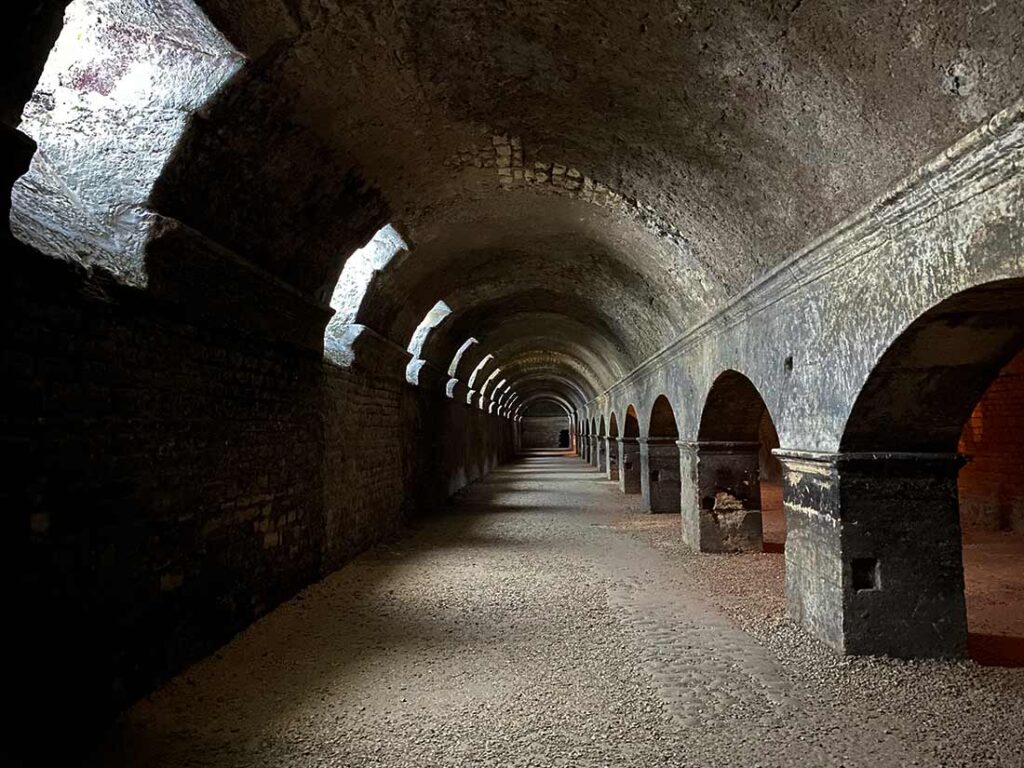
You might be walking on top of the Cryptoportiques and not even realize it! Located deep underneath Place de la Republique, the ruins of this ancient city center date back to about 46 BC. Built underground to support a typical Roman marketplace above, these little rooms would have been used as shops, market stalls and storage. You can duck into lots of little nooks and crannies here (sometimes I was surprised I was allowed to go so far into the deep, dark depths of the rooms!) so I recommend bringing a well-charged phone (for the flashlight!) and study shoes.
Entrance to the Cryptoportiques is included in the City Card.
9. Thermes de Constantin (Roman Baths)

I’m a sucker for spas, so visiting historic bathhouses is always on my travel itinerary. In Arles, the Roman baths are called the Thermes de Constantine, and they date back to the 4th century. You only need ten or fifteen minutes to breeze through the ruins of these bathhouses, where you can still make out traces of the hot and cold baths, the fireplaces and the surrounding buildings. Admission is included in the Arles City Card.
10. Musee Réattu

Artist Jacques Réattu was born in Arles in the 1700s, and during his life he slowly purchased this building, bit by bit, turning it into his home and studio. When he passed away and left most of his body of work to the city, they converted it into the museum that you can visit (with your Arles City Pass!) today. Réattu himself left more than 800 works to the museum, but the collection also features work by Picasso and contemporary photographers. Depending on how interested you are in the temporary exhibits, plan to spend between one and two hours here.
11. Fondation Vincent Van Gogh

Full disclosure: I didn’t get past the lobby at the Fondation Vincent Van Gogh. At the time of my visit, the receptionist told me that they didn’t have any works by Van Gogh on display, and that they didn’t have any exhibits about him in the museum. Because tickets were €10 and not included in the City Pass, I didn’t think it was worth my money. That being said, there may have been a miscommunication there, as many people who visited recently report that they saw two paintings by Van Gogh (still… that doesn’t seem like much to me?).
Technically speaking, this is more of a modern and contemporary art space than a display of Van Gogh’s work. If you’re into contemporary art and don’t have time to walk over to LUMA, this could be a good alternative. Or, if they do bring in a temporary exhibit of Van Gogh’s work, it would be worth seeing as well.
12. Day Trip to Avignon or Villeneuve-les-Avignon

Arles is only seventeen minutes by train from the Avignon Centre station, and trains make the trip between the two cities about once per hour. This means that it’s easy to take a day trip from Arles to Avignon, or to Avignon’s secret little sister, Villeneuve-les-Avignon.
If you arrive by train from Avignon, it’s more or less a straight line through the historic city center to reach the most important sights in Avignon , such as the famous Palais des Popes and the nearby Pont d’Avignon. En route, stop at the Tourist Information office for a city map, which will show you the five museums (all nearby!) that you can enter for free.
If you’d prefer to experience medieval history without the crowds, from the Avignon train station you can take bus #5 to Villeneuve-les-Avignons . Here, a €17 city pass gets you access to five historical sites, including the monolithic Fort Sant-Andr é (shown above) and the tranquil La Chartreuse monastery complex.
Hotels in Arles

In my opinion, the best hotel in Arles has to be Hotel Spa Le Calendal . This hotel is located right beside both the Roman Arena and the Theatre Antique, meaning it’s perfect for exploring Arles on foot. But what makes it better than other Arles hotels? Two things!
First, if you reserve through Booking.com, it’s likely your room rate will include access to the hotel spa (mine did!). It’s a fairly small spa, with just a steam room, whirlpool and cold water rinse, but the amazing thing about the spa is its view directly over the Roman Arena. After a long day of sightseeing, nothing beats coming back to the hotel, taking a dip in the cool pool, and looking out over such an important piece of history.
Second, Hotel Spa Le Calendal has a lovely restaurant and cafe. It’s worth it to pay for the breakfast buffet, which is served in the pretty, shady garden cafe behind the hotel. You can squeeze your own orange juice, help yourself to espresso and fill your plate with typical French breakfast fare like fresh bread, cheese, meat, fruit, yogurt and pastries. The cafe provides guests with complimentary still and sparkling water in a glass bottle that you can keep in your room, then swap out each day (or twice a day, if you’re like me and love to stay hydrated!).
Check Prices & Availability
Restaurants in Arles

I was in Arles for three days, so I had the chance to try quite a few different restaurants for lunch and dinner (oh, and a few ice cream shops too!). Here are the places I would recommend:
- My favorite restaurant in Arles was La Caravelle . This is where I ate the beautiful roasted vegetable and burrata salad shown above, which I followed with their homemade lavender crème brulée. They have a great location beside the river, with a cool breeze and lots of shade.
- I actually ate at Creperie Chez Mam Goz twice: once for their full lunch menu, and a second time for a quick sweet crepe before my train. They serve beautiful buckwheat galettes (one of my top tips for eating healthy in France is to choose the buckwheat option!) and three kinds of Breton cider.
- Another memorable meal was from Cocoricco , a restaurant that serves a fusion of French and South American cuisine. Although they didn’t have many vegetarian options, they had a meal-sized appetizer of foccacia, roasted vegetables, salad and burrata.
- A place with a much better selection of vegetarian dishes (and even a vegan dish!) was Saveurs et Terroirs , beside the arena. The salads here are super-Instagrammable (expect sprigs of fresh lavender to be sticking out!) and everything is cooked to order with fresh, seasonal and local ingredients.
- For ice cream, I tried both RAVI Glaces de Provence and Glaces de Maitre Artisan . They’re on the same block and they both serve a menu that’s about half standard flavors and half provençal specialties like lavender and orange blossom. I preferred Glaces de Maitre Artisan, but it could have been due to my flavor choice.
I love getting out of the big cities and exploring smaller towns in France. Check out my guides to Vichy , Villeneuve-les-Avignons and beautiful French villages .
Planning a trip to France? Pin this post for later!
Things to do in villeneuve-les-avignon | a tranquil escape from avignon, how to go by bus to pont du gard – an easy day trip guide, you may also like, the best things to do in cascais (a..., is madrid worth visiting an honest traveler’s perspective, one day in barcelona, spain – an easy-to-follow..., what is the best time to visit the..., barcelona to paris train – tips for traveling..., visiting the alcazar of segovia – 10 things..., how to use the calgary transit app, the best places to visit in mumbai in..., a 7-day kerala itinerary (solo female traveler approved), how to visit the bharatpur bird sanctuary in....

Top Attractions In Arles, An Underrated Gem in Provence
Arles is a UNESCO site and a must see town in southeastern Provence. It’s filled to the brim with Roman treasures, fantastic art, and colorful pastel houses.
Arles is a sun-kissed, biscuit-colored town built on a cliff overlooking the Rhone and is the gateway to the Camargue.
“Happy as a cicada,” Van Gogh sliced off his ear in Arles. Picasso loved Arles and frequented the bullfights at the Roman Amphitheater.
When I last visited Arles, I had just seen the hip hop wunderkind musical Hamilton . It reminded me of Arles.
Odd you say? Yes, most certainly. But bear with me.
Both Hamilton and Arles feature an intriguing and rare blend of old and new, an intertwining of ancient history and contemporary themes.
In Hamilton, a historic revolutionary era backdrop is layered with musical present. In Arles, a Roman past is leavened with the dazzle of contemporary art and architecture. In both, the duality is quintessential to success.
Most people don’t understand or appreciate the vibe and authenticity of Arles … but they soon may.
Yet, Arles is rarely at the top of or even on most “must see” Provencal sites.
People are busy chasing the Luberon villages , going to Aix-en-Provence (why exactly?), or eating and drinking their way through the Provencal markets.
I kind of get it. I am just naturally inclined to ignore something that is too obviously pleasing.
And I wondered, was the venerated Rick Steve’s fond endorsement of Arles as “unpolished and a little dirty” actually counterproductive? Is he unintentionally driving would be tourists away from a city he loves for its un-obvious beauty?
To find out, I based myself in Arles on a recent trip to Provence, Happily, I was greeted with a tsunami of historical and cultural stimulation. In fact, I think Arles might well become the newest “hot spot” in Provence .
To be sure, Arles is not synonymous with the languid romance and disney perfection of Provence’s small medieval hilltop villages. So if all you want is a tiny cliffhanger, Arles may not suit.
But what the city may lack in the most obvious scenic beauty, Arles makes up for with some of the top attractions in southern France. It seduces with sensuality, Rosé, the smell of lavender, and Roman goodies a plenty.
Throw in a huge dollop of art, two smidgeons of Mediterranean influence and a dash of Italian flavor, and you have an ideal cultural home base for western Provence.
To get oriented in the city, you may want to book a guided walking tour .
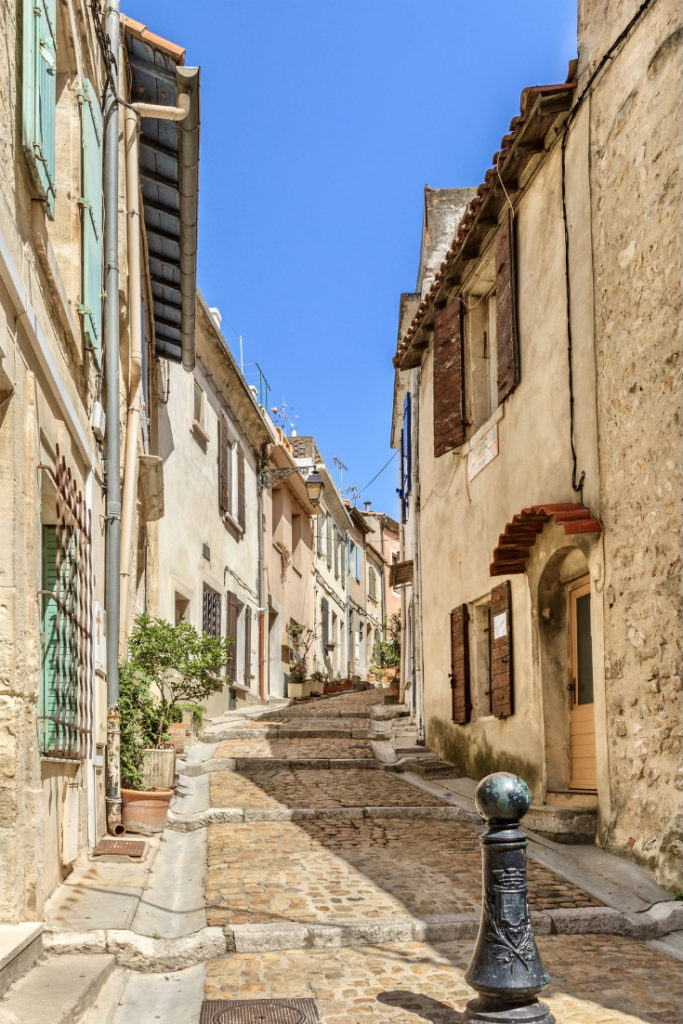
Top Attractions In Arles
1. fondation vincent van gogh.
Fondation Vincent van Gogh , Arles’ fine art museum, is one of Arles’ top attractions. It’s the first stop for art lovers or those on the Van Gogh heritage trail.
Recently opened in 2014, The Foundation is the beautifully restored Hotel Leautand de Danines, a stone mansion off the Place du Forum.
Ironically, you won’t see a lot of Van Gogh — the Post-Impressionist genius who was maniacally prolific in Arles and loved its sun-drenched light. But there are usually several pieces on loan from the Van Gogh Museum in Amsterdam.
Apart from it’s main collection (a Joan Mitchell piece was a favorite of mine) the Fondation has temporary thematic modern art exhibitions.
2. L’Espace Van Gogh
L’Espace van Gogh is the next attraction in Arles that’s a Van Gogh lover’s magnate.
This former hospital is where Van Gogh, often drunk and psychologically impaired, sought treatment after his bloody self mutilation.
In 1974, L’Espace stopped functioning as a hospital and reopened as a cultural center. There’s honestly not much to see here.
But, standing in the lovely courtyard, you may feel like you have stepped into a real Van Gogh painting — “Le Jardin de la Maison de Sante a Arles.”
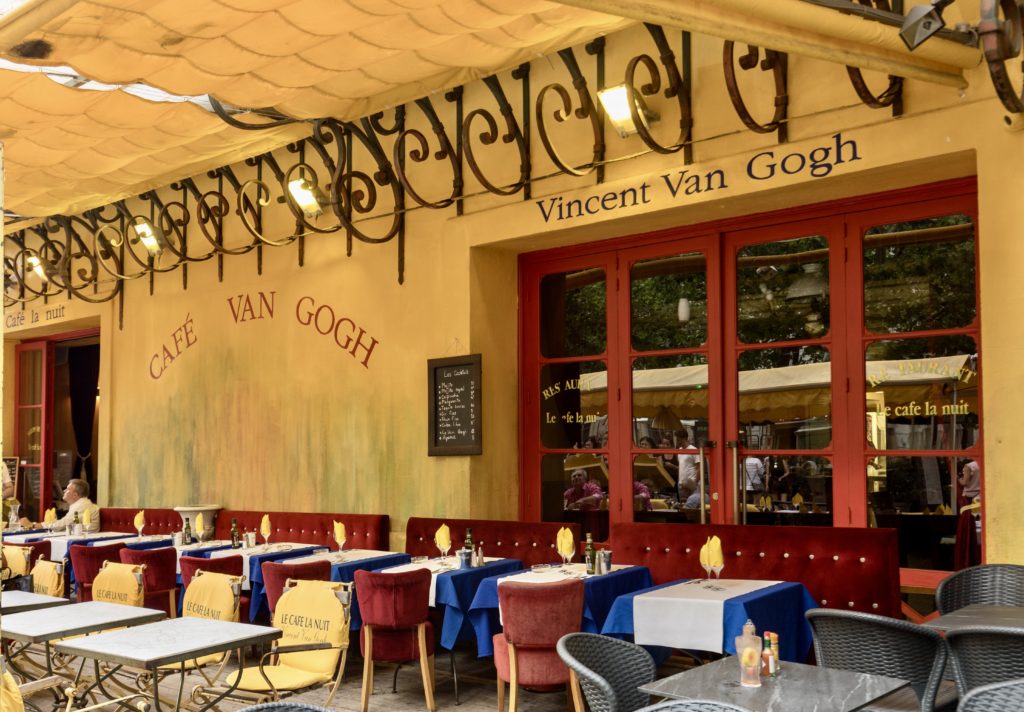
3. Cafe Terrace
Van Gogh’s Café Terrace at Night was painted in Arles. It’s housed in the Kröller-Müller Museum in the Netherlands, which is home to the second largest collection of Van Gogh paintings.
The original Café Terrace, which inspired this painting, still operates at Place du Forum. However, it now goes by the name Café Van Gogh. It’s a sort of a mecca for Van Gogh fans and one of Arles’ top attractions.
4. Photography Festival
Arles is also the international capital of photography. It’s home to the oldest photography festival in Europe, Les Rencontres Internationales de la Photographie , which is held there each summer.
Thousands of photographers and cosmopolites descend upon Arles to see cutting edge photography. Since it almost entirely showcases unseen work, the Rencontres is a visionary creative melting pot and has an international impact.
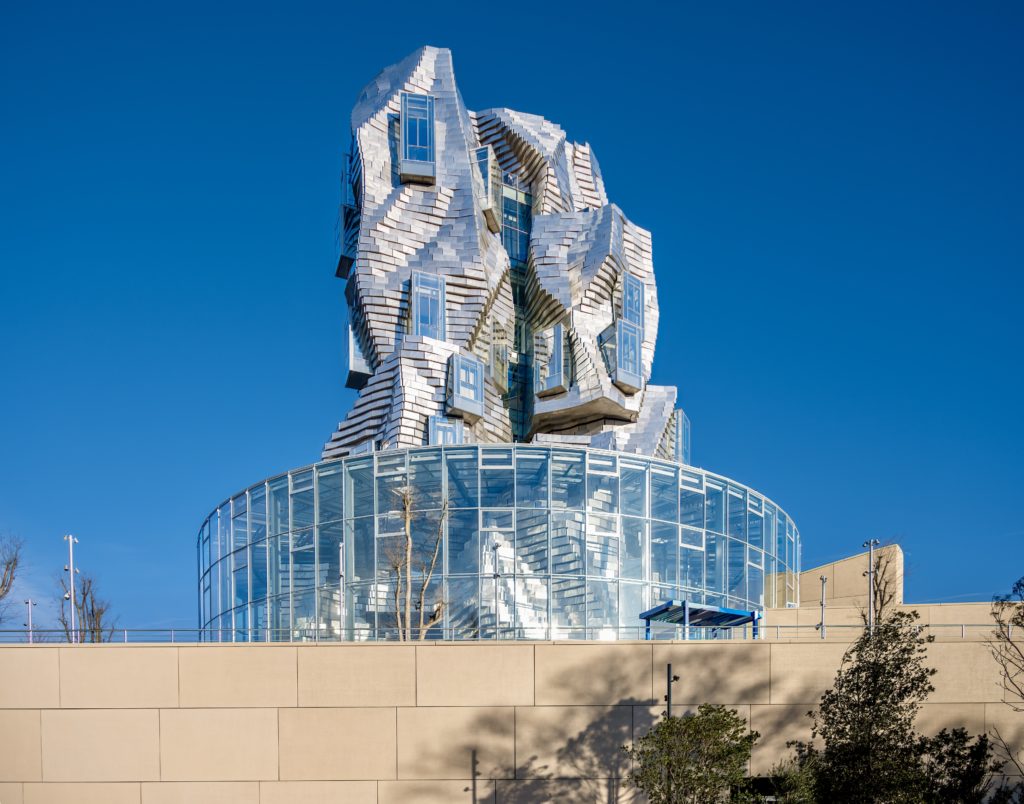
5. Luma Arles
One of Arles’ top attractions with real real wow factor is the game changing Luma Arles . The 27 acre complex is the $150 million art center. It was the brain child of Swiss art patron Maja Hoffman.
Luma Arles is half art museum, half think tank, and all Frank Gehry. the word renowned architect designed the 10 story glass building.
It’s a twisting tower clad in reflective aluminium tiles designed to attract the international art jet set. The building is meant to evoke Van Gogh’s famous Starry Night masterpiece.
Gehry has a reputation as the go to architect for starchitecture projects since his Guggenheim Museum Bilbao opened in 1997. The museum saved the underrated city of Bilbao , metamorphizing it and giving teeth to the transformative effect of art.
In Arles, the hope is that the “Guggenheim effect” will erase, Bilbao style, Arles “gritty” stereotype and usher in a “New Arles.” Luma Arles opened on on June 26, 2021.
Hoffman calls the multi-purpose complex an “archipelago” where the “future is being produced.” Luma Arles has exhibition spaces, artist and rehearsal studios, installation spaces, an archive, restaurants, and cafes.
6. Musee Reattu
Musee Reattu is a splendid small museum in Arles. The museum is named after the French painter Reattu and located in his house-studio.
The collection features fashion drawings from Christian La Croix, a native of Arles.
You’ll also find drawing by Picasso. In 1971, two years before his death, Picasso sealed his attachment for Arles by bequeathing the museum 57 drawings.
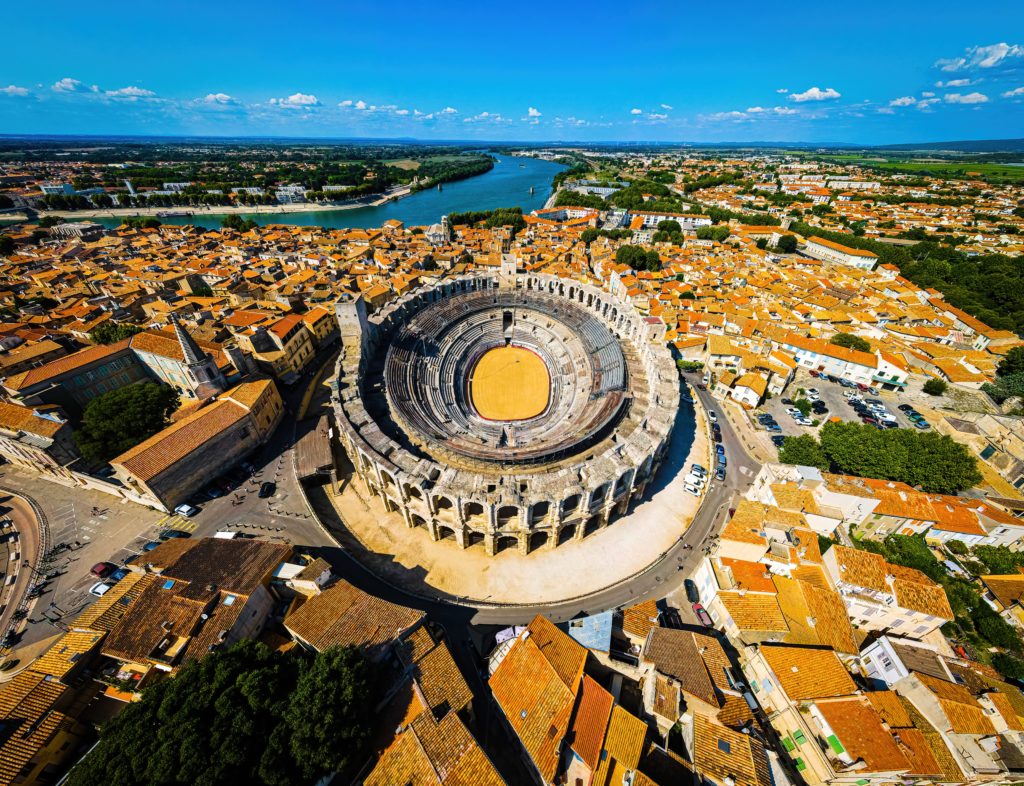
7. The Amphitheater
Now that we’ve covered Arles’ top cultural attractions, let’s get down to the things that make Arles a UNESCO destination.
Like nearby Nimes, Arles’ amphitheater was inspired by Rome’s Colosseum and is largely intact. Built in the 1st century when Augustus reigned, the two tiered arena can hold up to 25,000 people.
The amphitheater is beautifully preserved. Much of the structure’s original architecture remains, including terraces, galleries, and the original Roman drainage system.
Today, the arena hosts spectacles and concerts befitting a cultural hot spot. It also features Camargue-style bull runs and controversial bullfighting, which while beloved by Picasso is controversial or illegal elsewhere in France.
8. The Roman Theater
Another top attraction in Arles is the Roman Theater in the Rue de la Calade.
Like the Arena, Arles’ Roman Theater is of Augustian vintage. With seating for 8,000, it’s as large as the famous theater in Orange France.
While I was there, I was lucky to witness a dance performance at night.
With the lights flickering across the roman stones and the few remaining pillars standing guard in the darkness, I felt catapulted back in time. It was exactly as affecting as it ought to have been.
9. Constantine’s Baths
My next stop was the Baths of Constantine, which date from the 4th century A.D. and were part of the imperial palace of the Roman Emperor Constantine the Great.
Only a small part of the original site is excavated, but it is well-preserved and you can glimpse some of the engineering that supported it.
Roman baths were, of course, an important part of Roman public and social life and are now fittingly part of Arles’ UNESCO classification.
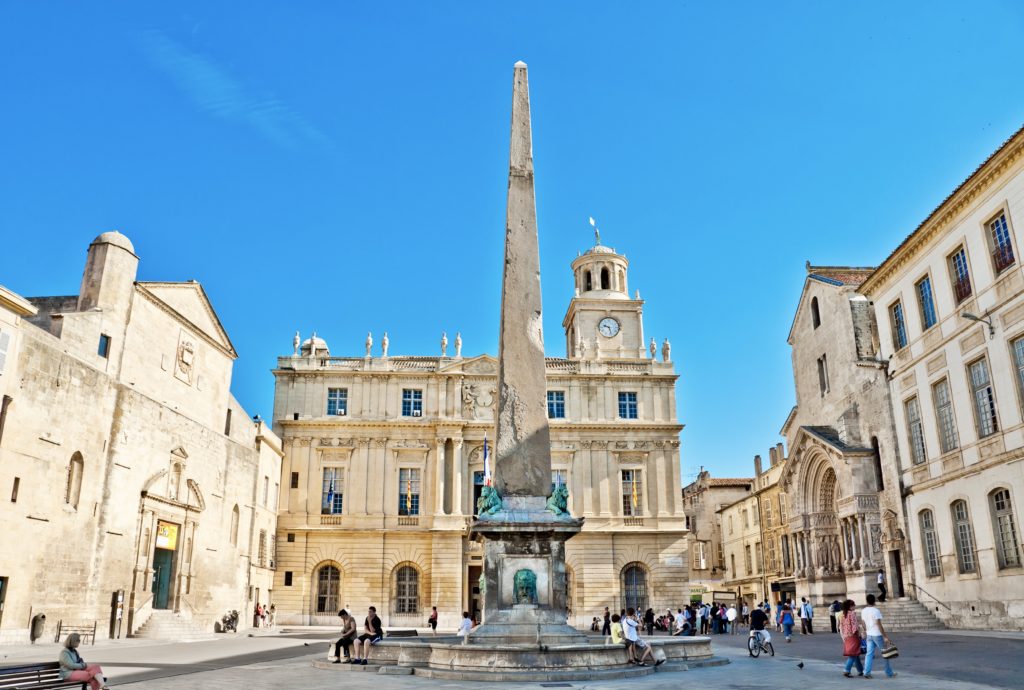
10. Place de la Republique
The place de la République is Arles’ main square.
Some of the top attractions and main monuments are on the square, including the Town Hall and the churches of Saint-Trophime and Sainte-Anne.
In the center is a Roman obelisk. It was discovered in the 14th century and added to the square in the 17th century.
11. Eglise St. Trophime
When the Roman sites are a fait accompli, tucked away in the northeast corner of the Place de la Republique is the Eglise St.Trophime .
Built between the 12th and 15th centuries, St. Trophime is an important example of medieval architecture. It made the UNESCO list in 1981.
The church has an elaborately carved Romanesque portal telling bible stories via sculpture. Inside, it’s austere, but not without adornment.
The church houses some of the world’s finest examples of Romanesque sculpture, including what I call the “approved public stoning” piece.
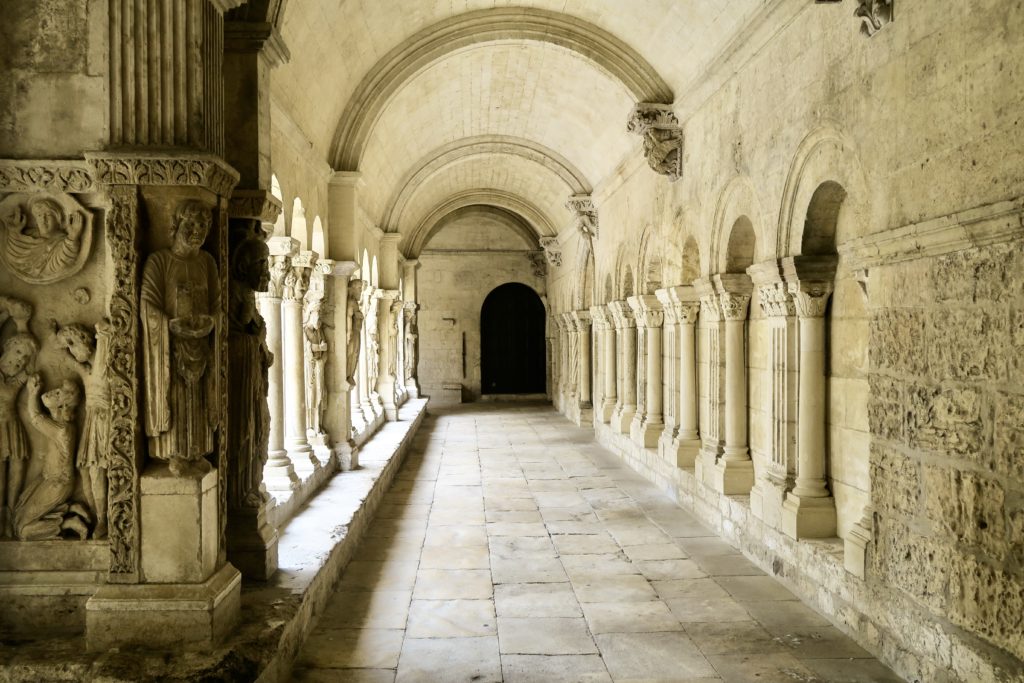
For better or worse, the church has been laser cleaned, wiping away more of the apparently tourist deflecting Arlesian grime.
The church’s cloister, however, is one of Arles’ top attractions. It’s exceptionally well preserved. There’s a separate entrance to visit and you’ll find interpretive displays.
Tip : Entry is on the east side of the Place de la Republique. There is free admission to the church, but the cloister is a small fee.
12. Les Alyscamps: Death and Glitter
Alyscamps is a famous tree-lined Roman necropolis a short distance outside the walls of the old town. It’s near Jardin d’été, shadowed by the Chaine des Alpilles Mountains.
Dating from 241 BC, Les Alyscamps is a hybrid place, both a lichen covered stone cemetery for former aristocrats and a serene tree-lined promenade for those of more recent vintage.
During the middle ages, it was forbidden to bury the dead inside the city walls for religious and hygienic reasons. Cities like Arles created suburban “Aurelian Ways” lined with tombs just outside the city.
Alyscamps was the most coveted burial site outside of Rome. In fact, it became so popular that sarcophagi were shipped from around Europe to be interred.
Legend holds that Jesus Christ himself attended the burial ceremony of Saint Trophimus (the first bishop of Arles), leaving an imprint of his knee on a sarcophagus lid.
Van Gogh and fellow artist Paul Gaugin often came to stroll in and paint what they considered the romantic “Champs Elysées” of Arles.
Their relationship, like their art, was turbulent. Van Gogh apparently razored off his ear after one of their absinthe-fueled quarrels.
Both loved vibrant colors. Gaugin once remarked of Van Gogh (and you can see it his 1888 painting of Les Alyscamps above):
Oh yes! He loved yellow did good Vincent…When the two of us were together in Arles, both of us insane, and constantly at war over beautiful colors, I adored red; where could I find a perfect vermilion?”
There’s a satisfying contrast between the serene feeling of the ancient cemetery and the dusty bustle of Arles within spitting distance.
Arles has so many Roman attractions that Alyscamps could easily be
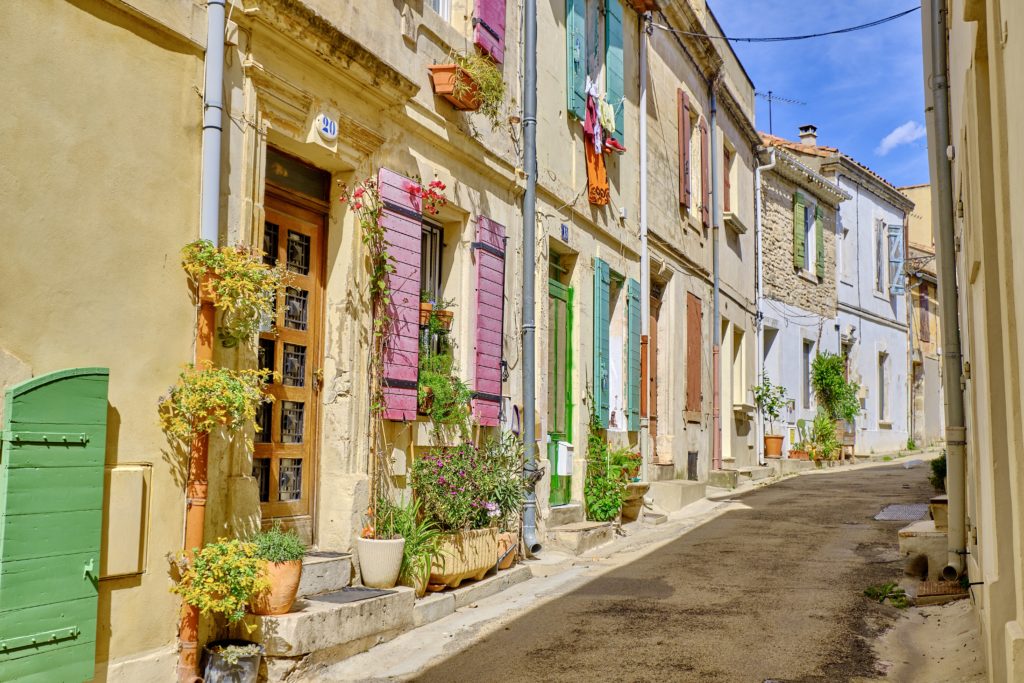
13. The Laid Back La Roquette Neighborhood
If you’re feeling culturally oversaturated, catch your breath and get off the beaten path in Arles’ La Roquette neighborhood. It’s a charming spot in southwest Arles that dates back to the middle ages.
It’s an excellent place to stay if you don’t have a car. Otherwise, you must park across the river with some very minor inconvenience and cost.
Nestled between the Quai de Rhone and the Boulevard Clemenceau, La Roquette is a funky bourgeois bohemian neighborhood with nearly every type of architectural detail.
It’s been spectacularly restored and is crammed with narrow streets, open air cafes, and artisan shops. There are colorful flowers and vines everywhere, spilling out of and surrounding the beautifully renovated homes.
14. Arles: Stepping Stone to the Camargue
Just 30 minutes from Arles lies one of France’ stop notch wildlife destinations, the Camargue. You can take a guided 4 x 4 safari day tour from Arles.
When I think of southern France, my mind turns to enchanting medieval villages and bucolic lavender fields. I don’t expect to see wildlife. So imagine my surprise when I arrived in the Camargue, on a fantastic day trip from Arles.
I saw wild bulls and white horses galloping in the countryside and pale pink flamingos flapping their wings in the salt flats. Because of its biodiversity and natural splendor, the Camargue is on the tentative UNESCO list.
The Camargue is a river delta where the Rhône meets the sea. Not only is it an outdoor enthusiast’s and birdwatcher’s dream, it’s a very off the beaten path destination in southern France.
Much more so than Arles. Visitors can hike, cycle, or ride horses in peace and quiet.
Or unwind by cruising the waterways. If you want to see thousands of flamingos, they’re on the coast between Les Stes Maries and Salin-de-Girard. Boats leave from Les Stes Maries.
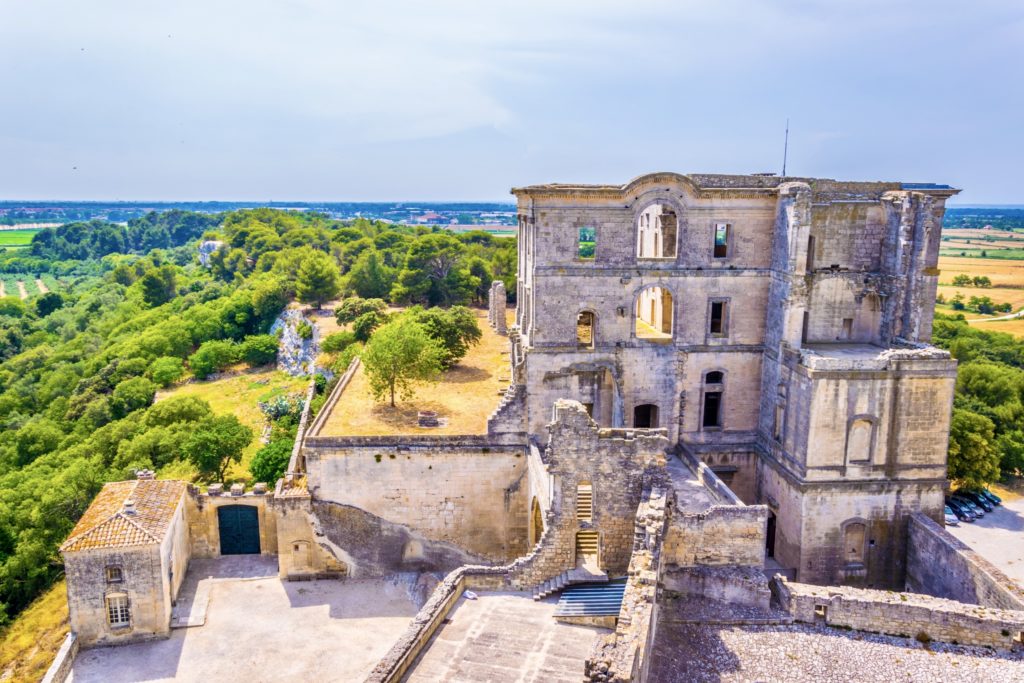
15. Abbey de Montamjour
Just 15 minutes northeast of Arles is the monumental Abbey de Montmajour. The ancient Benedictine abbey was founded in the 10th century. It was built between the 10th and 18th centuries.
Because of the different building initiative, the abbey is an ensemble of a Roman cloister, Romanesque abbey church, a cave chapel, and a necropolis dug right into the rock.
In the Middle Ages, it was an important place of pilgrimage. Van Gogh was fascinated with the abbey and went there to paint.
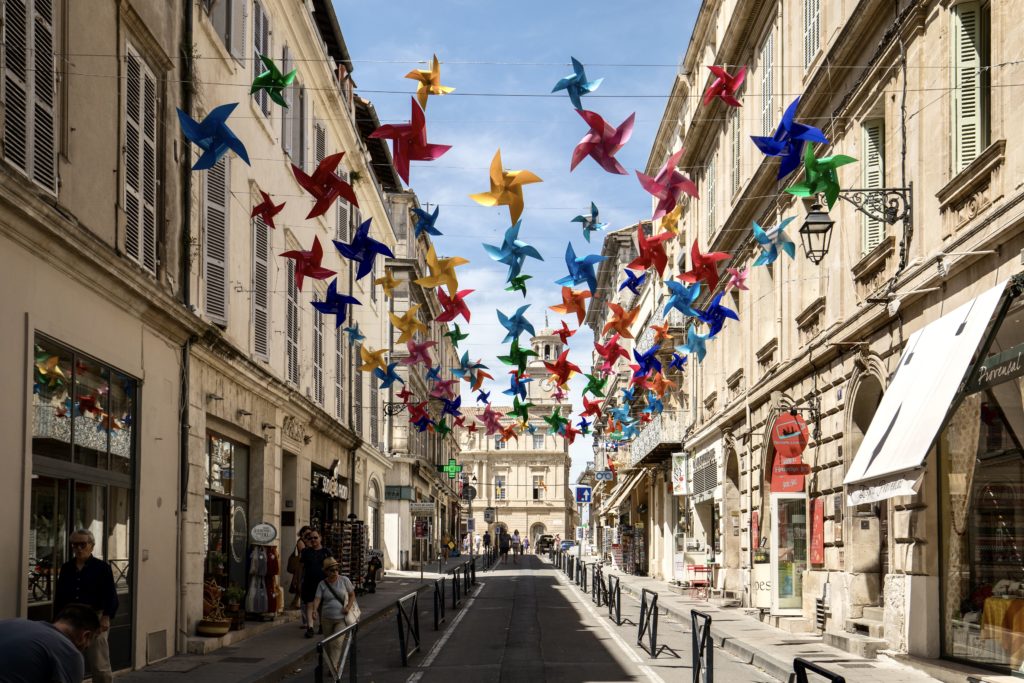
Tips For Visiting Arles
How to get to arles.
Trains connect Arles with other major cities in southern France.
You can reach Arles in 20 minutes by train from Avignon, 50 minutes from Marseilles, and 20 minutes from Nimes.
You can book a guided day tour to Arles with wine tasting from Avignon. You can take a Van Gogh themed guided tour from Avignon .
You can day trip to Arles from Aix-en-Provence . You can book a guided day tour from Marseilles that also includes Les Baux and St. Remy.
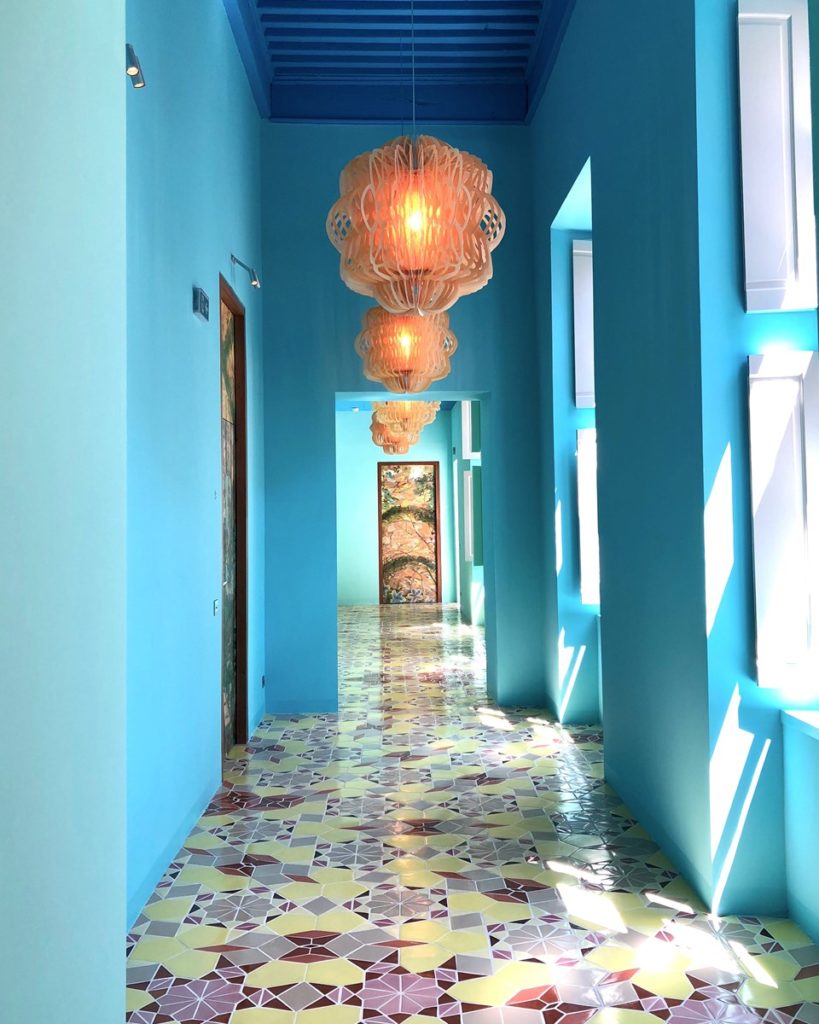
Where To Stay In Arles
Arles has some great hotels if you’re using the town as a base. Like the city itself, international design influences have begun to shape the burgeoning hotel scene.
L’Hotel Particulier Arles is a beautiful 5 star with old world charm in a 19th century mansion with a limestone pool.
You should also check out the Hotel & Spa Jules Cesar Arles , which is housed in a former convent. La
The astoundingly pretty L’Arlatan is housed in a 15th century townhouse. It’s been fully renovated and gleams withcolors influenced by Van Gogh.
Arles is no longer the sleepy small post-industrial town crystallized in most people’s perceptions.
Flash forward, it is differently embodied, with more gloss than grit. Like the Broadway smash Hamilton, Arles flawlessly combines the ancient and the modern to riveting effect.
I would say Arles is a veritable jewel in the crown of Provence and a must visit 21th century cultural center.
Go ahead, take a step back into the past and a glimpse into the future in Arles. Have I convinced you?
I hope you’ve enjoyed my guide to the top attractions in Arles. You may enjoy these other travel guides for southern France:
- 10 day itinerary for southern France
- Charming hidden gems in Provence
- 30 secret towns in France
- Hilltop villages of the Luberon Valley
- Historic landmarks in southern France
- Beautiful villages in Occitanie
- Guide to Toulouse
- Guide to Carcassonne
- Guide to Albi
Pin it for later.
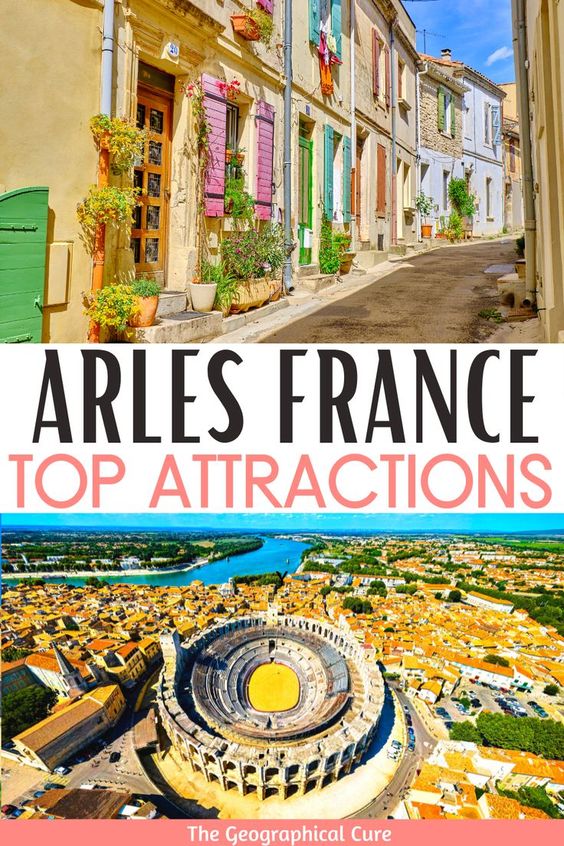
4 thoughts on “Top Attractions In Arles, An Underrated Gem in Provence”
We are staying in Arles for two days next month. Your guide is so helpful and I can’t wait to check out the sights. Thank you for your detailed leg work!
Thank you so much Donna. I really liked Arles and I hope you do too
Thanks for your helpful guide! Doing research and trying to decide if we should visit the arena in Arles or Nimes. Enjoyed reading your experiences!
The Nimes arena is probably more impressive and better preserved. But I love the town of Arles.
Leave a Comment Cancel reply
Save my name, email, and website in this browser for the next time I comment.
Last Updated on January 12, 2024 by Leslie Livingston

A Guide to Arles, France

With cobblestone alleyways and pastel houses, Arles is one of the cutest towns in all of France (though lets be honest – there are a handful at least). As part of my 10 day cruise in the South of France I had the chance to visit this picturesque French town and spend a day exploring the winding streets. Our ship was docked on the river, allowing for comparable views to Vincent Van Gogh’s The Starry Night , which was indeed inspired by the same views when the artist once called Arles home.
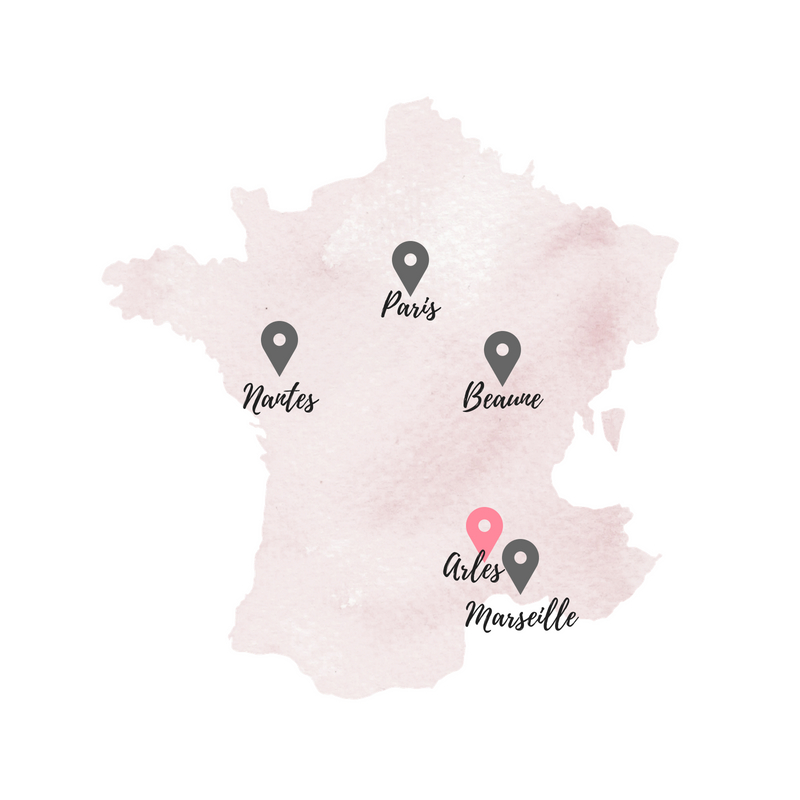
NEED TO KNOW
Arles is located in the south-east of France in Provence. The best time of year to visit is May-September as the Spring months bring the region to life with sunflower fields, lavender fields and beautiful blooms in the cities of Provence. This is also the high season for Arles and Provence, so be sure to book ahead!
The nearest airport is Marseilles , a 45 minute train or car journey.
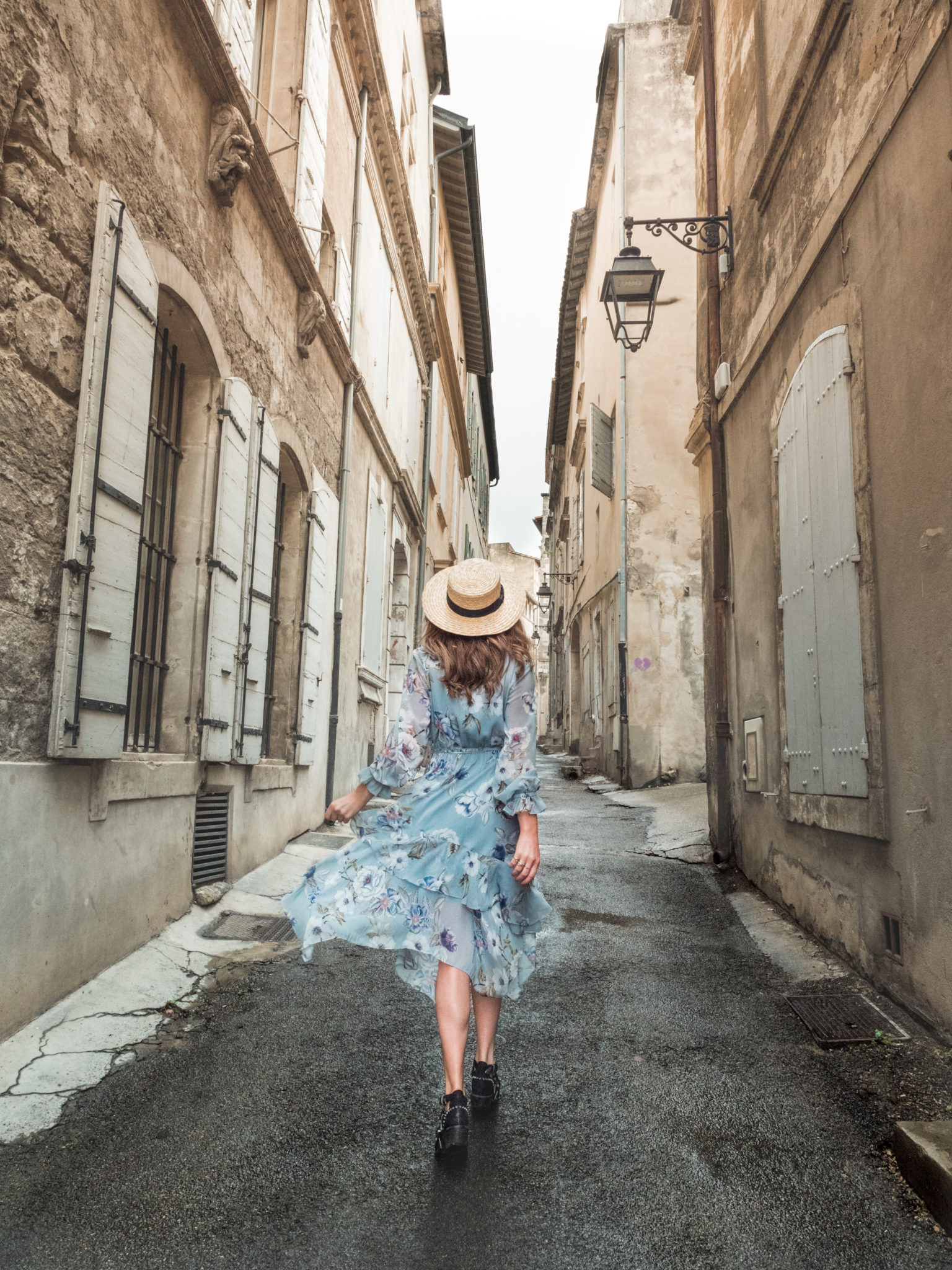
AROUND ARLES
Arles Ampitheatre
Place du Forum
Vincent Van Gogh Foundation

French Coffee Shop
A casual and really popular little eatery with a great range of pastries to take away.
10 Rue de la République, 13200 Arles
If flavour-rich Mediterranean food is on your mind, then look no further than this popular restaurant.
21 Rue Porte de Laure, 13200 Arles
A petit restaurant with vegetarian and vegan options.
32bis Rond-Point des Arènes, 13200 Arles

THE PROVENCE REGION
The Provence region is one of the most popular Spring/Summer destinations in all of France, so there is plenty to see and do to keep one occupied in the countryside! Below are a few popular onward destinations to explore:
Avignon – Larger city located on the Rhōne River with a lot of charm in the warmer months.
Nimes – Nearby city and a former outpost for the Roman Empire.
Aix-en-Provence – Picturesque town with an other-worldly charm.
Gordes – The beautiful hillside village you’ve probably seen on a postcard or two! (pictured below)

I visited the city of Arles on a 7 day river cruise with Avalon Waterways . All opinions and photos are my own and I’d highly recommend taking the time to enjoy a river cruise for those preferring a more relaxed approach to visiting France!
Brooke Saward founded World of Wanderlust as a place to share inspiration from her travels and to inspire others to see our world. She now divides her time between adventures abroad and adventures in the kitchen, with a particular weakness for French pastries.
Find me on: Twitter | Instagram | Facebook
You may also enjoy:
Your ultimate summer guide to the south …, these are the most visited cities in ….
Los Angeles
Plan a trip
First trip solo
Packing guide
20 Best Places for Solo Female Travel
Travel after a break up
20 Places in your 20’s
WAYS TO TRAVEL
Solo travel
Adventure travel
Luxury travel
Learn a language
Become a blogger
Get our tips in your inbox! Sign up
Travel France Blog
All You Need to Visit France
Best Things to Do in Arles, France
The beautiful city of Arles is located in the southeast of France, specifically in the Region of Provence .
2000 years ago Arles was a very important city in Gaul. Close to Marseille and in the river mouth of the Rodane it was a strategic spot for commercial and military purposes.
More than 30,000 souls gave life to this city every day, it was that important, that the Romans built all the usual civil service facilities for the big cities like 2 aqueducts, Termes, Coliseum, Theater, and a Necropolis.
In its architecture, of course, you can see the tremendous Roman heritage present in this city and for which it has been declared a World Heritage Site by UNESCO.
But this city has taken as well an undisputed place in the art world in our present days.
Arles was the home and retreat of Vincent Van Gogh at the end of the XIXth century, from February 1888 to May 1889, then committed to St Remy en Provence mental hospital.
Some years later, between the fifties and seventies loved and frequently visited by Picasso, he gave huge support to the Reattu Museum and donated more than 50 designs.
Nowadays, Arles, since 1970 serves as the host of one of the most important photographic festivals in Europe, the “Rencontres d’Arles”. From July to September more than 50 photographic exhibitions, workshops and trainings turn Arles into the Capital of Photography.
In this article, I will tell you what to see and do in Arles and what are the most attractive places in this Roman city. So let’s go there!
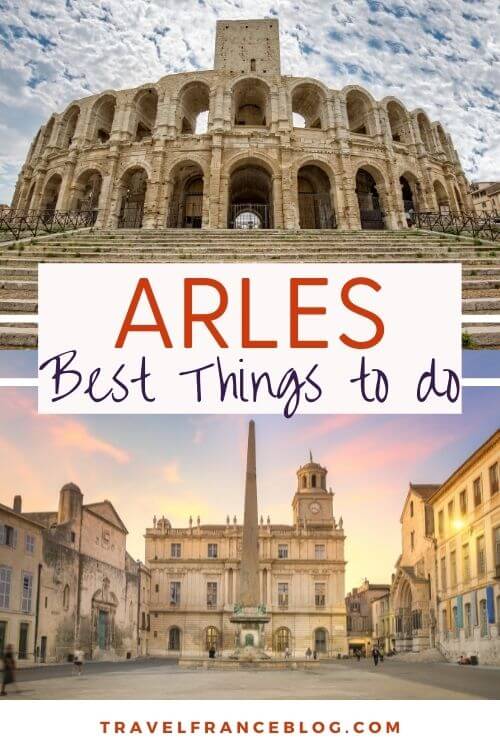
The Amphitheatre or the Arenes of Arles
The Amphitheatre is the best-known monument in the city. This Roman amphitheater was built in 80 AD and had a capacity of 21,000 people.
For more than 400 years this oval arena hosted spectacles for the Arles inhabitants.
Bare with me for a second and let’s take some perspective.
Imagine yourself 2100 years ago, life was in tribes, technology in every way was rudimentary, transportation difficult, by horse or maybe by chariot exceptionally.
And in the next turn of the street, you find this amazing building practically in the middle of the town, huge, full of people, and with the crowd chanting and shouting.
This is exactly the sensation the Romans wanted the people to have, the greatness of the Roman Empire. “Only the all-mighty Roman Empire can build this, we have to bend to the Power and be part of this”.
This is how the Romans “Romanized” the other cultures. The military campaigns were “subdue by force” and then the “Romanization by culture” arrived to finish the job.
The Amphitheater is very well preserved and continues to be the scene of different musical events and bullfighting shows.
Its architectural value and its conservation are surprising. A curious fact about this amphitheater is that despite being such an old building, it already had an evacuation plan at that time.
It’s extremely well designed for crowd control and as always in the Roman buildings there were different spaces for the different social layers. And in the process of getting in and out, there was no contact between different social classes.
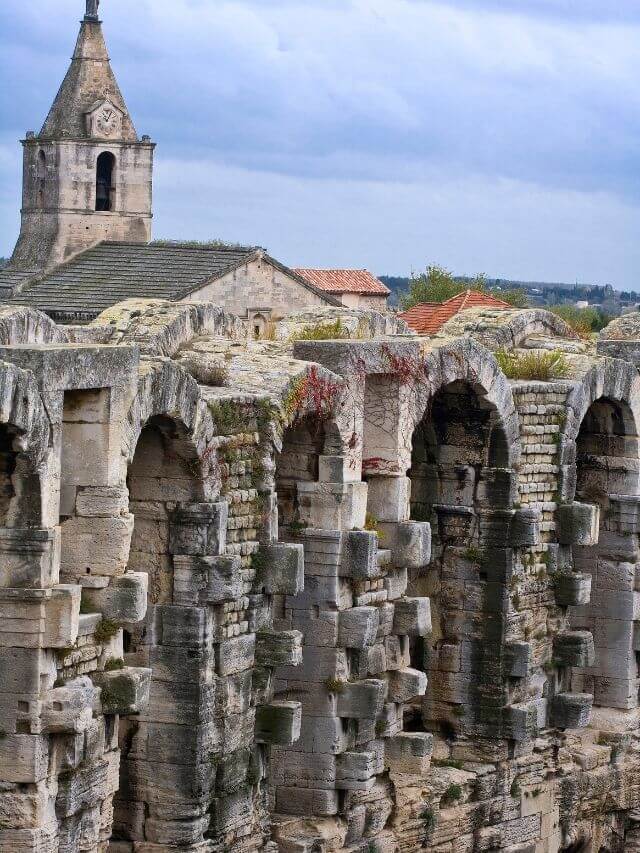
This Roman monument is a UNESCO World Heritage site and is a must-see in Arles.
In addition, you can buy your ticket for only 9 euros, but better than that, you can buy a pass for almost all the sites (6 monuments and 4 museums) in Arles for only 19 Euros on the web of Arles Tourisme .
The schedules are very changeable depending on the months in which you will visit the place, so we advise you to visit the official page of the amphitheater to find out more about the opening hours.
Related : Best things to do in Avignon
Theater of Arles
The Roman Theater of Arles is a Roman theater from the 1st century, built during the reign of Emperor Augustus.
It started around 40/30 a. C. and was completed around 12 a. C., thus becoming one of the first stone theaters in the Roman world.
Unlike the amphitheater, this monument was smaller in size and therefore had a capacity of 10,000 people.
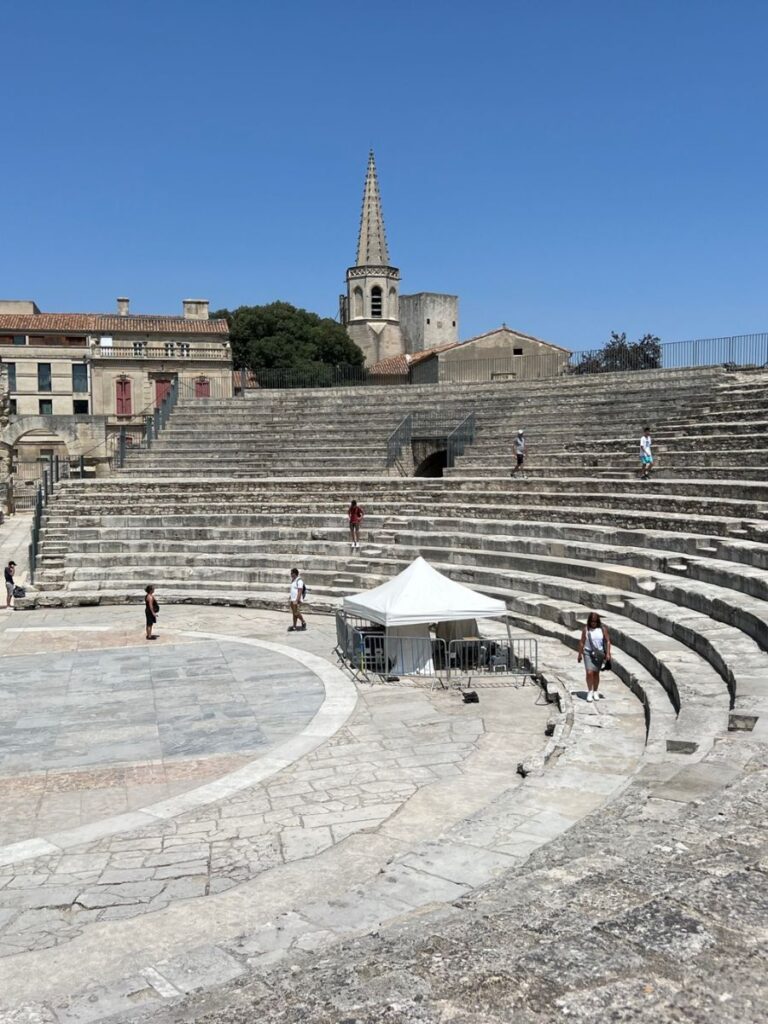
As you may already know, in ancient times, the public was distributed according to their social affiliation: the wealthiest people or part of the aristocracy were lower down while the poorest, children and women, were located at the top of the theater.
In addition, in ancient times, both women and children were not allowed to enter unless they were accompanied by an adult man.
The theater, unlike the amphitheater or the circus, offered performances that could be:
- Roman or Greek tragedies,
- mimes and pantomimes intended for a probably more refined audience.
Today the theater is pretty well preserved and is still a venue for performances and festivals.
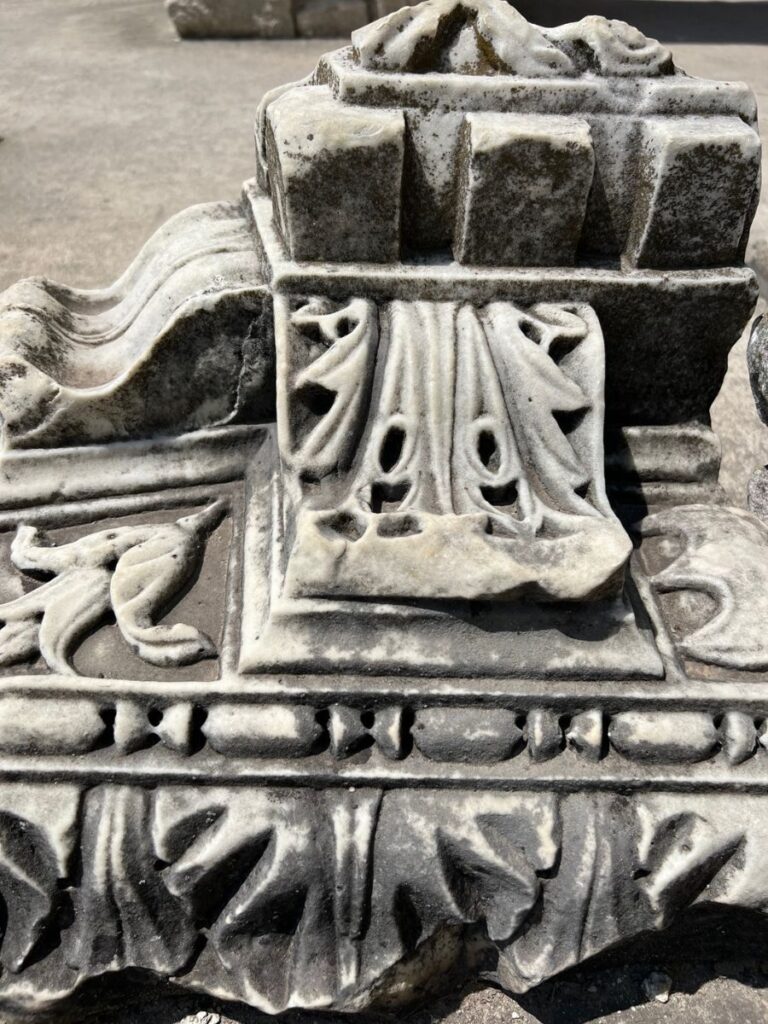
This architectural jewel of Arles hosts festivals of all kinds every year, some of which are festivals of photography, costumes, or cinema, among other arts.
Like the amphitheater, this place can also be visited by paying a ticket, or with the 6 Monuments and 4 museums pass.
A great idea is to attend an event in this place and enjoy the acoustics and the show in this Roman theater with a Greek essence.
Check out the tourist office in Arles for prices and opening times .
Museum of Arles and Provence
The Arles museum hides a great richness of the Ancient Age in its interior. This museum opened to the public in 1995 and has a large collection of objects from the Greek and Roman era found in the vicinity of Arles.
You will see busts of Roman emperors, sarcophagi, amphorae, and even Roman boats found in the Rhone River during your visit.
If you are a lover of art history, this museum has a lot to tell you about the Roman and Greek period in the South of France.
Travel Insurance
Don’t forget to take travel insurance when planning your trips. Hopefully, you don’t need to use it, but it’s best to be prepared for any eventuality or emergency. In my case, I use Mondo Travel Insurance, with worldwide medical assistance and coverage of €10,000,000. In addition, you have a 5% discount using this link at Hey Mondo Insurance .
Learn about the heritage Van Gogh left in Arles
In 1888, Van Gogh arrived in Arles, and for about 15 months, Arles was the canvas of this genius.
The artist painted almost 300 paintings in this city, and we can see many of the corners of this French city in his works.
Van Gogh had come to this city after living in Paris for two years and when his mental illness began to feel more latent.
In this city, he had several ups and downs. He wrote countless letters to his brother Theo and to his friends, inviting them to come to Arles to visit him.
Only one friend took the invitation and visited him, one of his best friends and the genius Paul Gauguin.
During two months Vincent had a fantastic artistic moment sharing his art with Paul Gauguin and things went more or less fine.
Paul and Vincent worked together on some paintings, mainly about the Necropole of Arles (Alyscamps). But sometimes they had strong discussions.
The last one was really violent and Vincent was seen with a razor while Paul left hastily Arles and went back to Paris.
The next day Vincent Van Gogh was found with part of his ear cut off . After this episode, he was admitted to the hospital and was treated by doctor Felix Rey.
After this episode, he was committed to the mental health hospital of Saint Remy de Provence .
Today, Arles is still the living memory of Van Gogh, and when you visit the city, you can see his house and make a tour of all the places reflected in his paintings.
- Check Out: How to Travel France on a Budget
Church and Cloister of St. Trophime
This beautiful Church built between the XI and XII contains the remains of Saint Trophime, the first bishop of the city of Arles. Inside, the abbey stands out with beautiful capitals on its columns.
In addition, the exterior is majestic and has a cover with the 12 apostles worthy of contemplation.
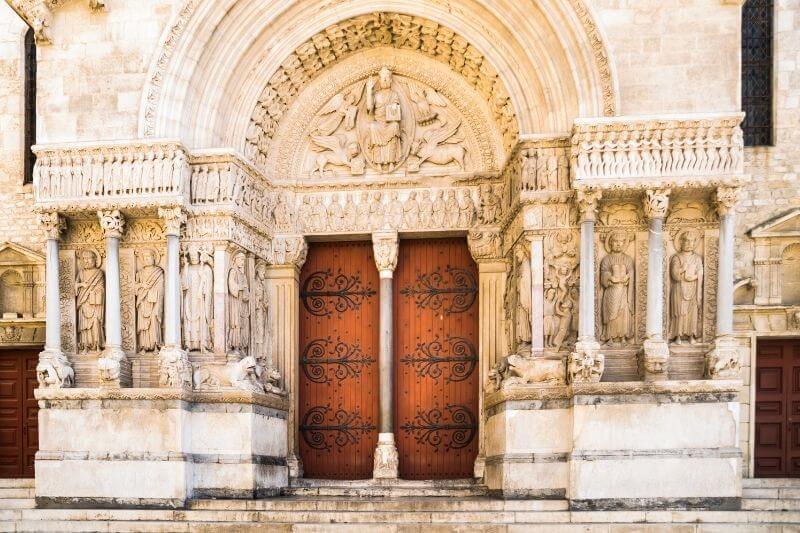
You need a ticket to visit this church; therefore we advise you buy a kind of bundle ticket to see the monuments of the historic center because it will be cheaper.
The Thermes (Baths) of Constantine
The Baths of Constantine owe their name to the emperor who had them built in the 4th century AD.
Like the Amphitheater, this is an amazing civil engineering construction that served, as we have seen, for two purposes.
The first one, placed between the city forum and the Rhône, this building was intended for the leisure and relaxation of the population of Arles, no matter the social class. And they were free.
The second one is to show the importance, power, and size of the roman empire to “romanize” the people.
The baths were heated 24/7 in the basements. There were slaves the ones in charge of keeping the fires alive.
There were countless columns made of bricks that served to sustain the floor one meter above the basement, this served as the heating chamber for the floor of the baths.
The walls had a complex network of hollow spaces like pipes inside the walls from where the hot air circulated to heat as well the walls.
The plumbing of the Roman baths was amazing.
Starting with the sourcing of the water. Contrary to what we can think, they didn’t use Rodane’s water because for the Romans this water was dirty as it received the waste and sewage of several towns and cities located upwards.
For the baths water must be pristine and clear, this is why they built two aqueducts to source water from the Alpilles mountains that are close enough.
The water canalization was designed to make the water available first priority for the fountains, secondly for the public buildings (Thermes for example), and finally for high society houses and the wealthy people.
I can’t help to be amazed at what these people did 2000 years ago.
Finally, the Thermes were not only to take a bath, but it also had restaurants, shops a library…
The Thermes were as well a refuge for the winter. If a citizen couldn’t heat his house in winter he could always go to the baths to keep himself warm.
Today, this is another of the buildings that are World Heritage Site by UNESCO and you can access and contemplate its magnificent state of conservation.
Related : Best Time to Travel To France
Montmajour Abbey
Montmajour Abbey is located on the outskirts of Arles, on the road that goes to Saint Remy de Provence.
It was built in the 10th century on a rock surrounded by marshes and was founded by Benedictine monks.
The building has been enlarged several times throughout history to become the great abbey that we can see now.
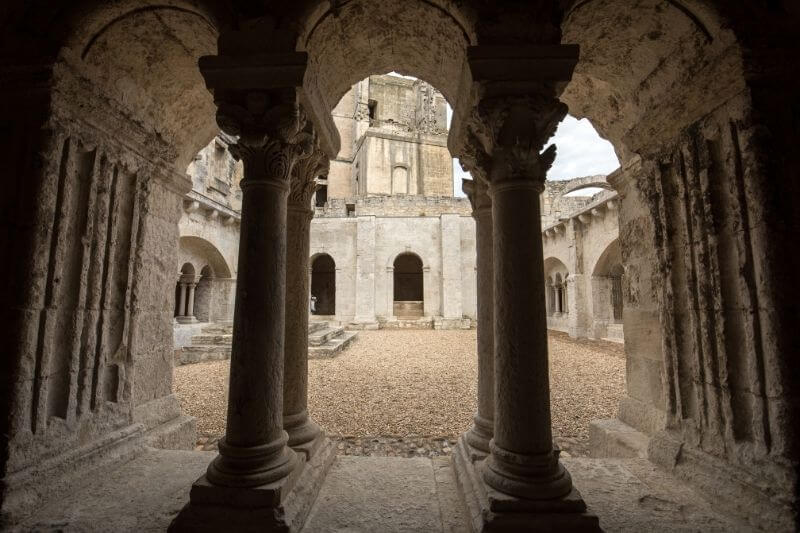
It is an unmissable place that you have to see in Arles. Here you can tour the entire interior and even the dark crypts of the temple.
If you have bought the pass for 6 buildings and 4 museums you will have a discount on the price of the ticket to the Abbey.
Alyscamps Painted by Van Gogh and Gauguin
Alyscamps is a graveyard of ancient Rome located on the city’s outskirts . In this necropolis, you can find ancient sarcophagi and a Romanesque church from the 12th century.
The popularity of this site is thanks to both painters Van Gogh and Gauguin, who, in their attempt to paint a non-naturalistic landscape, decided to capture the great avenue of tombs in a painting.
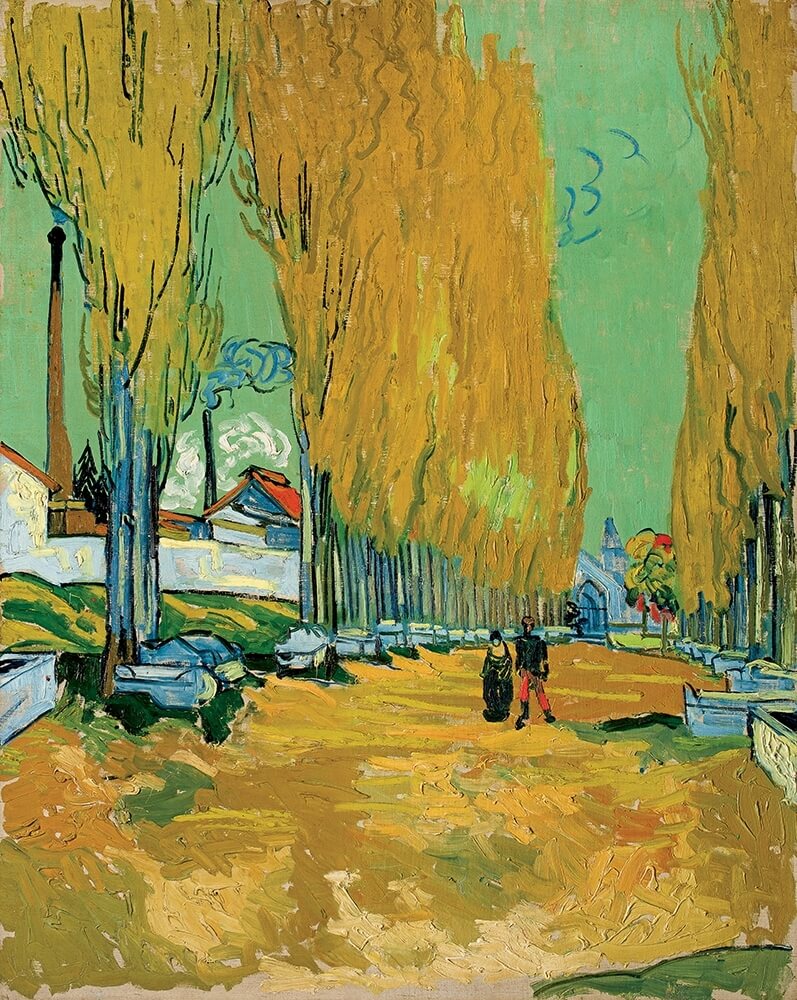
In France, this painting is known as the street of Lovers. It has become one of the most important works of the two artists.
Vincent Van Gogh Foundation in Arles
The Vincent Van Gogh Foundation of Arles was born in 2014 as a tribute to the artist who captured the corners of the city in his works.
Taking the contemporary perspective of the artist and his significant influence in this field, this foundation aims to motivate artists from all over the world to express their connection with the Dutch genius.
Here you will find works and creations by artists from all over the world who want to exhibit in this place.
The visit to the foundation costs €10.
In addition to the visit itself, this foundation has several art workshops throughout its calendar.
We recommend that you visit their website to keep an eye on the events and activities in this space and see if any coincide with the dates of your trip.
Republic Square (Place de la République)
On your walk through the center of Arles, you must stop at the Place de la République. This square is a meeting point for many visitors and locals in the area.
In the center of the square, there is a Roman obelisk from the 9th century, and in its surroundings, you will find some of the most beautiful buildings in the city, such as the town hall and the church of St. Trophime.
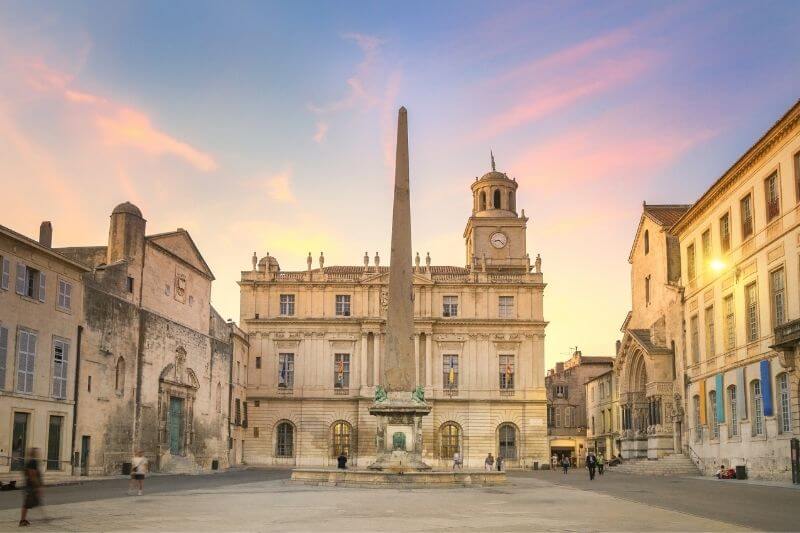
A cafe in the Place de Forum
Despite its name, it has nothing to do with the ancient Roman Forum. Instead, this square is located in the center of the city.
In it, you can find the remains of a temple dedicated to Constantine in the 1st century AD.
However, it is commonly known for the number of surrounding cafes and restaurants that make this square a place of leisure and entertainment for travelers.
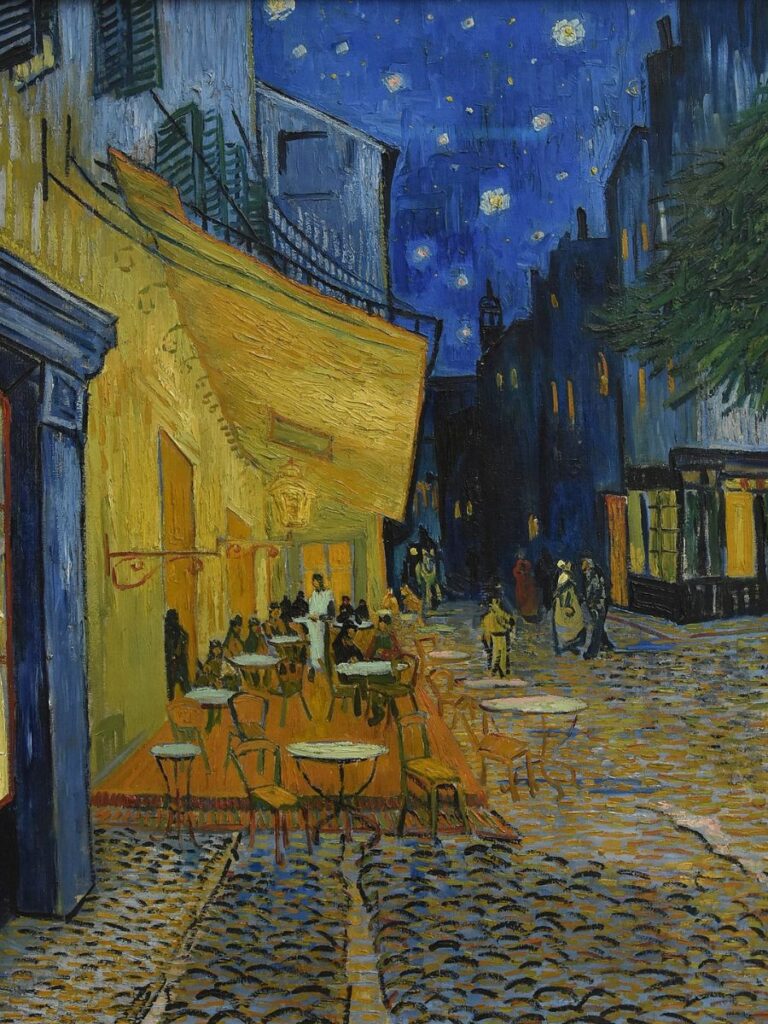
Mainly the café that Van Gogh painted. The name of the café was Café le Soir and the painting is Terrase du Cafe le Soir. Today is almost the same as the painting. You will see a lot of people taking pictures with the cafe as background.
A perfect place to rest during your visit to Arles.
Réattu Museum, for Photography Lovers
If you have an artistic mind, you might be interested in visiting the Réattu Museum.
This museum in Arles mainly collects the work of local artists, but it also has some pieces by other artists, such as Picasso from Malaga, Spain.
This museum was created in 1868 and has been restored several times. If you are a photography lover, I must tell you that they have a great collection of snapshots of great 20th-century photographers that you should not miss.
I loved this museum. They mix in the same room paintings of the 18th or 19th centuries with pictures of the 20th century. I enjoyed the contrast this gives to the museum and the exhibition is really well curated.
You will learn about the relationship that Arles has with art and photography and it will help you to understand the relationship this city has with both branches of art.
Cryptoporticus
The Cryptoporticus is one of the nicest surprises I had during my visit to Arles. The Roman heritage of Arles goes beyond the surface, and that is why we want you to know that in Arles, you can visit the city’s bowels.
First of all, let me explain why they use “cryptoporticus” as a name. My first thought was that maybe there was some information encrypted and engraved on the stone (?).
Haha, not at all, they use “Crypto” because in ancient Greek means “hidden”. It evokes the subterranean aspect of the galleries built under the porticoes of the forum square.
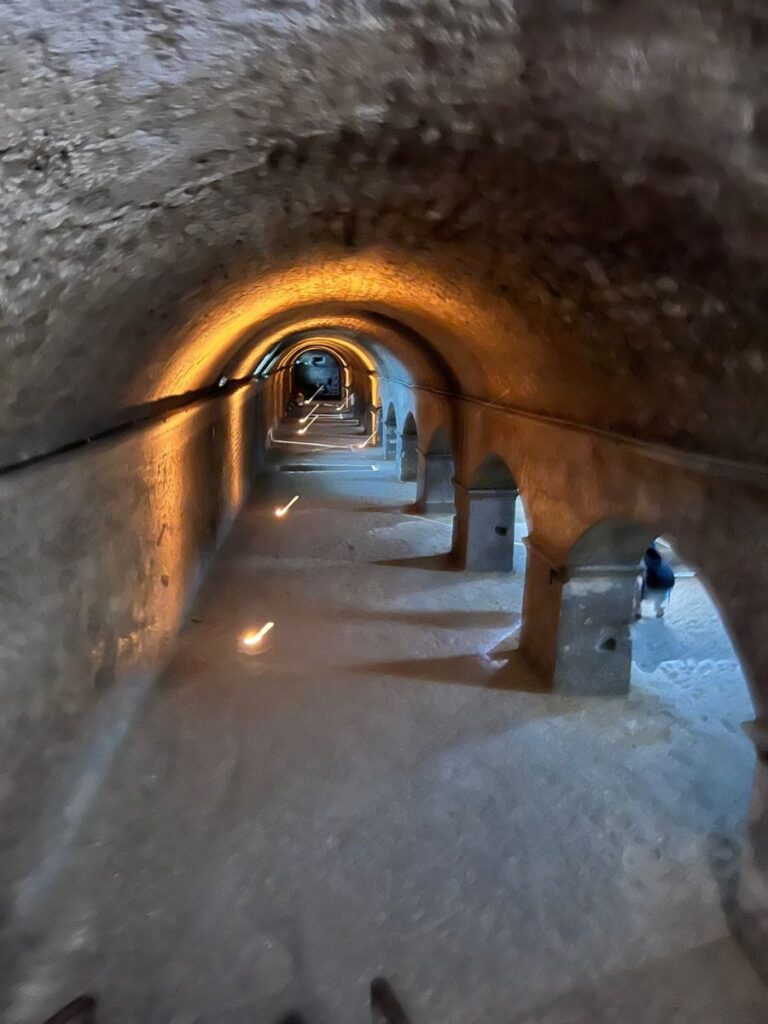
First of all, let’s understand what is the Forum. The Forum in the ancient Roman cities is the main square of the city. It was a huge square placed in the cross of the two main streets of the city.
In Arles, it was built during August’s government (25 – 10 BC) and it had 3400 square meters. It was surrounded by porticoes and its buildings were the social, economic, politic,al and religious center of the city.
Under this forum, there were solid foundations to keep the stability of the construction. And these foundations, which are galleries narrower than the porticoes above, are what you are going to visit.
They are 3 double galleries forming a “U”. Two galleries of 90 meters long and one of 60 meters long and 8.5 width.
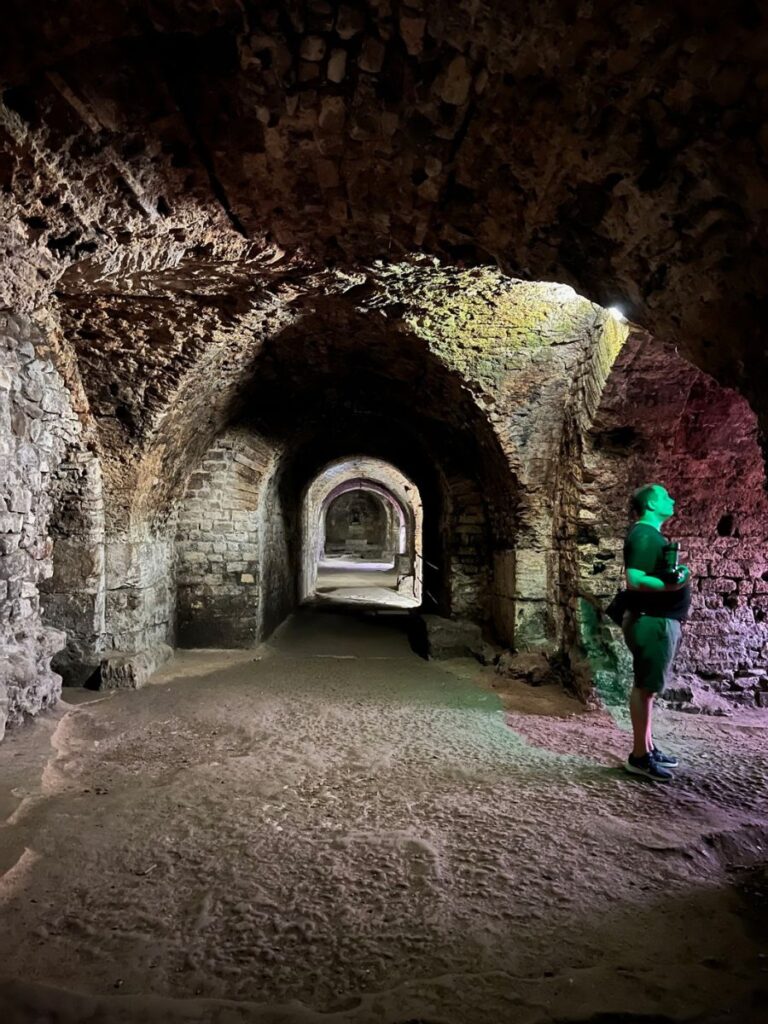
Side to side to one of the galleries you will see as well the space kept for the shops and boutiques of the forum at that time. Probably the “Louis Vuitton” and “Christian Dior” of the Roman times given the position they were allowed to have in the forum.
You can buy your ticket to visit them and go through the different galleries. If you have bought the pass for 6 monuments, the entrance is included.
Without a doubt, a fascinating visit to the Roman city of Arles.
The Market of Arles
As the great city of Provence that it is, Arles had to have a market. The Arles market has a big day on Saturday mornings and is two kilometers long, full of scents and colors.
On Wednesday mornings, you can also go to this market, but this time in a humbler extension but equally remarkable.
Here you can find many fresh local products such as fruits, cheeses, and honey.
Chateau d’Estoublon
If you like castles, take advantage of your visit to Arles and take a day trip to visit the Chateau d’Estoublon.
This place is a historic village close to Arles, just 22 minutes by car.
Since 1489, this town has been dedicated to agriculture and is known for the great wines and oils produced in its surroundings.
Here you can discover the richness of the products of the land, the history of the place, and the people who have inhabited the old building and have a tasting of some of the best wines of Provence.
The tour costs around 60 euros and lasts approximately 1 hour and a half.
https://chateau-estoublon.com/en/
Daudet’s Moulin
Take advantage of your departure from Arles and visit the famous Daudet mill in Fontvieille, on a beautiful hill near Chateau d’Estoublon.
You can visit this windmill. Here is the Daudet Museum, in which memorabilia of the writer is exhibited.
The mechanism of the building is also explained. But, sadly and contrary to popular belief, Alphonse Daudet did not write the “Letters from my mill” here, much less live in it.
- Check Out: Les Corniches Road Trip Itinerary
Barbegal Aqueduct
In Roman cities, water reached the cities through aqueducts, and in Arles, you can still find remains of this engineering work that supplied the population in Roman times.
The ruins of this aqueduct are located about 12 km from the city, and it was the architect of moving a vast flour mill from the area that produced flour for the region.
In those times, this aqueduct was one of the most important in the entire Roman Empire.
Camargue National Park
If you stay in Arles for a few days, we recommend that you use one of them to visit this beautiful Natural Park that is only 14 minutes by car toward the coast.
In this natural area, you can enjoy a wonderful walk through semi-fenced land where you can see various species in semi-freedom, such as horses, bulls, and turtles.
The landscape itself is a gift that Provence gives us, decorated with its lagoons and its birds fluttering around this place. If you are lucky, you may even see flamingos in the area.
We hope that this guide to Arles will help you organize your trip to this Roman city in the south of France and that you will make the most of your visit to the Pearl of Provence.

Plan your trip to Provence and the South of France
- Driving in the South of France
- Lavender fields in Provence
- The different seasons of the year in France
- What to see in Avignon
- Visit the Calanques National Park
- What to see in Aix-en-Provence
- What to visit in Antibes
- How to save money while traveling in France
This post may include affiliate links. This means that we will receive a small fee if you make a purchase through our links. It has no additional cost to you. It’s a win-win!
Hi there! I’m Vero! I’ve always loved traveling! I have been living in France since 2018. And traveling around this awesome country. I love road trips and traveling by van, and also, some comfy getaways :) Check out: Touristear.com
Similar Posts

A Travel Guide to Gordes, France


Where to Stay in a Castle in Provence

Best Things To Do in Cannes, French Riviera, France
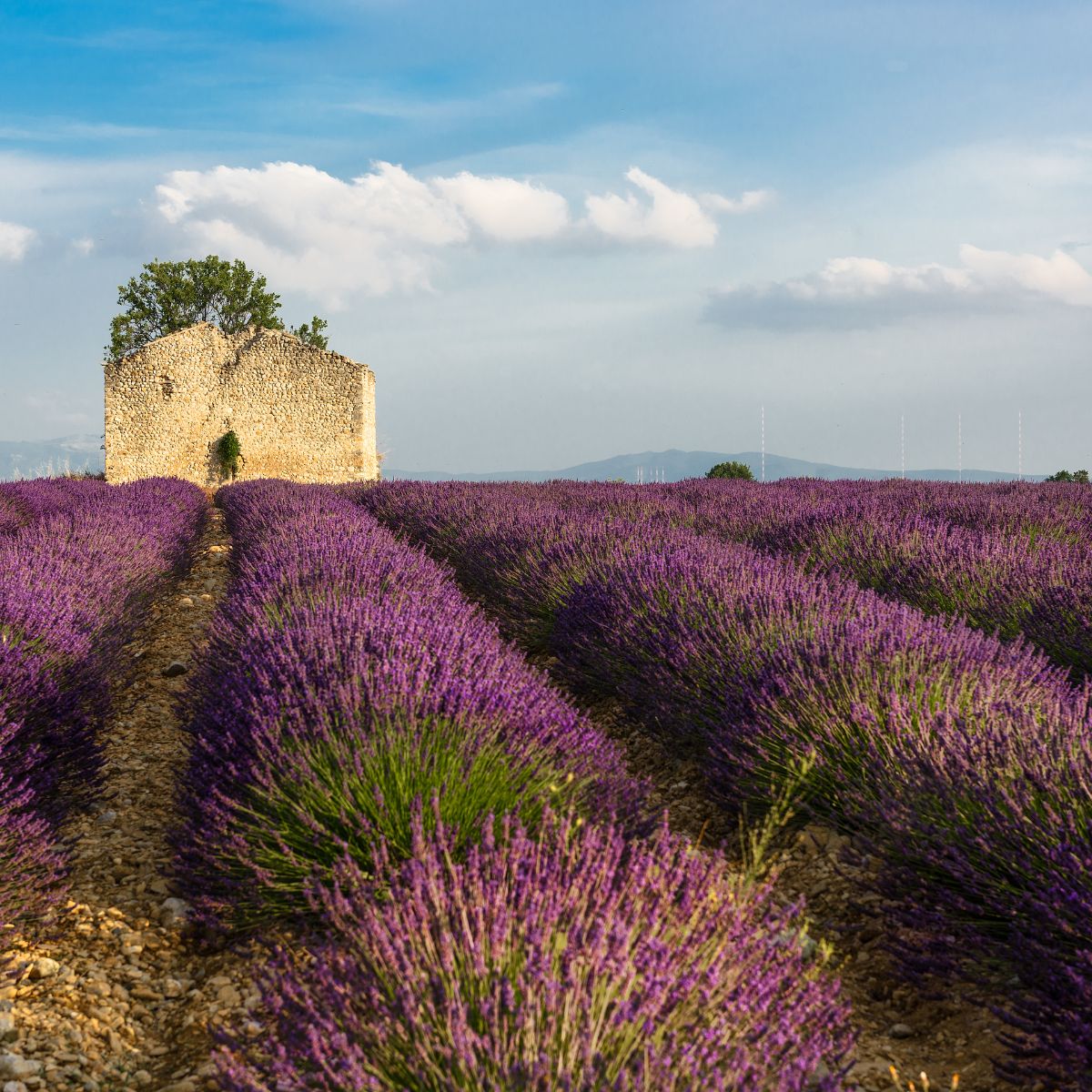
Best Things to Do in Valensole Provence France

How To Visit the Camargue National Park, France
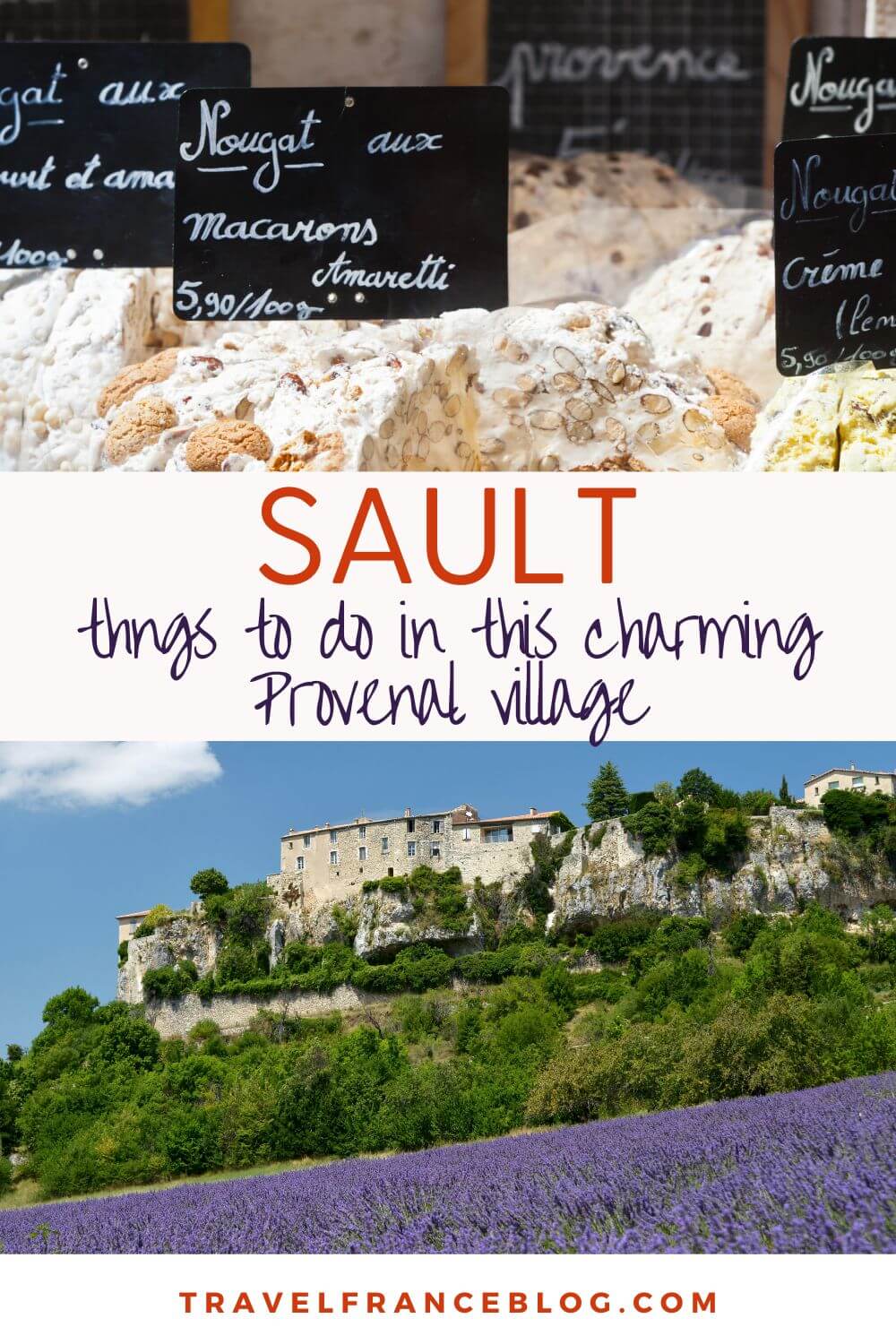
Visit Sault Provence: A Charming Escape You’ll Love
Leave a reply cancel reply.
Your email address will not be published. Required fields are marked *
Save my name, email, and website in this browser for the next time I comment.
Privacy Overview
- United Kingdom
- Curated Stays
- Wine Travel
- About Isabelle
- Work with Us
19 Essential Things to Do in Arles [2024]: Art, History & More
- Isabelle Hoyne
- February 29, 2024
** Disclosure: some of the links on this site are affiliate links and should you make a purchase through these, I may receive a small commission at no extra cost to you. Thank you for your support!**
Plan your perfect itinerary for things to do in Arles with our comprehensive guide, and make the most of your visit to this enchanting city in Provence. Immerse yourself in the vibrant scene of Van Gogh’s inspiration and wander through captivating Roman ruins. Discover the charm of Arles as you delve into its rich history and artistic treasures.
Nestled within the enchanting landscapes of Provence, where the golden light dances upon cobbled streets, lies the captivating town of Arles. With an air of timeless elegance, Arles beckoned this curious soul with the promises of its rich stories of history, artistic brilliance and resolute courage.
One huge draw is the opportunity it presents to step into the footsteps of emperors and gladiators when traversing the ancient Roman ruins that grace Arles.
Any Ancient Roman history fan will be in raptures, transported back in time as you explore the majestic amphitheatre, standing proudly amidst the cityscape, its weathered stones silently whispering tales of ancient spectacles and bloody battles.
Remarkable too is its Roman theatre, where the echoes of poignant performances still linger, casting a spell upon those who tread its hallowed ground.
Arles has long been a muse for creative souls also, none more famous than the revered artist Vincent van Gogh. Discover the very streets and landscapes that inspired his masterpieces, where vivid brushstrokes come to life in vibrant hues.
It’s a delight to wander through the charming neighbourhoods, tracing Van Gogh’s footsteps and unraveling the essence of his artistic vision amidst the sunflowers, cafes and starlit nights.
Yet, Arles’s story extends beyond its artistic allure. It carries too a weight of valour and resilience, having been a battleground during the tumultuous days of World War II.
When in Arles, you will navigate streets that witnessed fierce fighting and brought out an indomitable spirit in its inhabitants, leaving an indelible mark on the town’s identity.
Perfect as a day trip but oh-so-deserving of more of your time, here are the very best things to do in Arles.
Essential resources for visiting Arles
Train | Search train schedules & book tickets here Car | Search & book car rentals here Top rated tours & experiences in Arles: ☆ Arles 2-Hour Private Walking Tour ☆ From Arles: Half-Day 4×4 Camargue Safari ☆ From Avignon: In the Footsteps of Van Gogh in Provence ☆ From Avignon: Half-Day Van Gogh & Carrières de Lumières Tour Cultured Voyage’s accommodation picks in Arles : ✪ Hôtel & Spa Jules César Arles – MGallery Hotel Collection ( luxury option ) ✪ Hotel de l’Anglais ( beautiful boutique guesthouse ) ✪ Hôtel La Muette (atmospheric small hotel) ✪ Hôtel de l’Amphithéâtre ( lovely, well-located hotel )
Table of Contents
A little about arles before visiting, the best things to do in arles, things to see in arles on the map, things to do in arles in one day, how to get to arles, what to do in arles: faq, is it worth going to arles.
Whether you’re captivated by art, history, or simply the charm of a picturesque town, Arles is worth every moment of your visit.
From exploring the ancient Roman ruins to immersing yourself in Van Gogh’s artistic legacy, this Provencal gem has something for everyone.
The town’s vibrant streets and terraced cafes breathe life into the masterpieces of Van Gogh, while the echoes of history resonate through its remarkable landmarks.
A brief history of Arles
Nestled in southeastern France , Arles is a city with a captivating historical legacy. Its picturesque location on the Camargue plain, where the Rhône River shapes its delta, only further adds to its allure.
Arles rose to prominence during the days of the Ligurian tribes and eventually became a prominent hub of the Western Roman Empire.
Founded in the 1st century CE, the bishopric of Arles, established by St. Trophime, flourished for centuries, enduring until 1790.
The city witnessed various conquests and transitions, falling under the control of the Visigoths in the 6th century and Muslim invaders in 730. In the 10th century, Arles became the capital of the kingdom of Burgundy, later known as the kingdom of Arles.
It emerged as an independent entity, reminiscent of the Italian republics, gaining prominence in commerce and navigation. However, in 1239, it was absorbed into Provence.
Arles showcases an extraordinary wealth of Roman heritage, evident in its well-preserved landmarks. Its magnificent arenas, dating back to the 1st century BCE, still captivate visitors and serve as a venue for bullfights and theatrical performances.
Excavations at the Roman theatre have unearthed remarkable art objects, including the renowned “Venus of Arles,” now housed in the Louvre Museum. The Romanesque church of Saint-Trophime, founded in the 7th century, further stands as a testament to the city’s religious and architectural heritage.
Designated as a UNESCO World Heritage Site in 1981, Arles continues to enchant with its blend of historical significance and natural beauty. Notably, it served as a haven for the illustrious painter Vincent van Gogh during one of his most prolific periods, inspiring some of his masterpieces.
Today, Arles thrives as a river port, primarily catering to oil tankers, while industries such as chemical, metal, and paper manufacturing contribute to its economy.
Nevertheless, the city’s true charm lies in its rich history, captivating visitors with its ancient Roman complexes, enchanting streets, and a palpable sense of cultural heritage.
RELATED READING | Provence Itinerary: 5 Days of Enchanting Scenery, Historic Landmarks & Culinary Delights
How many days should I spend in Arles
To truly immerse yourself in the city’s charm and fully appreciate its treasures, I recommend that you stay in Arles and allocate 2-3 days. This timeframe allows for a leisurely exploration of Arles, enabling you to absorb its rich history and experience its cultural wonders.
During your visit, be sure to delve into Arles’ esteemed Roman heritage. Take in the impressive amphitheatre, an awe-inspiring relic of antiquity that has captivated visitors for centuries.
Explore the fascinating Roman Theatre and the evocative Baths of Constantine, testaments to the city’s glorious past.
Yet Arles extends beyond its ancient ruins.
Take leisurely walks along the scenic Rhône River, immersing yourself in the picturesque surroundings. Wander through the enchanting streets of the old town, where every corner reveals a delightful blend of history and contemporary charm.
Don’t miss the opportunity to visit the iconic St. Trophime Church, a masterpiece of Romanesque architecture.
By spending a few days in Arles, you’ll have ample time to savour its unique ambiance, delve into its captivating history, and truly appreciate the cultural treasures it has to offer.
Is one day enough for Arles?
If you’re wondering whether one day is enough to experience Arles, the answer is both yes and no.
You can certainly see plenty of the city’s highlights in a day, from the ancient Roman amphitheatre to the striking Saint-Trophime church, not to mention the picturesque streets lined with charming cafes and boutiques.
But the truth is, when it’s time to go home, you may find yourself wishing for just a little more time to soak up the atmosphere of this captivating town.
If you have an interest in history and art, or simply love wandering the streets of new places, Arles has a special allure that’s hard to resist. So while one day is certainly better than none at all, don’t be surprised if you find yourself wanting to linger a bit longer in this gem of Provence.
It’s also a good base from which to explore Provence . You’re very near to the Papal city of Avignon , which makes it an excellent choice as an Avignon day trip option and also well positioned to explore the Luberon and Alpilles villages, as well as the famous Châteauneuf-du-Pape wine region .
RELATED READING | Visiting Saint-Rémy-de-Provence: Ultimate 2024 Travel Guide
1 | Roman Amphitheatre
When visiting Arles, a trip to the Roman Amphitheatre is an absolute must. This magnificent structure, inspired by Rome’s Colosseum, offers a truly immersive experience that transports you back in time.
I found it to be so evocative to walk under its seats through the intricate tunnels, with the echoes of the past ringing in my ears.
Stepping onto the arena floor, you’ll be suitably impressed by the grandeur of the amphitheatre. Its elliptical shape, adorned with 60 semicircular arches, showcases the architectural genius of the Roman engineers.
The bleachers, accommodating up to 20,000 spectators, provide a glimpse into the social hierarchy of the time, with each row designated for specific social classes.
Imagine the vibrant scenes that unfolded here: thrilling fights, exhilarating hunts and captivating performances that entertained the entire population.
Even in the Middle Ages, the amphitheatre served as a refuge, transformed into a fortified city. Its walls withstood sieges and became an integral part of the city’s defence.
Today, the Roman Amphitheatre stands as a testament to Arles’ rich history. Major restoration work has revived its grandeur, making it the largest Roman monument in France. It’s still in use today, holding bullfighting events and Camargue races during ferias.
The amphitheatre also hosts gladiatorial reconstructions, allowing you to witness the intensity of ancient combat. And as evening descends, the arena comes alive with concerts and shows, providing a unique blend of historical ambiance and modern entertainment.
If you found Rome’s Colosseum to be impressive, then you’ll likely very much enjoy a visit to the Amphitheatre in Arles. Although smaller, there are also significantly fewer visitors so you can really have a good look around, without bashing elbows.
PLAN YOUR VISIT | Open daily except Jan 1, Nov 1 and Dec 25 // Mar-Apr & Oct from 9.00AM-18.00PM // May – Sep from 9.00AM – 19.00PM // Nov – Feb from 10.00AM – 17.00PM // Prices: €9 full price, reduced €7.
2 | Roman Theatre / Theatre Antique
The Roman Theatre Antique in Arles is a UNESCO World Heritage Site that showcases the grandeur of ancient Roman architecture. Nestled amidst the bustling city, this historic gem beckons you to explore its semi-circular seating, once accommodating 10,000 spectators.
While the elaborate stage may have faded into history, the enduring columns and the majestic visitors’ entry evoke the splendour of bygone performances.
I ascended my way up to the top of the seating area, where panoramic vistas were the reward. From here, it was very easy to imagine the captivating plays, tragedies and comedies that unfolded here.
Discover the Theatre Antique’s rich cultural significance as a refined venue for Roman and Greek mimes and pantomimes, occasionally hosting exclusive “Men Only” events. Marvel at the enduring columns that pay homage to Emperor Augustus and the artistic prowess of the past.
Keep an eye out for the screen to the side of the visitor’s centre that’s easy enough to bypass. On it is an 8-minute long (or so) video that recreated what the theatre looked like in its heyday and my word – was it magnificent! Definitely set aside a few extra minutes during your visit to watch it.
PLAN YOUR VISIT | Open daily except Jan 1, May and Dec 25 // May – Sep from 9.00AM – 19.00PM // Oct from 9.00AM – 18.00PM // Nov – Feb from 10.30AM – 16.30PM // Prices: €9 full price, reduced €7.
3 | The Cryptoportiques of Arles
When doing my research before visiting and deciding what to do in Arles, the Cryptoportiques totally piqued my interest.
Buried far below ground level, these hidden galleries form the foundation of the Roman forum and boast impressive engineering, with great parallel barrel vaults resting on rectangular pillars.
It’s still not been ascertained quite what they were used for, but likely suggestions include storage space beneath the Roman city of Arles.
Explore the 90-meter-long north and south galleries, connected by a 60-meter western gallery, and witness the remnants of a bygone era. Although not accessible to the public in Roman times, the complex north gallery once featured entrances framing a series of shops.
Later, a fourth gallery was added during a restructuring in Late Antiquity.
After years of excavation and clearing, these remarkable spaces were opened to the public, offering a captivating journey through Arles’ past. Immerse yourself in the captivating atmosphere as you wander through these ancient corridors and uncover the secrets of this archaeological gem.
PLAN YOUR VISIT | Open daily except Jan 1, May and Dec 25 // Mar – Apr from 9.00AM – 18.00PM // Nov – Feb from 10.30AM – 16.30PM // Oct from 9.00AM – 18.00PM // Prices: €5 full price, reduced €4.
4 | Baths of Constantine
These ancient thermal baths, situated on the banks of the Rhône, formed an integral part of urban life in the imperial period.
Experience the innovative hypocaust system that circulated hot air beneath raised floors, witness the well-preserved caldarium with its vaulted swimming pool, and explore the adjoining tepidarium.
Although partially incorporated into neighbouring structures, the cleared northern section offers a glimpse of the baths’ architectural grandeur.
Discover the social significance of these baths as popular meeting places and centres of relaxation. Immerse yourself in history as you uncover the secrets of this remarkable Roman site and gain insight into the daily lives of ancient Arles inhabitants.
PLAN YOUR VISIT | Open daily except Jan 1, May and Dec 25 // Mar – Apr from 9.00AM – 18.00PM // Nov – Feb from 10.30AM – 16.30PM // May – Sep from 9.00AM – 19.00PM // Prices: €3 full price, reduced €2.50.
5 | Saint – Trophime Cloister
Saint-Trophime Cloister in Arles is a true gem of Provençal Romanesque architecture. This esteemed Christian community, dating back to ancient Gaul, boasts a rich history intertwined with the rise and fall of empires.
As you enter this hallowed space, you’ll be captivated by its majestic nave, adorned with splendid vaulted ceilings and slender columns.
The dome-topped transept stands as a testament to the grandeur of Gothic design, while the radiant stained glass windows infuse the interior with a kaleidoscope of colours.
The pièce de résistance is the exquisite portal, an intricate masterpiece of stone carvings that depict biblical tales and symbolise the glories of the Church of Arles. Step into the peaceful cloister, where time seems to stand still amidst its elegant arches and tranquil gardens.
The Saint-Trophime Cloister not only echoes the echoes the spiritual significance of the past but also serves as a living testament to the enduring beauty of Provençal craftsmanship.
Immerse yourself in its sacred ambiance and experience the profound connection between art, history and faith.
PLAN YOUR VISIT | The interior of the church is open to the public during the day from 7:15 a.m. to 7 p.m. every day except Saturday from 9:15 a.m. to 7 p.m. // Full price €6, reduced €5.
6 | Place de La Republique
This bustling square, with its captivating architectural ensemble, bears witness to the city’s rich past and vibrant present and is situated in the vibrant heart of Arles.
From its origins as a Roman Forum to the construction of the town hall in the 17th century, the square has evolved over the centuries, becoming an emblematic gathering place for the community.
The majestic obelisk, standing proudly at its centre, serves as a magnificent focal point, reminding us of Arles’ ancient heritage. Originally from the Roman circus, the obelisk was painstakingly transported and reinstalled in front of the town hall, adorned with symbols of power and glory.
As you stroll through the square, admire the harmonious fusion of diverse architectural styles, where facades in various periods and influences coexist in perfect harmony.
RELATED READING | 23 Fabulous Things To Do in Avignon, France
7 | Van Gogh walking trail
During his time in the city from February 1888 to May 1889, Van Gogh created a remarkable collection of over 300 paintings and drawings. To commemorate his presence, Arles has meticulously curated a Van Gogh walking trail that takes you to the very spots where the artist set up his easel.
Immerse yourself in the vibrant ambiance of the Place du Forum, where Café Terrace at Night comes to life. Stroll along the Pont de Trinquetaille and marvel at the enchanting staircase captured in Van Gogh’s painting.
Wander through the Quai du Rhône and let the scene of The Starry Night transport you to another place.
Although no longer standing, you can visit the site of The Yellow House in Place Lamartine. Explore Rue Mireille and envision the nostalgic allure of the old mill depicted in Van Gogh’s art.
Continue your artistic pilgrimage to the garden of the Boulevard des Lices, where The Public Garden unfolds in all its colourful glory. Pay a visit to the Van Gogh space nestled within the serene surroundings of the nursing home’s garden.
Should you even wish, wander outside the city centre and find yourself on the road along the canal from Arles to Bouc, where the iconic Langlois Bridge to the Washerwomen, fondly known as Pont Van Gogh, captures the essence of rural beauty.
Finally, don’t forget to explore the legendary arenas and the atmospheric Alycamps, immortalised by Van Gogh’s masterful brushstrokes.
PLAN YOUR WALK | You can obtain a map of the route here , or from the local tourist office.
8 | L’Espace Van Gogh
This architectural gem, built in the 16th and 17th centuries, embodies a rich history intertwined with the prosperity and modernisation of Arles. Originally established as a hospital, it served as a sanctuary of care during times of great need.
Throughout its history, the Hôtel-Dieu housed a diverse array of staff, including caregivers, administrators, servants and craftsmen. The sick were cared for by both laypeople and religious figures, with the nuns hospitallers of the Order of Saint-Augustin assuming care duties from 1664 onwards.
In the late 19th century, a remarkable guest graced the halls of this institution—Vincent Van Gogh. The legendary artist immortalised the hospital in several of his iconic paintings, leaving an indelible mark on its legacy.
Over the years, the hospital continued its mission until the 1970s and 1980s when it ceased operations.
A transformative period ensued as the disused hospital underwent extensive renovations, birthing the birth of a magnificent cultural and university space.
These renovations not only breathed new life into the building but also unveiled historical treasures from the city’s past, revealing vestiges dating back to its origins in the mid 16th century.
To experience f L’Espace Van Gogh, make your way to Place du Docteur Félix-Rey, with access from Rue du President Wilson. As you explore, don’t miss the opportunity to admire the enchanting old gate along Rue Dulau, offering a glimpse into the historical treasures that lie within.
9 | Le Cafe Van Gogh & Place du Forum
The Place du Forum holds a special place in the heart of both Arles residents and tourists, as it remains the liveliest and most popular square in the city.
It serves as a gathering point for various events and celebrations throughout the year and I particularly enjoyed pulling up a chair at a café here and watching the world go by.
One notable event that takes place on May 1st is the Fête des Gardians, where locals come together to pay tribute to Frédéric Mistral’s statue. During the Feria, the square becomes a hub of activity, attracting aficionados and creating a vibrant atmosphere that can be quite bustling to navigate.
However, the fame of the Place du Forum extends beyond its festive occasions. In 1888, Vincent van Gogh immortalised the square by depicting the exterior of a café situated in the Cité district, known at the time as the “Terrasse.”
This café later came to be known as Café Van Gogh, named in honour of the renowned artist himself.
Van Gogh’s painting of the café reflects his new impressions of southern France.
In a letter to his sister Wilhelmina, he described the artwork in great detail. He mentioned the small figurines of drinkers on the terrace, illuminated by a large yellow lantern that casts its glow not only on the café but also on the sidewalk and even the cobblestones of the street.
The gables of the neighbouring houses stand out against the blue sky adorned with stars, painted in dark blue or purple tones, while a green tree adds a touch of nature’s beauty.
This particular painting showcases Van Gogh’s unique style, characterised by warm colours and a captivating depth of perspective. It was the first time he depicted a starry sky, a motif that would reappear in his later works such as “Starry Night over the Rhône” and the iconic “Starry Night.”
As an interesting anecdote, the café that inspired Van Gogh’s painting underwent restoration in the early 1990s.
It was even painted yellow to emphasise its resemblance to the artwork, although it’s worth noting that during Van Gogh’s time, the café likely didn’t have a yellow exterior unless it was illuminated at night.
10 | Fondation Vincent Van Gogh
The Vincent van Gogh Foundation in Arles offers a unique approach to celebrating the artistic heritage of Vincent van Gogh.
While visiting, it’s important to check in advance what exhibitions will be showcased as they may not always feature Van Gogh’s own works, if that’s what you have your heart set on.
Van Gogh holds a significant place in 20th-century art and his influence continues to captivate both artists and the public. During his time in Arles, he created some of his most remarkable masterpieces in period that spanned just fifteen months.
The foundation establishes partnerships with public and private collections, allowing for temporary exhibitions throughout the year.
These exhibitions not only display Van Gogh’s paintings but also showcase the works of modern and contemporary artists, creating a dialogue between the past and the present.
Although I didn’t have the chance to see Van Gogh’s paintings during my visit, the foundation’s commitment to exploring the resonance of his work with contemporary art offers a valuable experience.
Exhibitions have featured renowned artists like Laura Owens, Roni Horn, David Hockney, Urs Fischer, Alice Neel, and Nicole Eisenman in 2022.
PLAN YOUR VISIT | Open daily from 10.00am to 18:00pm // Full price €10, reduced €8.
11 | Musée Réattu
The Musée Réattu in Arles, located to the north of the Cité district along the banks of the Rhône, is a captivating art museum that houses an impressive collection.
It showcases paintings by the Arles-born painter Jacques Réattu, drawings by Picasso, sculptures and a vast collection of photographs. In addition to its permanent collection, the museum regularly hosts exhibitions of contemporary art, further enriching its offerings.
The history of the museum building itself is intertwined with the illustrious Knights of Malta, a prestigious order of monk-soldiers founded during the Crusades in the 11th century.
The building, known as the Grand Priory, dates back to the 15th, 16th and 17th centuries. It was the seat of the grand prior of the order and served as the venue for the assemblies of the commanders of the Provence region.
In 1868, the Grand Priory was acquired by Jacques Réattu, a painter and collector, who turned it into the Municipal Museum of Fine Arts. Over the years, the museum’s focus shifted towards contemporary art and photography, making it a significant cultural institution in the 20th century.
The Grand Priory consists of two interconnected commanderies, each featuring an inner courtyard.
The commandery of Saliers, constructed in the 15th century, boasts notable elements such as the magnificent south facade of the inner courtyard, a splendid vaulted room on the ground floor and a spacious studio on the first floor, which was once Jacques Réattu’s artistic haven.
The commandery of Saint-Thomas, later transformed into the Grand Priory, also centres around an inner courtyard, featuring a grand staircase, constructed in 1640 and loggias with balusters that connect the rooms and offer glimpses of the courtyard’s luminous ambiance.
The Musée Réattu invites visitors to immerse themselves in the rich artistic heritage housed within its walls. As one explores the diverse collection it becomes a journey through time and a celebration of artistic expression.
The museum’s setting within the remarkable Grand Priory adds an extra layer of historical significance, making it a captivating destination for art enthusiasts and history lovers alike.
PLAN YOUR VISIT | Closed Mondays & also Jan 1, May 1, Nov 1 & Dec 25 // Nov – Feb: 10am to 5pm // Mar – Oct: 10am to 6pm // Full price €8, reduced €6.
12 | Arles Museum of Antiquity
The Departmental Museum of Ancient Arles, located in a modern building designed by Henri Ciriani on the site of the Roman circus on the banks of the Rhône, is a must-visit for those fascinated by archaeology, art, and history.
With its extensive collection and impressive exhibitions, the museum offers a captivating exploration of Arles’ archaeological treasures.
Its thoughtfully designed displays, organised chronologically and thematically, along with models and plans, make the ancient testimonies of the city accessible to all visitors. From prehistoric artefacts to late antique masterpieces, the museum showcases the diverse and vibrant history of Arles.
Since its opening in 1995, the museum has continually expanded its offerings to engage with the public. It now features an auditorium and the Hortus garden, inspired by Roman aesthetics, which adjoins the museum and the remains of the Roman circus.
The museum’s collections have been significantly enriched through excavations in the Rhône, leading to an 800-square-meter extension that houses nearly 500 objects related to trade and navigation.
Notably, the museum proudly exhibits the Arles Rhône 3 barge, a remarkable 31-meter-long vessel that was recovered from the river and meticulously restored. It stands as a striking testament to the bustling river trade during Roman times.
In addition to its permanent collection, the museum offers a dynamic program of temporary exhibitions, thematic tours, and educational activities for visitors of all ages. These initiatives aim to foster a deep appreciation and understanding of the archaeological heritage we have inherited.
Visiting the museum is an immersive experience that allows one to travel back in time, encountering the tangible remnants of Antiquity and gaining a profound sense of its enduring relevance.
PLAN YOUR VISIT | Closed Tuesdays & also Jan 1 & Dec 25 // Opening hours 9.30am – 18.00pm // Admission €5 to €8.
13 | Admire the Rhone River
In Arles, the Rhône River offers a mesmerising backdrop that has captivated artists throughout history, including the renowned Vincent van Gogh.
In his masterpiece, Starry Night Over the Rhône, Van Gogh beautifully captured the magical atmosphere of Arles at night.
Standing on the riverbank, just a stone’s throw away from his residence at the Yellow House on Place Lamartine, Van Gogh immersed himself in the captivating beauty of the nocturnal sky.
The play of light and the shimmering reflections on the Rhône became his muse, igniting his imagination and giving birth to this iconic painting.
Today, visitors to Arles can still appreciate the allure of the Rhône River.
Walking along its banks, you can immerse yourself in the very views that inspired Van Gogh. At night, he tranquil flow of the river, illuminated by moonlight, casts a serene ambiance.
Looking up, the starry sky above creates a captivating spectacle, transporting you into the world of Van Gogh’s imagination.
Taking in the views of the Rhône River in Arles allows you to connect with the artistic spirit that has permeated the city for centuries. It is a chance to witness the same captivating scenery that inspired Van Gogh’s brushstrokes.
The gentle ripples on the water, the shimmering reflections, and the vastness of the night sky all contribute to a moment of contemplation and artistic inspiration.
Take a moment to breathe in the atmosphere, admire the interplay of light and shadows, and let your imagination wander. In these moments, you become part of the artistic legacy that Van Gogh and countless others have left behind in Arles.
14 | Explore the streets of Arles
As you set foot on the streets of Arles, a world of enchantment unfolds before you. The Old Town beckons with its captivating blend of ancient history and vibrant charm.
Prepare to be immersed in a tapestry of narrow cobblestone streets, lined with quaint Provençal townhouses adorned with colourful shutters that seem to whisper stories of the past.
Wander at your leisure, for every turn reveals hidden treasures and surprises. Explore the non-touristy corners, where time slows down and the true essence of Arles comes to life.
Discover delightful shops brimming with local crafts, stumble upon cozy cafés serving aromatic delights, and be captivated by the authentic atmosphere that fills the air.
Allow the streets of Arles to guide you on a journey of discovery, where history and culture intertwine, and where every step is an invitation to immerse yourself in the soul of this remarkable town.
15 | LUMA Arles
LUMA Arles, a captivating arts centre nestled in the heart of Arles, invites you to embark on a multidimensional journey of artistic exploration.
Founded by Maja Hoffmann, the visionary force behind the LUMA Foundation, this creative haven is a testament to her dedication to supporting contemporary artistic endeavours.
Set amidst the picturesque Parc des Ateliers, the campus encompasses a vast expanse of industrial heritage, including the iconic Tower designed by the renowned architect Frank Gehry.
At LUMA Arles, artists find a fertile ground for collaboration, creation, and presentation of their work.
Through thought-provoking exhibitions, immersive conferences, captivating live performances and groundbreaking architectural and design projects, the boundaries of art, culture, environment, human rights, and research are passionately questioned.
The diverse artistic programming, meticulously curated by Maja Hoffmann and an esteemed international advisory group, captivates visitors with the work of renowned artists, site-specific commissions, and awe-inspiring in situ projects.
The Parc des Ateliers, with its rich industrial past, provides a compelling backdrop for LUMA Arles. Immerse yourself in this remarkable setting where the Tower, an architectural marvel, stands harmoniously alongside the historic factories.
Witness the transformation of the former railway wasteland into a vibrant cultural landscape, where artists, thinkers, and innovators converge to ignite conversations that transcend boundaries.
As you wander through the captivating landscape garden, park, and pond designed by the visionary landscape architect Bas Smets, you’ll encounter a harmonious blend of nature and art.
Delight in the sculptures, installations, and artworks dispersed throughout the park, inviting you to contemplate and engage with the surroundings.
PLAN YOUR VISIT | Tower and exhibitions open from Wednesday to Monday, from 10:00 a.m. to 6:00 p.m //The admission point for The Tower is located 35 avenue Victor Hugo// Access free but reservation necessary. Book your free tickets here . Guided tours available.
16 | The Alyscamps
Once a sprawling necropolis in ancient times, this sacred site now reveals glimpses of its past through remnants and stories.
The Allée des Alyscamps, meticulously adorned by the Minimes monks in the 18th century, offers a picturesque pathway that has captivated the imagination of artists throughout the ages.
It was here, in 1888, that the likes of Van Gogh and Gauguin found inspiration amidst the romantic “Champs Elysées” of Arles.
While the passage of time has eroded many of the medieval chapels and funerary monuments, echoes of their grandeur remain. Standing proudly near the entrance is the Saint-Accurse chapel, an elegant structure built in 1520 to honour the fallen nobleman Accurse de la Tour.
The imposing monument of the consuls, erected in the 18th century, pays tribute to the courageous municipal councillors who perished during the devastating plague of 1721.
And not far away, the funeral chapel of the Piglet family, crafted in the 16th century, carries an air of solemnity and contemplation.
PLAN YOUR VISIT | Open daily except Jan 1, May and Dec 25 // Mar – Apr from 9.00AM – 18.00PM // Nov – Feb from 10.30AM – 16.30PM // May – Sep from 9.00AM – 19.00PM // Prices: €5 full price, reduced €4.
17 | Arles Markets
Every Saturday morning in Arles, the heart of the city comes alive as the market unfolds, stretching from Boulevard des Lices to Boulevard Clémenceau. It is a Provençal paradise, adorned with the rich colours and aromas of the region.
Wander along the two-kilometre stretch, indulging in the bountiful offerings that abound. From luscious fruits and vegetables to an array of cheeses, from vibrant flowers and aromatic spices to the finest cuts of meat and fresh fish, the market showcases the best of local and regional produce.
Allow your senses to guide you as you sample and savour the delights before making your selections. And it’s not just food—the market offers an array of clothing, shoes, and other treasures to explore.
For those seeking organic options, a farmer’s market brings together a diverse array of producers offering organic fruits, vegetables, rice, bread, and honey. It’s a testament to the commitment to sustainable and locally sourced products.
Mark your calendar for the first Wednesday of the month when the Boulevard des Lices transforms into a treasure trove for flea market enthusiasts. Uncover hidden gems, from antique furniture to captivating paintings, old books to postcards and an assortment of unique trinkets and jewellery.
It’s a haven for those who appreciate the allure of vintage and the stories woven into every piece.
18 | The Yellow House
In the charming city of Arles, nestled within the enchanting Place Lamartine, once stood a vibrant haven known as the Yellow House.
It was here, in this lively abode, that Vincent van Gogh found solace and creativity during his time in Arles. The Yellow House, with its distinctive hue, provided him with a sanctuary for artistic expression.
Van Gogh rented several rooms within the house, including a spacious atelier and kitchen on the ground floor, as well as smaller rooms on the first floor facing the bustling Place Lamartine.
It was in the guest room, with the window adorned with open shutters, that his dear friend Paul Gauguin resided for a significant period. Van Gogh’s own bedroom, slightly obscured by closed shutters, bore witness to his personal moments of reflection and introspection.
Adjacent to the Yellow House, a pink-hued building housed the restaurant where van Gogh would enjoy his meals. This establishment, run by Widow Venissac, not only provided sustenance but also held a special place in van Gogh’s daily routine.
The artist depicted the surrounding area with meticulous detail, capturing the essence of the Avenue Montmajour and the railway bridges that stretched across the Rhône.
Sadly, the Yellow House met its unfortunate fate during a bombing raid by the Allies on June 25, 1944, leaving behind only memories and van Gogh’s iconic paintings as a testament to its existence.
Today, the Yellow House exists only in the realm of art and imagination, reminding us of van Gogh’s profound connection to Arles – it’s still, however, possible to visit the site of the house, but do prepare to be left rather underwhelmed.
19 | Visit the Camargue from Arles
Arles serves as a wonderful launching point for exploring the enchanting Camargue region. This captivating land of marshes, lagoons and untamed beauty offers a delightful escape for nature enthusiasts.
Embark on a journey through the Camargue’s vast landscapes, where you’ll encounter wild horses galloping freely and graceful flamingos adorning the shores. Horse riding adventures allow you to traverse the rugged terrain and immerse yourself in the region’s natural splendour.
Visit traditional Camargue farms, witness the skilled cowboys, known as gardians, in action as they showcase their herding expertise. Immerse yourself in the local festivals, embracing the vibrant bullfights, parades, and rhythmic music that embody the Camargue’s rich culture.
Savour the region’s culinary delights, indulging in dishes featuring local ingredients like succulent bull meat and flavourful rice harvested from surrounding fields.
How to use the map : Use the toggle on the left on the header bar to open/close map contents. You can also zoom in and out and interact with the saved items on this map. To save the map to your own Google account, click on the star sign beside the map title on the header.
With just one day in Arles, it’s quite realistic to expect to see many of the city’s highlights and be able to immerse yourself in its unique atmosphere.
You can start by visiting the remarkable Roman Amphitheatre and the ancient Theatre Antique , experiencing the grandeur of Arles’ Roman past. Take a leisurely stroll through the charming streets of the Old Town , admiring the vibrant facades, quaint shops, and local cafes.
Don’t miss the opportunity to visit the iconic Café Van Gogh on Place du Forum , a place immortalized by the famous artist’s painting.
To delve deeper into Arles’ artistic heritage, you have two great options. You can choose to follow the Van Gogh walking trail , which will lead you to various locations that inspired the artist’s masterpieces.
Alternatively, you can visit the Fondation Vincent Van Gogh , where you can admire a collection of his artworks and gain a deeper understanding of his time in Arles.
If you have a keen interest in history, I recommend exploring the Cryptoportiques , a fascinating underground gallery that offers insights into the city’s ancient past.
This visit will take less than an hour, allowing you to make the most of your limited time in Arles. With the visit to the Crytoportiques, you’ll also likely be able to fit in a visit to the Cloisters of Saint Trophime , or a visit to the Baths of Constantine .
Remember, while it may not be possible to see everything in just one day, this suggested 1 day Arles itinerary will ensure you experience the essence of Arles, from its rich Roman heritage to its vibrant artistic legacy.
Getting to Arles by car
If you prefer travelling by car, Arles is easily accessible by road. The city is well-connected to major highways, including the A54 and the A9. Depending on your starting point, you can plan your route and enjoy the scenic drive through the picturesque landscapes of Provence.
Remember to check for any traffic or road conditions before your journey.
Getting to Arles by train
For a convenient and comfortable journey, travelling to Arles by train is an excellent option. The city has a train station located in the heart of the town, making it easily reachable from various destinations in France.
There are regular train services connecting Arles to major cities like Paris, Marseille, and Lyon.
I personally visited Arles from Avignon by train, and the journey only took around 30 minutes. The train ride offers a chance to enjoy the beautiful countryside views as you approach Arles.
Be sure to check the train schedules and book your tickets in advance to secure your preferred travel time.
PLAN | Search schedules and book train tickets here .
Guided tours to Arles from elsewhere in Provence
Arles and Camargue Small-Group Half-Day Tour from Avigno
Half-Day Van Gogh & Carrières de Lumières Tour
Aix-en-Provence
Arles, Les Baux & Saint-Remy de Provence from Aix
Arles, Les Baux and Saint Remy de Provence from Marseille
Is Arles walkable?
Absolutely! Arles is a wonderfully walkable city, with many of its main attractions located within a short distance of each other.
The compact size of the city makes it easy to explore on foot, allowing you to immerse yourself in its charming streets, discover hidden gems, and soak up the vibrant atmosphere.
Whether you’re strolling along the Rhône River, wandering through the picturesque Old Town, or following the Van Gogh trail, you’ll find that Arles is a joy to explore at a leisurely pace.
Is Arles a good base for Provence?
Arles makes an excellent base for exploring the beautiful Provence region. Its central location and well-connected transportation links make it convenient for day trips to other Provencal destinations.
From Arles, you can easily visit nearby towns and attractions such as Saint-Rémy-de-Provence , the Camargue nature reserve and the stunning villages of Les Baux-de-Provence and Gordes.
Arles itself offers a rich cultural and historical experience, making it a captivating base for your adventures in Provence.
Why is Arles famous?
Arles is famous for its rich history, Roman heritage, and its association with renowned artist Vincent van Gogh. The city boasts an impressive collection of Roman ruins, including the well-preserved Roman Amphitheatre and the ancient Theatre Antique.
Arles’ unique charm has attracted numerous artists throughout history, including van Gogh, who painted some of his most iconic works here. The city’s vibrant arts scene, with its museums, galleries, and cultural events, continues to draw art enthusiasts from around the world.
Arles is also known for its traditional bullfighting culture and its stunning natural surroundings in the Camargue region.
While it’s ideal to spend more time in Arles to fully appreciate its treasures, one day can still provide a memorable experience.
With careful planning and prioritising, you can explore the main attractions, such as the Roman landmarks, the Van Gogh sites and the charming streets of the Old Town.
Take a leisurely stroll, savour the local cuisine, and immerse yourself in the unique atmosphere of this captivating city. While one day might not be enough to see everything, it will give you a taste of Arles’ beauty and cultural significance.
Where should I park in Arles?
Parking in Arles is fairly convenient with various options available to visitors. Here is some pertinent information in regards to parking in Arles:
- From October 1 to April 30, parking is free on Saturday afternoons from 3 p.m., as well as on Sundays and public holidays.
- Cirque Romain or Salvador Allende parking (P2), located near the Palais des Congrès, with 200 spaces.
- SNCF train station car park (P6) with 200 spaces.
- Aqueduct car park (P8) with 24 spaces.
- For exploring the historic centre, it is best to park at the Parking des Lices or the Parc du Centre . This covered car park provides 500 spaces and can be accessed from Rue Emile Fassin. It is open 24/7.
- Arles also uses the flowbird app to simplify parking payments. With this mobile app, you can conveniently pay for parking without the need for change or a credit card. The app also allows you to extend your parking duration directly from your smartphone. I’ve personally found it very handy.
- To make your return to the car park easier if your feet have given up on you, you can utilise the Hopla shuttle available in the city centre. This free shuttle operates from Monday to Saturday, from 9 a.m. to 7 p.m.and provides a convenient way to reach your parking location after exploring the historic centre.
READ NEXT | 10 Wonderful Avignon Wine Tours Worth Taking
Is Arles better than Avignon?
Both Arles and Avignon have their unique charms and attractions, so it ultimately depends on your personal preferences. Arles offers a more intimate and relaxed atmosphere, with its Roman heritage and strong artistic connections. It’s a great choice for those seeking a smaller, authentic Provencal experience.
Avignon, on the other hand, is known for its grand Papal Palace, vibrant city life, and the famous Pont d’Avignon. It has a bustling city centre and is often a hub for cultural events.
Both cities have their own distinct character and can offer a wonderful experience in Provence. If you can only visit one, I’d encourage you to choose Arles if Roman ruins are more your thing, or Avignon if you’d like to explore a well-preserved and quirky medieval walled city.
Both cities are great for art lovers.
READ NEXT | Why It’s Worth Visiting Avignon: 11 Unmissable Reasons
Which is better to visit: Arles or Aix-en-Provence?
Both Arles and Aix-en-Provence are delightful destinations, each with its own unique appeal.
Arles is renowned for its Roman history, artistic heritage, and its location in the Camargue region. It offers a charming and authentic Provencal experience, with its winding streets, Roman ruins, and artistic connections.
Aix-en-Provence, on the other hand, is all about elegant boulevards, historic architecture and its association with famous painter Paul Cézanne. It offers a sophisticated atmosphere, beautiful squares, and a vibrant cultural scene.
Whether you choose Arles or Aix-en-Provence, both cities have much to offer, so consider your interests and preferences to make the best choice for your visit to Provence . I found both to be pretty wonderful, if I’m being honest!
Related Reading for South of France
- Avignon | 23 Fabulous Things To Do in Avignon, France
- Châteauneuf-du-Pape accommodation | Hostellerie du Château des Fines Roches – A Luxury Provençal Retreat
- Châteauneuf-du-Pape | Visiting Châteauneuf-du-Pape: A Journey Through a Historic Wine Region
- Saint Remy de Provence | A Guide to Saint Remy de Provence: a Provençal Paradise
- Provence travel guide | Coming soon
- W here to stay in Provence | Where To Stay in Provence: 10 Best Places + Accommodation Picks
- Provence itinerary | Provence Itinerary: 5 Days of Enchanting Scenery, Historic Landmarks & Culinary Delights
- Avignon wine tours | 10 Wonderful Avignon Wine Tours Worth Taking
- Avignon day trips | 24 Best Day Trips from Avignon for Curious Travellers
- Is Avignon worth visiting? | Why It’s Worth Visiting Avignon: 11 Unmissable Reasons
- French Riviera
- Antibes | Things to Do in Antibes: 23 Must-Visit Attractions & Memorable Experiences
- Is Antibes worth visiting? | Is Antibes Worth Visiting? Discover Why This Riviera Gem Is a Must-Visit
- A ntibes travel guide | Visiting Antibes: Insider’s Guide to a Riviera Gem
- Sentier du Littoral Wall | Walking the Sentier du Littoral of Antibes – Essential Guide
- Cap d’Antibes Coastal Walk | coming soon
- A day in Cannes | coming soon
- 1 day in Nice | coming soon
- Nice wine tours | 10 Fantastic Nice Wine Tours Worth Taking
- 4 days in French Riviera | coming soon
- 5 days in French Riviera | coming soon
- 7 days in French Riviera | coming soon
- South of France Road Trip | coming soon
- Where to stay on the french riviera | Where to Stay on the French Riviera: 11 Best Locations (& Hotels)
Like this post? Please share or save for later

Related Topics
- Inspiration
Hi there! I'm Isabelle, aficionado of immersive travel experiences and unique, luxurious hotels. You'll most likely find me camera in hand, or nerding out on research in advance of my next trip. A major foodie, history and scenery lover, nothing makes me happier than soaking in the atmosphere and culture of the destination I'm visiting.
You May Also Like
- Lisbon & Tagus
Is Sintra Worth Visiting? 12 Pros, 5 Challenges + Top Tips
- March 5, 2024
Where to Stay on the French Riviera: 11 Best Locations (& Hotels)
How many days to spend in sintra: tips, itineraries + more.
- February 23, 2024
Input your search keywords and press Enter.

Visit Arles: Things to do in Arles, France in 1 day

Are you going to visit Arles this year ? Bravo! If you only have one day to visit this lovely city, Winalist will help you pick the best things to do in Arles, France in a short time frame.
Table of Contents
Nestled between Nîmes and Avignon in the Camargue, Arles is a must-see city if you’re spending time in Provence. Be prepared for an incredible journey through two thousand five hundred years of history; marvel at its numerous listed monuments from antiquity to Roman times, including emblematic places such as the Arena of Arles.
Are you intrigued by Provençal landscapes and wish to explore the city in 1 or 2 days? Look no further! Our guide offers all the specifics on key sites of interest that are must-sees for curious travelers. We have everything planned out, so come discover what this beautiful city has to offer.
Winalist gives you access to the best tourist activities in the vineyards of Provence .
Where is Arles in France?
Arles, France is located in the south of the country, on the Rhône River delta. It’s a charming and vibrant city that still retains its ancient Roman roots in its streets and architecture.
Arles is close to some other popular French cities like Avignon , Marseille , and Montpellier , making it a great place for day trips or weekend getaways.
The town also has plenty to offer in terms of sightseeing attractions, from the Roman ruins to its historical center filled with ancient churches and monuments. With so much to see and do near Arles, it’s no surprise that this destination is becoming an increasingly popular holiday destination.
Unmissable sights to see with 1 day in Arles
Meet in the city center of Arles, and more precisely Place de la République. This former royal square is the heart of the old quarter of Arles, with its colorful facades all along the narrow streets to explore the city.
Monuments built at different times rub shoulders: among them you will notice the town hall (late 17th century), the obelisk (Antiquity), the Clock Tower or the post office (19th century).
Saint-Trophime Cathedral
Famous for its Aubusson tapestries, the Saint-Trophime cathedral is the first building that catches the eye on the Place de la République. Some describe it as one of the most beautiful Romanesque churches in the South of France.
The architectural richness it has, both on the facade and inside, has a lot to do with it. The wall sculptures are impressive, even for regulars visiting churches and cathedrals.
If you want to learn more about the significance of the architectural details and the representations of the carvings and stained glass, guided tours are provided.
Arles Arena
This amphitheater is a vestige of the glorious Roman era, built in 80 AD. In other words, it is a veritable institution and even a symbol of Arles. Built on the models of the Colosseum in Rome, the arenas are an ancient place of spectacle where gladiators clashed until the end of the Roman Empire.

Today it is the most visited monument in the city, which takes care of it. Indeed, more than 25 million euros have been used to restore the arenas over ten years. Shows are always organized there, such as bullfights during the Feria d’Arles. Sometimes the arenas are transformed into a stage and host theatrical or musical performances.
The arena is part of the DNA of Arles. It is a unique, precious heritage, which teaches all its visitors a great moment in history.
The ancient theater
According to specialists, it is one of the first stone theaters built in ancient times. Able to accommodate up to 10,000 people, the theater was discovered in 1828. Since 1981, it has been on the UNESCO World Heritage List.
We can now visit it, and attend shows and festivals organized most of the time between June and September. As it is located near the arena, it is possible to buy tickets combining visits to these two monuments. However, it is not necessary to pay to visit it, since this open-air theater can be admired from the outside.
The Baths of Constantine
Located on the banks of the Rhône, near the Quai Marx-Dormoy, you can access them by rue du Grand-Prieuré to the west of the building.
A characteristic expression of Roman civilization, the baths were one of the most widespread public places at that time. In addition to their hygienic function, the thermal baths also had a strong social role.

The rehabilitation of the baths of Constantine dates from the end of the 19th century. The visit to the parts open to the public is quite short, and teaches you a lot about the ingenious systems that allowed the Romans to circulate heat and water at the time. Although the building is considered a “ruin”, it has still retained its charm thanks to the old stones that compose it.
Van Gogh Circuit Walk
Art and exhibition lovers, this place is made for you! The “Van Gogh walk” starting from the Tourist Office takes you in the footsteps of the famous painter. It’s a completely different way of visiting Arles, with the eyes of the artist in a way.
You will stroll through the different places where Van Gogh lived, the places he painted, and better understand why his creativity was so prolific. More than 300 canvases in 15 months would have been painted by Van Gogh during his visit to Arles.
Even without specific knowledge, we recommend this activity. It gives you a different view of the city, while allowing you to see that some places look identical compared to the paintings, while others have changed a lot.
Visit the surroundings of Arles: the vineyards of Provence
Want to venture around Arles to discover Provence ? Winalist lists the best wine tourism activities in the Arles region. The concept is simple: discover the landscapes and the Provençal terroir while enjoying the anecdotes and stories told by your hosts.
Stock up on memories and flavours: our partners will take you on a tour of the most beautiful villages and wine estates in the region, while offering you several tastings and meals typical of the South.
Domaine des Rosemary in Domazan
Two brothers, heirs to four generations of winegrowers, take care of an area of around thirty hectares in Domazan, in the south of the Côtes du Rhône in the Gard. They welcome you as a couple or with friends to teach you the deep links between the terroir and wine as well as cultivation with respect for fruit and traditions.

Certified for many years by the “High Environmental Value” label, the Domaine des Romarins has decided to go further by starting a conversion to organic farming. Beautiful oenological discoveries await you.
With a walk in the vineyards or a tasting at the Domaine des Romarins , you will have enough to fill your day of getaway in the surroundings of Arles.
What to do in Arles? Here are the best activities and tours
Here is a selection of ideal activities during a stay with family or friends in Arles:
- Visit the Museum of Ancient Arles;
- Go to a festival;
- Take a bike ride in the Camargue Regional Park.
Visit the Museum of Ancient Arles
In view of its modern architecture, one is at first sight far from suspecting the type of works exhibited in this museum. However, the Museum of Ancient Arles located on the Cirque Romain peninsula is the best witness to life in Antiquity in the region.
The incredibly rich collections of Roman remains can take you up to half a day to fully visit. The busts of Caesar or Augustus, as well as a multitude of sarcophagi and numerous mosaics, bring you back to this prosperous period when nothing was good enough to satisfy the emperor.
We recommend hiring a guide or joining a group on a guided tour to benefit from the very professional and educational explanations of the team.
Walk in the Camargue Park
The Camargue Regional Natural Park is located on the shores of the Mediterranean, inside the Rhône delta.

Like the other 56 Regional Natural Parks in France, the Camargue Regional Natural Park is both:
- a rural territory, open and inhabited, with a fragile balance and recognized for its exceptional quality, where nature conservation is a priority;
- an organization vested with missions of general interest: protection and management of the natural and cultural heritage, regional planning, economic and social development;
Your visit may be made up of walks or horseback rides interspersed with a few visits to museums and protected natural areas. Resting on the beaches, between the sea and the ponds, is of course highly recommended!
Find maps of the Parc de Camargue on the official website.
Participate in summer festivals
Arles is a festive city. You just have to look a little bit at the summer event program to realize this:
- the Festival des Suds invites Sono Mondiale to the heart of the beautiful city of Arles. 200 artists, 60 concerts & musical encounters are organized during the month of July;
- Indian Summer is a festival of creation and an image market, intended for collectors but also for enthusiasts and the curious;
- Photography enthusiasts will prefer to plan their stay during the Rencontres de la Photographie;
During your escapade in Provence, you can therefore take advantage of numerous occasional activities to brighten up your evenings.
Resources, FAQs and Tips
How to get to arles.
The easiest way to get there and explore the surrounding area is by car. Otherwise, the city of Arles is connected by train to Marseille, Montpellier, Toulouse, Nice or Agen without a connection.
How to visit Arles in 1 day?
The essentials to see in order to visit Arles properly are: Place de la République, Saint-Trophime church and cloister, the Roman amphitheater, the ancient theater of Arles, the thermal baths of Constantine, the Arles Antique departmental museum.
Useful addresses and tips
The tourist office is located at 9 Boulevard des Lices. You can get a Pass to visit several monuments and museums, alone or in a group. Otherwise, buy your tickets directly on https://www.arlestourisme.com/fr/
nº1 website in Europe for wine & spirits experiences.
1,200+ wine & spirit producers from all over the world.
No booking fee. Free cancellation.
Other posts you might like...
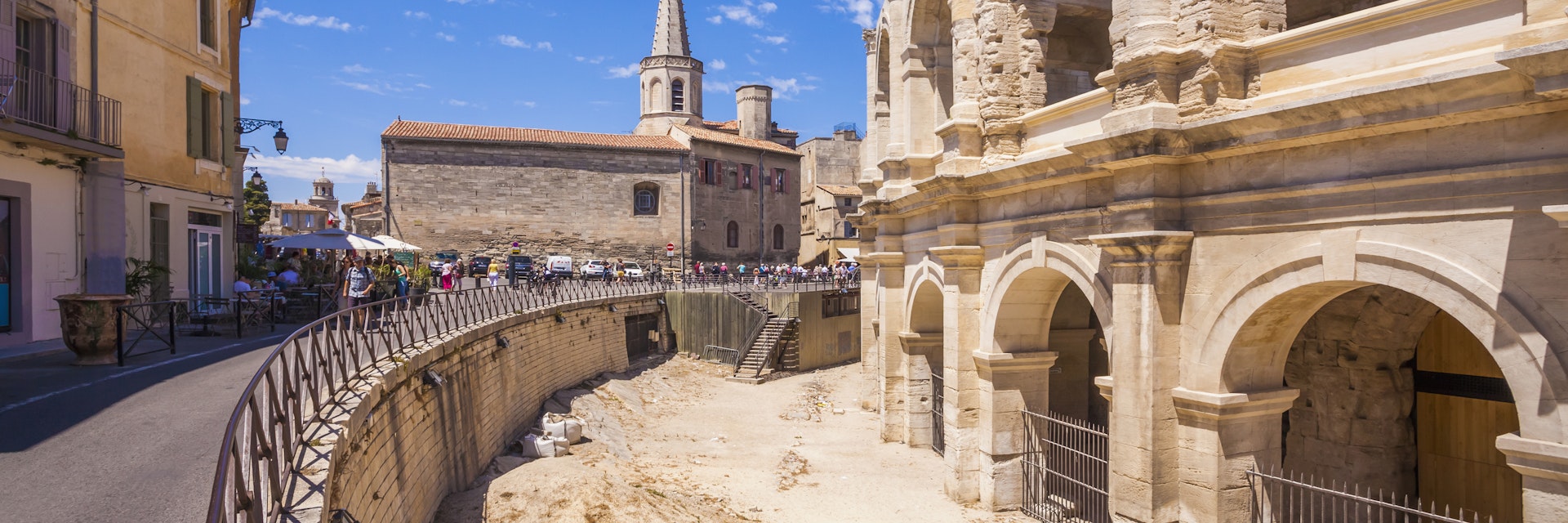
Getty Images
Roman treasures, shady squares and plenty of Camarguais culture make Arles a seductive stepping stone into the Camargue. And if its colourful sun-baked houses evoke a sense of déjà vu, it’s because you’ve seen them already on a Van Gogh canvas – the artist painted 200-odd works around town, though sadly his famous little ‘yellow house’ at 2 place Lamartine, which he painted in 1888, was destroyed during WWII.
Leave the planning to a local expert
Experience the real Arles. Let a local expert handle the planning for you.
Attractions
Must-see attractions.

In Roman Gaul, every important town had an amphitheatre, where gladiators and wild animals met their (usually grisly) ends. Few examples have survived,…
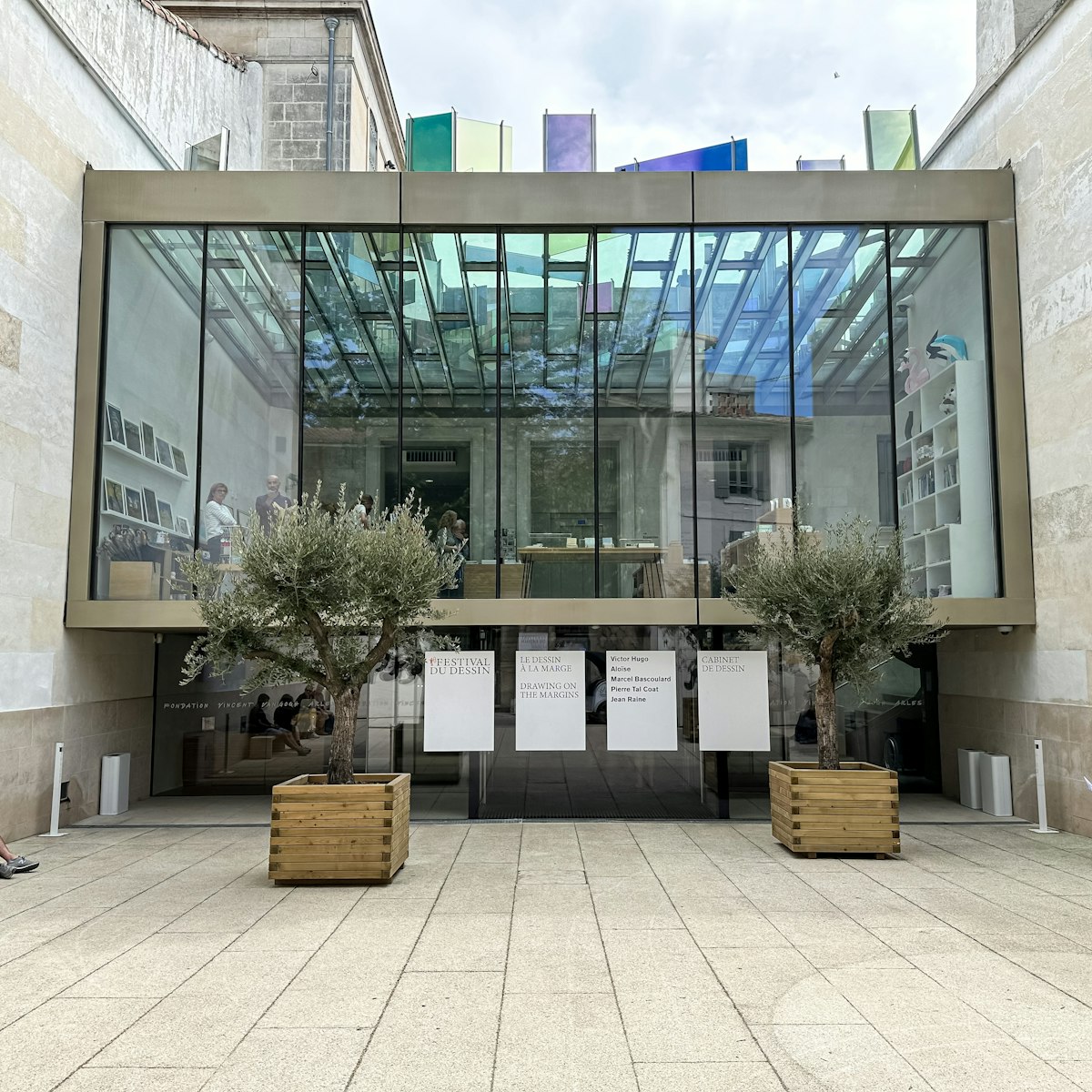
Fondation Vincent Van Gogh
Housed in a listed 15th-century manor, now twice repurposed (its other incarnation was as a bank), this Van Gogh–themed gallery is a must-see, as much for…

Musée Réattu
This superb 150-year-old museum, housed in an exquisitely renovated 15th-century Hospitaller priory by the Rhône, might be assumed old-fashioned, yet its…

Musée Départemental Arles Antique
This striking cobalt-blue museum perches on the edge of what used to be the Roman chariot-racing track (hippodrome), southwest of central Arles. The…

Fondation Luma
Arles' already-bulging cultural landscape avidly awaits this new cutting-edge gallery and arts centre, rising inexorably at a defunct railway depot in the…

Théâtre Antique
It's easy to admire the grace and engineering of this theatre – built at the behest of the unofficial first Roman Emperor, Augustus, in the 1st century BC…

Cryptoportiques
The origins of these fascinating underground chambers, now sitting below the current city centre, go at least back to the first Roman colony in Arles in…

Église St-Trophime
Named for Arles' semi-mythical first archbishop, this Romanesque-style church, built over a 5th-century basilica, was a cathedral until the bishopric…
Plan with a local
Experience the real France
Let a local expert craft your dream trip.

Latest stories from Arles
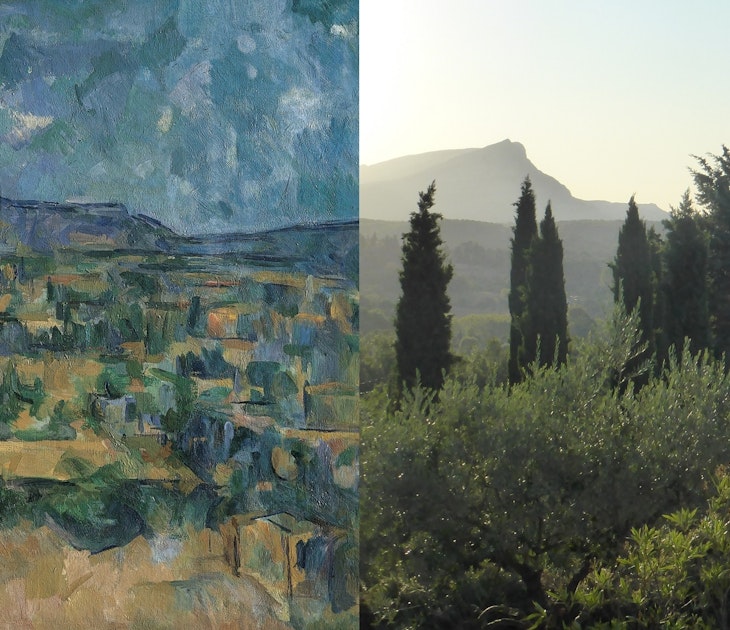
Jan 31, 2020 • 8 min read
Love art and running? Then there is no better way to take in the scenes of Cézanne and Van Gogh's greatest works than by sightrunning through Provence.
in partnership with getyourguide
Book popular activities in Arles
Purchase our award-winning guidebooks.
Get to the heart of Arles with one of our in-depth, award-winning guidebooks, covering maps, itineraries, and expert guidance.
Arles, France Travel Guide | Provence
Ancient, Artistic, and Fun -- Arles is all of these
:max_bytes(150000):strip_icc():format(webp)/james-globe-56a3a1c05f9b58b7d0d2e4e5.jpg)
Yann Guichaoua-Photos/Getty Images
Arles, a UNESCO World Heritage site, is located along the Rhone river, where the Petite Rhone breaks off to the west on its way to the sea. Arles dates back to the 7th century BC when it was the Phoenician town of Theline, and its Gallo-Roman heritage is seen in the ruins which are incorporated into the houses and buildings of the city.
Vincent Van Gogh's arrival at the Arles railroad station on the 21st of February 1888 signaled the beginning of Arles and Provence as an artist's retreat. Many of the things and places he painted can still be seen, especially in Arles and the area surrounding St. Rémy de Provence .
Getting to Arles
The Arles train station is on Avenue Paulin Talabot, about a ten minute walk from the center of town (see a map of Arles ). There is a small tourist bureau and car rental available.
Trains connect Arles and Avignon (20 minutes), Marseille (50 minutes) and Nîmes (20 minutes). The TGV from Paris connects to Avignon.
The main bus station is located on Boulevard de Lices in the center of Arles. There is also a bus station opposite the train station. There are senior discounts available on bus tickets; inquire.
Office of Tourism Arles
Office de tourisme d'Arles is found on Boulevard de Lices - BP21. Telephone: 00 33 (0)4 90 18 41 20
Where to Stay
Hotel Spa Le Calendal is steps away from the Amphitheatre and has a nice garden.
Since Arles is set in a spectacular setting, and has a train station to get you around Provence, you might want to settle in for a while in a vacation rental. HomeAway has many to choose from, inside Arles and in the countryside.
Arles Weather and Climate
Arles is hot and dry in the summer, with the least rain coming in July. May and June offer ideal temperatures. the Mistral winds blow hardest in spring and winter. There's a good chance of rain in September, but September and October temperatures are ideal.
Coin Laundry
Laverie Automatique Lincoln rue de la Cavalerie, by the Portes de la Cavalerie in the north end.
Festivals in Arles
Arles is known not only for impressionistic painting, but for photograpy as well. Arles is home to L' Ecole Nationale Supérieure de la Photographie (ENSP), the only university-level national photography school in France.
International Photography Festival-- July - September
Nude Photography Festival
Harp Festival--End of October
Epic Film Festival - The Roman Theater at Arles stages a series of outdoor screenings of Hollywood epics in August, known locally as Le Festival Peplum.
Camargue Gourmande a Arles--Arles hosts a Gourmet festival in September, with products from the Carmargue.
What to See in Arles | Top Tourism Sites
Perhaps the top attraction in Arles is the Arles Amphitheatre (Arènes d'Arles). Built in the first century, it seats about 25,000 people and is the venue for bullfights and other festivals. TripSavvy trusts its readers to make their own decisions on the ethics of bullfighting as an attraction.
Only two columns remain of the original Roman theater on the Rue de la Calade, the theater serves as a concert stage for festivals like the Recontres Internationales de la Photographie (Photography Festival).
Eglise St-Trophime - The Romanesque portal is the high point here, and you can see lots of medieval carvings in the cloister, for which there is a charge (the church is free)
Museon Arlaten (history museum), 29 rue de la Republique Arles - Find out about life in Provence at the turn of the century.
Musee de l'Arles et de la Provence antique (art and history), Presqu'ile du Cirque Romain Arles 13635 - see the ancient origins of Provence, starting at 2500 bc to the "end of Antiquity" in the 6th century.
Near the Rhone, the Baths of Constantine were constructed in the fourth century. You can weave through the hot rooms and pools and check out the hot air ventilation circulating through tubuli (hollow tiles) and underfloor stacks of bricks ( hypocausts ).
Arles has the biggest market in Provence on Saturday mornings.
Top French Wine Tours, Regions and Wine Routes
Travel Guide for Provence in Southern France
Top Roman Cities and Ancient Sites in France
Top 20 Most Popular French Cities for International Visitors
The 9 Best Day Trips From Marseille, France
The 8 Best Day Trips From Lyon, France
An Orange, France Travel Guide
Guide to Nimes in the south of France
Guide to Marseille, a City Renewed
The Top 15 UNESCO World Heritage Sites in France
Dordogne Travel Guide and Maps
A Tour of West France
The Top 10 Most Underrated Destinations in France
Top Mexico Destinations
Top Gardens of France
Vacation Packing Checklist for France
FinnsAway blog – nomad life and travel adventures

Charming Provence: Arles
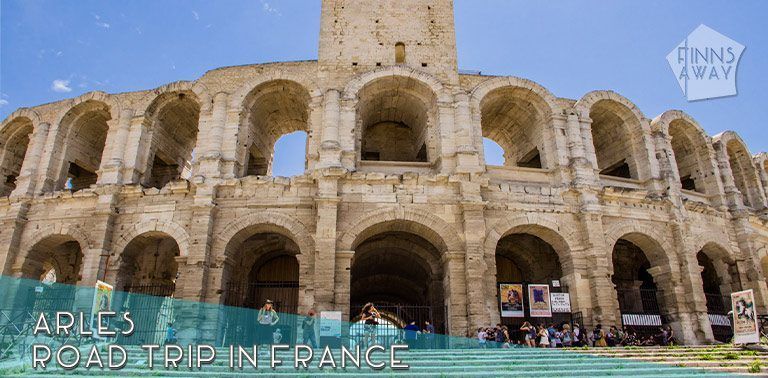
Provence area in southeastern France is filled with beautiful landscapes, historical towns and lovely little villages. Road trip, using the narrow, winding national roads, is the best way to explore Provence and enjoy the natural beauty of the area. One of our destinations in Provence was the city of Arles, 40 km south from stunning Avignon , and 90 km northwest from busy Marseilles. Arles charms with a medieval old town with beautiful old houses along the narrow streets, and with several UNESCO listed ancient monuments. In this post we shortly introduce Arles, with a picture gallery of some of the sights and streets views of the old town.
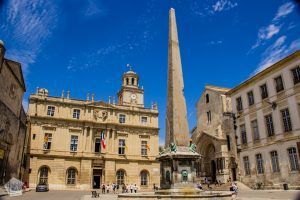
Arles is an ancient city, that has quite a lot historical significance, and the glory of the past is still visible today. Arles was an important trading port already before Roman times, and after the Romans invaded the city in 123 BC, it grew to have also military significance. Walled Arles, back then known as Arelate, was one of the major cities of Roman colony Gallia Narbonensis, and home to several Roman monuments, like an amphitheater, a circus and a triumphal arch . Some of the Roman era structures still exist in the middle of later built medieval structures, and walking tour in Arles is filled with interesting historical sights. The towers of the amphitheater were added in the Middle Ages, when it was turned into a citadel.
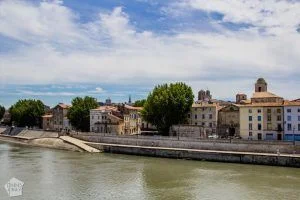
Arles is also a very cultural city, with several galleries, museums and festivals, like the yearly photography festival Rencontres d’Arles. Probably the best known “Arlesian” is Dutch artist Vincent van Gogh . The world-famous painter only lived in the city for 16 months, but it was very productive time for him. It’s said that the light and landscape in Arles enchanted van Gogh, and his works became more colorful, rich in yellow, dark blue and light purple. Some of his best known oil paintings were created in Arles, and some of them, like the Starry Night Over the Rhone, are of Arles.
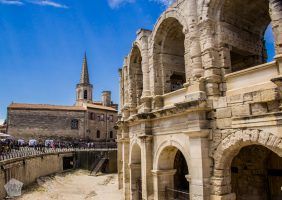
The historical center of Arles is quite compact, and it can be explored during a day trip. However, Arles is so charming, that a bit longer visit may be a better choice. Arles is a popular tourist destination, so there are plenty of accommodation options and restaurants, and even some nightlife. Arles is also a good starting point for exploring nearby destinations, such as the Camargue delta and the Provencal landscapes with lavender fields and small villages.

How useful was this post?
Click on a star to rate it!
Average rating 5 / 5. Vote count: 1
No votes so far! Be the first to rate this post.
As you found this post useful...
Follow us on social media!
Leave a Comment: Cancel reply
Your email address will not be published. Required fields are marked *
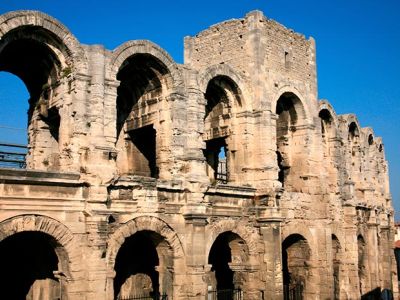
7 Things to Do and See in Arles, France
The ancient city of Arles, France is known for two things: Roman Ruins and Vincent Van Gogh. As the former capital of Provence, this spectacularly well-preserved city boasts dramatic bullfights and crumbling historical sites, an artistic heritage and a story that is written in the stars.
Discover why Arles and the Provence region of France was designated a European Capital of Culture by the European Union by learning about the best things to do in Arles.
Top Places to See and Visit in Arles France
Here are our top picks for what to see and do in Arles –
THE AMPHITHEATER OF ARLES
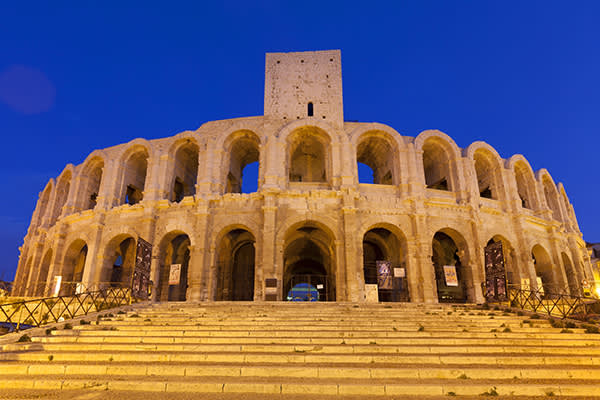
Dating back to the first century, this enormous cavern is hewn out of the side of a hill and is still in use today. As Arles’ most famous monument, Les Arenes plays host to bullfights and the Confraternity of Gardians (herdsmen) which is celebrated with a feast day every May 1.
Unlike the Spanish bullfights, the bulls here are praised for their grace and elegance and are never killed. Instead, bullfighters celebrate their victories with signatures in the guest book of the Grand Hotel Nord-Pinus alongside the likes of Hemingway and Picasso.
THE ROMAN BATHS
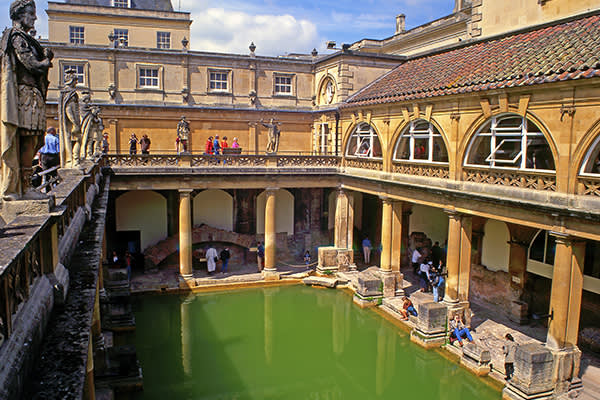
These thermal baths were once used as swimming pools, public baths, and a meeting place. The northern baths, Constantine’s Baths, are the newest and best preserved. Built in the later years of the empire they are made of alternating brick and limestone, and are among the most popular things to see in Arles.
THE ROMAN THEATER

Built on top of the Hauture Hill during the reign of Augustus, the Roman Theater was constructed over a system of substructures made of concentric galleries and vaulted halls. Although not much of the original theater survives, the amazing thing is that the ruins have survived for thousands of years. Today, the Arles Festival is staged near what is left of the theater at the pair of surviving columns referred to as “Les Deux Veuves” (“The Two Widows”).
During the Middle Ages, the theater was mined for its valuable marble and fell into disrepair. However, it is still used today to stage concerts and events like the Arles Festival. Visitors are also able to walk the grounds and explore the ruins.
THE ROMANS CIRCUS
Built toward the end of the first century, the circus could host roughly 20,000 spectators. Its colossal size meant it had to be housed outside of the town walls – which is probably why it was later destroyed in order to fortify a defense wall at the end of the empire.
ESPACE VAN GOGH
Vincent Van Gogh only lived in Arles for a year (1888-89), but it was one of the most prolific times in the artist’s creative life. Here he completed over 200 paintings and 100 drawings.
Espace is the former hospital where Van Gogh resided during his brief stint in Arles, and served as the inspiration for much of his work. Today, the courtyard is encircled by a garden that is laid out exactly as it was in the 19th century, as evidenced by Van Gogh’s own artistic works and letters.
The dramatic time he spent in Arles would ultimately lead to his infamous breakdown and the mutilation of his own ear. Today, you can discover the same inspiration Van Gogh found here well over 100 years ago, as well as browse souvenir shops for Van Gogh items to take home as keepsakes of your visit.
LES ALYSCAMPS
Always toward the top of the list when it comes to what to see in Arles, this ancient cemetery comes from the name for “Elysian Fields,” the place where valiant warriors were taken upon their death. The tree-lined avenue of Medieval tombs has been mentioned in Dante’s Inferno, and painted by both Van Gogh and Gauguin.
NOTRE-DAME-DE-LA-MAJOR

The church where the Gardian’s Mass is celebrated dates to the 12th century, although a Roman temple existed on this spot years earlier.
ARLES VISITOR CENTER
If these suggestions aren’t enough for you, the Arles Visitor Center is a great place to begin your visit to Arles. A highly informative and friendly staff await to answer all your questions and tell you what to see and do in Arles. They are eager to share their expertise, as well as provide maps and other resource materials to browse.
It is here where you can grab a map and begin a fascinating walking tour of ten reproductions that depict actual places Van Gogh captured throughout Arles, including Starry Night Over the Rhone and Cafe Terrace at Night.
EXPLORE FRANCE WITH YMT VACATIONS
YMT Vacations’ has multiple Rhône river cruises, including Rendezvous on the Rhone and the Rhône River Cruise in Lavender Bloom, that take you through the charming town of Arles.
To join one of these unforgettable journeys, call your travel consultant or YMT Vacations at 888-860-1969 .
Expert Blog Entries
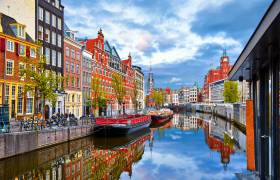
Top European Destinations to Visit in Spring

Rose Parade 2024: What To Expect
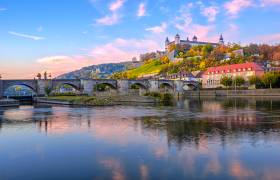
4 Reasons To Love A European River Cruise
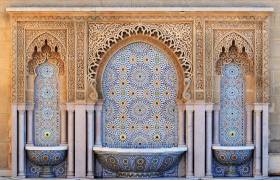
The Best Time To Visit Morocco
Our best selling trips.

Transatlantic with Iceland & UK Cruise
Take a journey you’ll never forget on this transatlantic cruise from New York City to the distant shores of Europe. Enjoy port stops in Canada, Iceland, France, and Ireland.

South Africa Safari Tour
Per person, double occupancy, excludes roundtrip airfare
The roar of lions. The trumpeting of elephants. The pounding hooves of zebras. If you’ve spent your whole life dreaming of Africa’s wildlife, this tour belongs at the top of your bucket list.

German Christmas Markets
Immerse yourself in the festive traditions of Germany at Christmastime! The air is perfumed with the aromas of mulled wine and gingerbread, and the streets are aglow in glistening lights.
Sign Up & Save
Lost in Arles
Beyond the red carpet
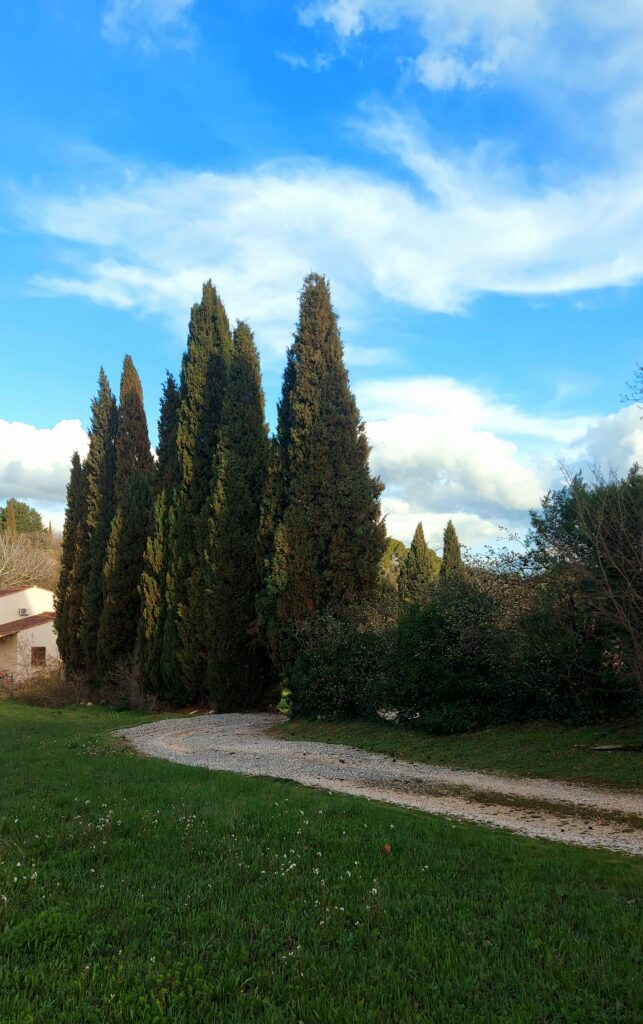
I took the garbage out just now. On the corner, there is a giant old house with a walled-in garden. Sometimes there are birds singing and that was the case today. So I stood really still, tilting my head upwards, craning my neck to look past the waves of bamboo and into a new-leafed tree. “Magpie?” I wondered. But I don’t really know their calls and could see nothing so I simply stayed and listened to the melody. It was insistent. A refrain repeated over and over that could have been titled, “Joy” but for all I know that winged one was just complaining to his neighbors. I realised that the sun was touching my skin, that it was warm, that I was just fine without a coat or woollen anything. It felt good and I was lifted, me, just there, in the middle of the street.
The wind has been busy and the rain overfloweth to the point that the Rhône threatened to come into town. The fête foraine , or amusement park, set up just on the other side of the rampart wall from where I live, decided to leave early because of it, much to my relief. I prefer birdsong to adolescent screams, no matter how filled with wonder they might be. My box of an apartment is quiet again while the world is breaking into being outside, over and over and over. What difference this is from the covid lockdowns where silence was everywhere and a warning. One that left its imprint on me. I am different now than I was before in more ways than I can count, fingers and toes included.
Yesterday, I finally rolled out the red antique carpet that my ex had dropped off a few years ago; practically the last that I have heard from him. It’s funny how fifteen years can be so easily swept underneath. He left me the carpet and a coffee table from Rajasthan, perhaps because they reminded him of me, of the life we had together, for that was where we ate for the first three years of living together. The rug is heavy and worn. I dragged it into place and was not prepared for the scent of my dogs that arose, both now deceased, their golden hair still stuck in places along with a dried up cockroach who had come along for the ride. I told myself that it was ok to cry if I wanted to, but I couldn’t. My tears would have been like the river and swept me off to sea. I got out the vacuum and opened the transom above the door instead, uncertain as always.
My current companions apartment down the way is tiny but it has a tub to sink in, plus views to wish upon and a small yard. In French we would call it un jardin, a garden, although nothing is really cultivated in it beyond new memories. I have just gotten back from some time there, time suspended as in parentheses, as if the world was on hold again. The last evening, my sweetheart encouraged me to get out and go for a walk. I grabbed my phone to have a camera that would make me look at the light. The light and growing things, things that are new. This person stepping gently so as not to crush the weeds and wildflowers was me but she was who? I don’t really know or at least am not as certain as I once was. So very, very much has happened I must be not the same, but different, musn’t I?
I am not sure if I will keep the carpet. If I can just make it only memories about my sweet pups Ben and Kipling and not the representative weight of an elegant past, then maybe. I can admire the deep ruby color, like the wine I no longer drink and walk upon it barefoot, imprinting anew. For here or in my boyfriends garden, there is love as well. That word stops everything in its tracks, doesn’t it? Things may well get worse before they get better on our planet blue but happily, luckily, that one word is still here – never the same but different – and it sings like the Magpie, true.
All that I have done

All that I have done: I danced on bars and climbed the Pyramids at sunset, Have kissed movie stars and refused their further advances, Drank next to Keith Richards and walked past Mick Jagger in the park, under snow. I have cried deep with relief from finding a twenty on the pavement, knowing then I could eat, but fed a homeless man and his dogs during the Covid lockdowns because I had lost a home too, a big one, and not only in my heart. I went on expeditions up the Niger River and down the Amazon as if it were normal because that is how everyone around me behaved. I kept so many tears and plentiful awe close to hand, to write; Because the Taj Mahal is really something, at sunrise.
Love and love and love.
I have died while playing the role of Cleopatra and shed the veils of Salomé on a New York City stage. So I can put myself in your shoes or combat boots for I have survived treason and bankruptcy, moral and monetarily held. There is nothing, not a dime, coming in for my retirement.
So I rub my eyes red, dry from too much drifting, this breath of in-between. A January seeming says “look back” with an encouragement that leads me to books. Look what I have done and ready my stretched limbs for coming Spring. One not for youth, a tender time of petals pushing, hoping for the surprise of blossoms, yet expecting none.
All that I have tried, and what I know only I have done.
Wishing you all a Happy 2024,
With much love,
Thinking of Cyril + a new poem
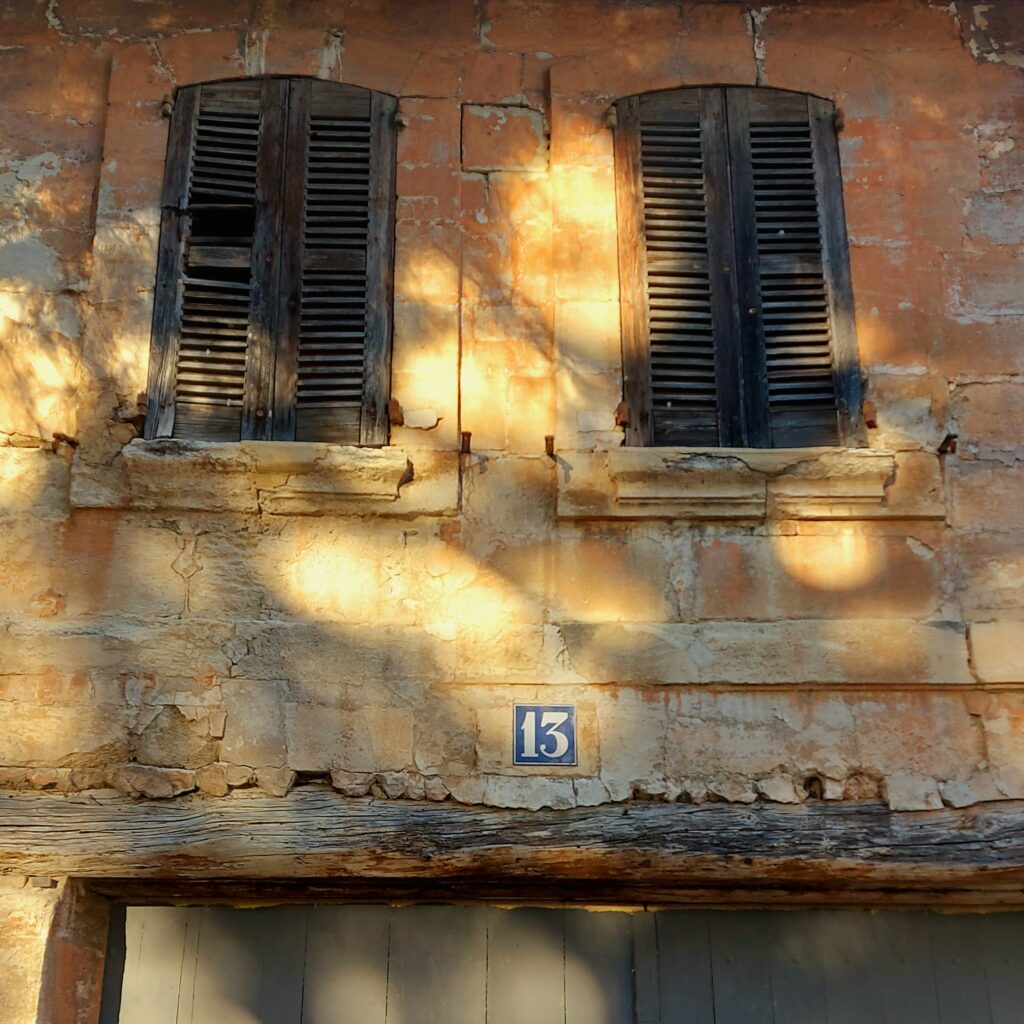
Just down the street from where I live, there is a hole in the ancient fortified walls that opens on to a tunnel, the Passage Oratoire. If you cross it, a wobbly cobble stone path leads you to the heart of Avignon, even to the Pope’s Palace, le Palais des Pâpes .
There must be hundreds of people who take that route most days, on their way to work or Les Halles or shopping. It is a locals thoroughfare. And yet, how few would acknowledge the seated thin man with legs tightly crossed, over one another, his head nearly always tucked deeply into a time-browned paperback. Perhaps this laissez-faire was due to the two massive Rottweiler mixes perched on each side of him, despite their rubber muzzles. His own personal gargoyles. A folded baseball cap turned on its belly was hap-hazardly left as far away from the dogs as possible, the less to intimidate and there was often a few shiny coins within it.
And yet this man, although often completely drawn into his thoughts (or perhaps because of it), had a regular relationship with quite a few of the passer-by. That was easy to see. Eventually, I too became one of his “regulars,” overcoming initial shyness to ask how he was doing, what his book was about. I would offer my hand for his dogs to sniff and soon they would see me coming before he did, their stubby tails thumping. More than once, I was left with deep scratches on my wrists from their jumping hello’s but that is ok. It was up to me to pay attention to their weighty affections, not them.
The man’s name is Cyril.
I understood and respected that he didn’t want to tell me too much of his story. That he was on the streets because his dogs were his life and they are not welcome in the shelters. Also that he was here, far removed from the many panhandlers on the main street of la Rue de la République because he didn’t want any trouble for the three of them. I never saw him in a state where he appeared drunk or high and he finally gave me the hint that what would be really helpful was food rather than money so that he didn’t have to go to the stores and risk leaving his dogs alone outside. He showed me frightening wounds from dog fights when things didn’t go well but would wave fingers in front of his face as if chasing a fly, “Oh, I will be fine, I have had worse,” followed by a toothy grin. Once opened up, he would show a confident, if chortled, laugh.
And then the COVID lockdowns started. At their most extreme, we were limited to a one-hour walk per day within a one-kilometre radius of our residence with signed “attestation de l’honneur” in pocket always. The Passage de l’Oratoire was empty.
However, at this point I had already started bringing him cans of ravioli or lentils and sausage, usually at around a cost of one euro each plus ten for the dogfood when he needed it (and he would say, “No, I am good,” when he did not). I wasn’t the only one. Someone else had given him a portable stove which he kept at his camp, just over the wall. I remember how proud he was the first time that he showed me his temporary home: “I have fresh city water that comes out of a tap from the parking garage and bushes for privacy. This is public land but the cops won’t bother me here.”
Cyril prepared me for how to visit. “Give me a shout, call my name before you come so I can hold back the dogs.” And I can tell you, the first time that he decided to let them run up to me freely without muzzles, I sucked in my breath and hoped for the best. He would come ambling down the incline towards me, barefoot and those few minutes of chat made me feel human, so much less alone. Our banter was simple but real. As it got colder, sometimes he would just stick a tousled head out from his tent and I would leave the sack for him to retrieve when he could. Always a thank you or at least a wave of appreciation was given.
The temperatures dropped as they always do right before Christmas. So I went to H&M and bought him the thickest fleece jacket that I could afford. Along with the usual offerings, I had put together tupperware boxes to share of what I had made for myself for that night, the 24th. I was so excited that I was practically bouncing as I made the walk to his camp.
Immediately, however, I knew that something was different, something was very wrong, so much so that the air crackled not with cold but as if it had been torn open. Cyril saw me staring, my bags at my sides and started to scream at me. “No, no, no. No more!” I couldn’t tell if he was pacing or stamping the ground but the dogs were growling at me from a distance and I started to be afraid. “But it is Christmas! I have…” I gestured…”I will just leave these…” but I could not finish my phrase. He was again, yelling in a high pitched voice, “NO! I don’t want ever again! Go!” The dogs were starting to make a slow slink towards me.”Gooooooooooooo!” He was howling, his face twisted. I realised that I was in danger and backed away.
I cried when I locked the door behind me at home. This was a mental breakdown that I had witnessed. I knew that I could not call for the paramedics because of his dogs or the risk that they would be taken away from him if he was hospitalised. I cried when I returned the jacket and the cashier asked no questions. I still have some of the cans in the back of my kitchen cupboard. The rest I have given away.
He was gone once the lockdowns were lifted, his camp cleared out several months later. I have only seen him once since then and again it was the dogs who recognised me first from quite a distance. I changed my path, respecting his wishes.
We can never know what others are going through or how they (or we) might behave given a change of circumstances. I am still so grateful for the exchanges that we had. Brief as they were, they were filled with resilience and light. Livelihood and shared concern.
For Cyril, I hope that he is well wherever he may be and that his dogs continue to give him much love and hope. There is a part of me that feels certain that this is true. Somehow.
It took me many months to tell this tale.
If you would like, you can hear me reading this post here:
A video that I posted on Instagram from that period:
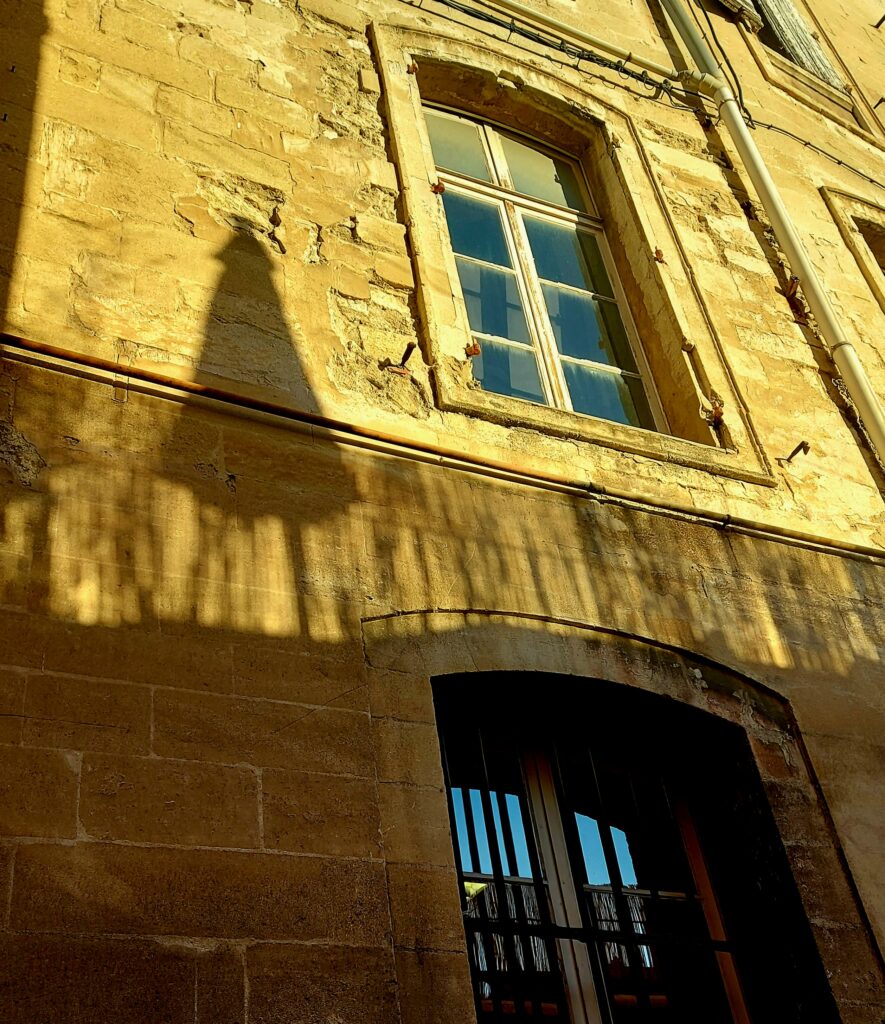
if a light burns i will find it stumbling foot forward nose to the air billowing below my blindfold.
my many floundering. ways but ceaseless days of searching have kept my senses sharp
a mother yet not with child i lean on the connecting strings another life of listening for that giving harp
If you would like to hear my reading of this poem, you may do so here:
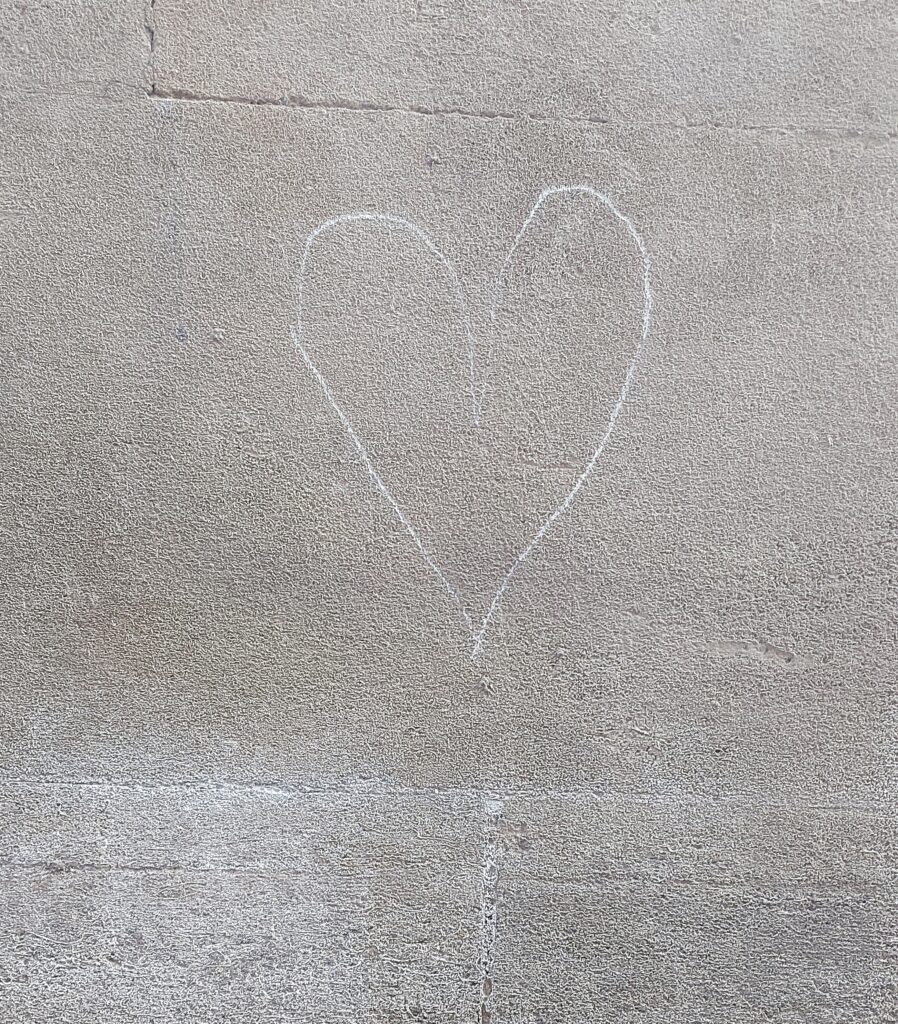
I miss you all. I miss writing and sharing all that I love. Such an incredible community you are. These are strange times, still, for so many of us. All the more reason to be grateful for what is real.
With much Love,
Giving thanks, not too late
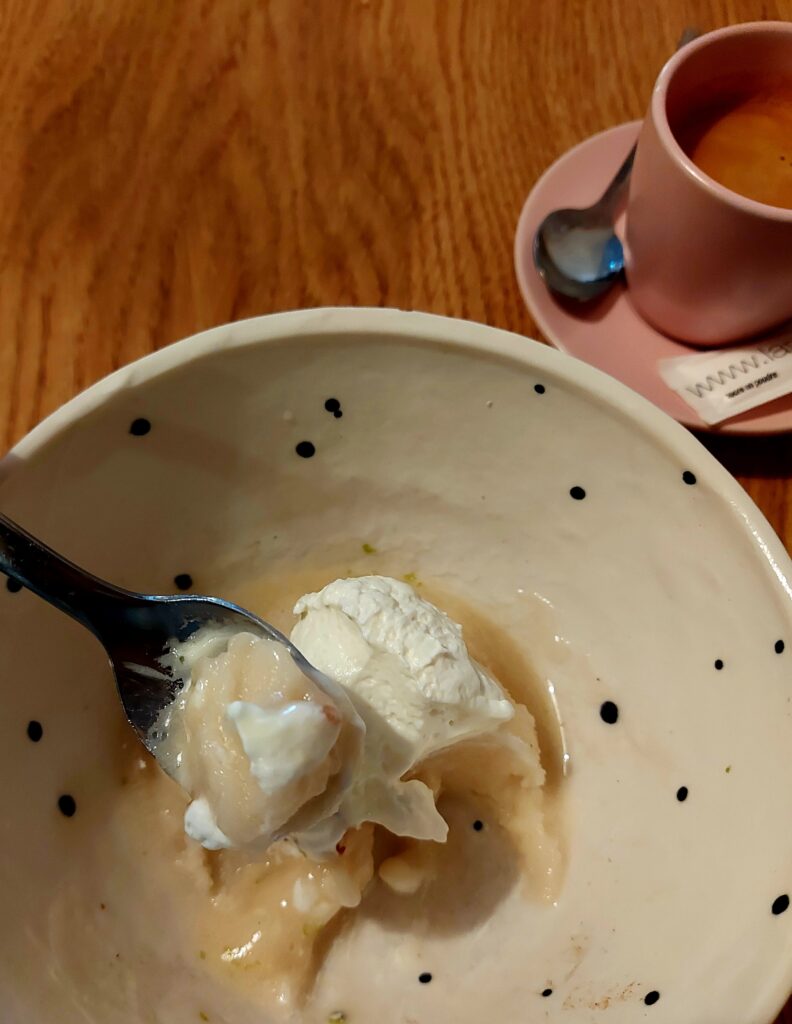
Aaah, I may be a few days late to the Thanksgiving feast but gratitude still reigns supreme in this quirky heart of mine. Valiant of stomach, I hied myself through a bristling Mistral wind to see my friends at a wonderful restaurant, Première Édition, here in Avignon. I actually hadn’t been given any choice in the matter as my food-writer friend, Marc Fournié, told me simply that I had to try cheffe Aurélie’s chicken. Yes, Marc, ok, twist my arm, but…I was in a conundrum. For I had also seen something on this week’s menu that especially tempted “ les papilles ,” aka Yee Olde Tastybuds.

As gluttony was inherently excused in honor of the celebration, after a brief discussion with the cheffe and her sous-cheffe, I went full monty (all while keeping my clothes on).
For what I really had come to try was the pita. No, not the college dorm version of yore for it was not cardboard stiff but outright pillowy, even though it had been just barbecued “ à la minute. ” When it arrived, I lowered my face far nearer to the plate than sheer politeness would allow to take in the perfume of the creamy goat cheese, cooked raclette -style and…truffles. Truffles. Just let that word roll around on your tongue a bit and even if you have never had the pleasure to try these particularly pungent fungi, you might get a whiff (pun-intended) of how luxurious they are. All of this was hidden under fresher than fresh greens from the Alpilles (and knowing Aurélie they might have been picked that morning). I would bite and savour slowly, on repeat.
As I did, with the arrival of patrons a mounting cacophony of gossip and laughter ensued at the surrounding tables. “Jonathan?” I asked of the co-owner/reliable charmer, “Do you know what I hear when I listen to everyone?” “Well, I don’t have the time to hear them myself, really…” “No, not word-for-word but in general,” I interrupted. “I hear contentment, people letting go and relaxing. You know, that doesn’t often happen in France…not quite like this.” He nodded. “A happy face,” he responded. Yes, a happy place too.

Alright, then now on to the afore-mentioned stand-in for the big turkey: an even-finer chicken. One that comes from the farm of “Elisabeth” and of course is as organic and cossetted as they come, served here with deep cooking juices, a citrus ouzo oil, along with mandarine shiva mikan (don’t worry, I had to look them up as well). As if that wasn’t enough, on the side was a bowl of corn polenta that was truly more like a porridge that I wanted to close my eyes and have my Mom spoon-feed to me, even at 53.
Food is such a delight. Isn’t it? Literally, like Turkish Delight, which I first read about in “A lion, a witch and the wardrobe” and was startled to learn as an adult that it is actually something that exists in the world. When food is this deeply satisfying (or as dynamic as in the cooking of Florent Pietravalle in my previous post), we are not only eating other people’s thoughts, we are eating their dreams.

So perhaps that is why it was especially perfect to finish with something so simply lovely as my dessert. I did try to convince myself not to have it. I did. But Jonathan assured me that it would “help me to digest” my previous indulgences (insert snort of laughter here) and Marc had also insisted about this so here we go: pear and tea-infused sorbet with mandarine keraji flakes (shrug), whipped yogurt and candied crunchy hazelnuts. As if I needed to say anything possibly more than that. Sweetness rendered.
And it was doubly so, as a lovely young person stopped by my table on her way out. She told me that she recognised me and loved what I put on Instagram. As she turned to go, I nearly blurted out, “Wait, wait, tell me more please!” Isn’t that beautiful? I might have blushed but shh.
So here we are at the end of the meal. Jonathan had brought me my espresso WITH my dessert without any judgement. The music was good, the cacophony rendered into a lullaby symphony. And while I was sitting there technically “alone” – the chair across from me, empty – the feeling during the entire meal was that I had been anything but. Not only was there the very palpable “bonhomie” extending from everyone at Première Édition but also all of my personal loves, right there beside me, right up close in my heart. They are great company.
It has been a hard time – sorry, hard times – for my tribe. My wonderful man L would have been with me if not for having just contacted COVID (again). I have been going through some things that are not appropriate for me to talk about fully but he has unfailingly been my rock. The tougher the times, the more solid he is. If that doesn’t make you want to do a turn about, what does? My family were there with me too. There is so very much on the table (again, sorry for the pun). And yet they still joke when needed and listen with the same sincerity. I try to do likewise for I love them so. I have had an unimaginable gift of reuniting with a nearly lost for forever friend. And yes, there is all of you. I did declare as much via Instagram on Thanksgiving but there are many of you that have still held on to this blog, no matter what. Forgive me if I have tears in my eyes as I type that for “my heart overfloweth.”
It is certainly lovely that there are happy drops on my keyboard just as I am grateful that my belly is full after such a wonderful meal. I don’t take any of it for granted. Not one tiny bit. It is never too late to say thank you, so to everyone at Première Édition, my love, my family (including those gone) and my friends known and unknown all over the world, I do.
Be well, stay safe and be kind,
The next I know when
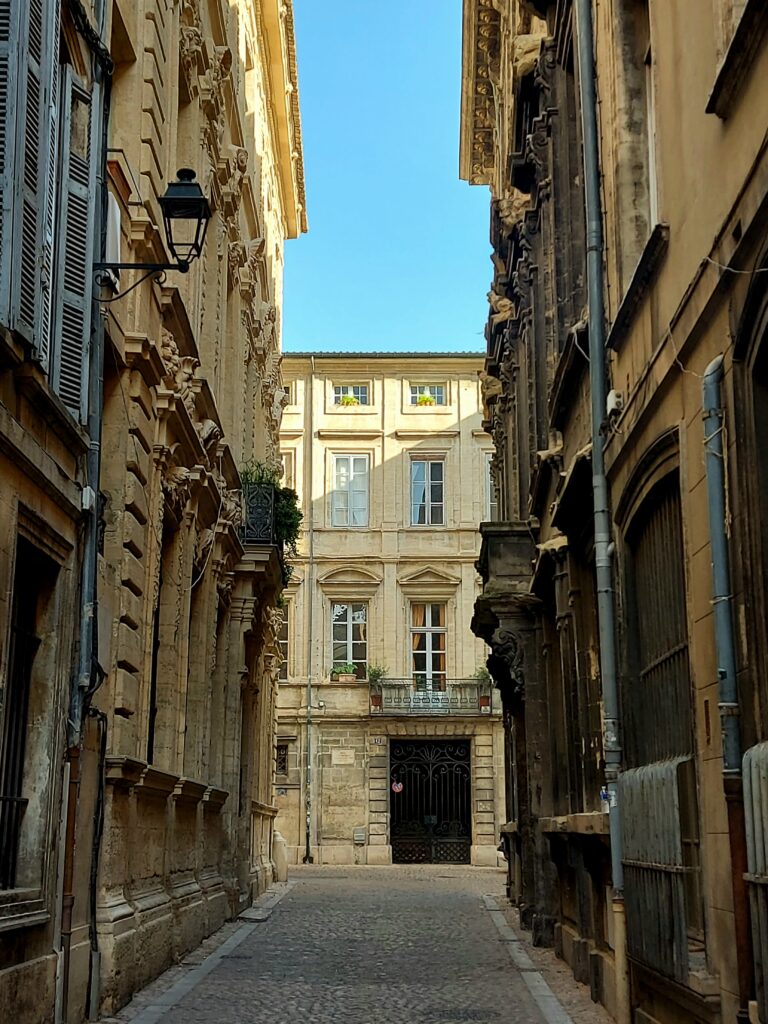
“Heather, just sit down and write.” “But I can’t. I no longer have the words.” “Yes, you do. They may not be the perfect ones-” “I used to be such a good writer.” “-but they will be good enough. Just sit down and bring the keyboard closer, Ok?”… “Ok.”
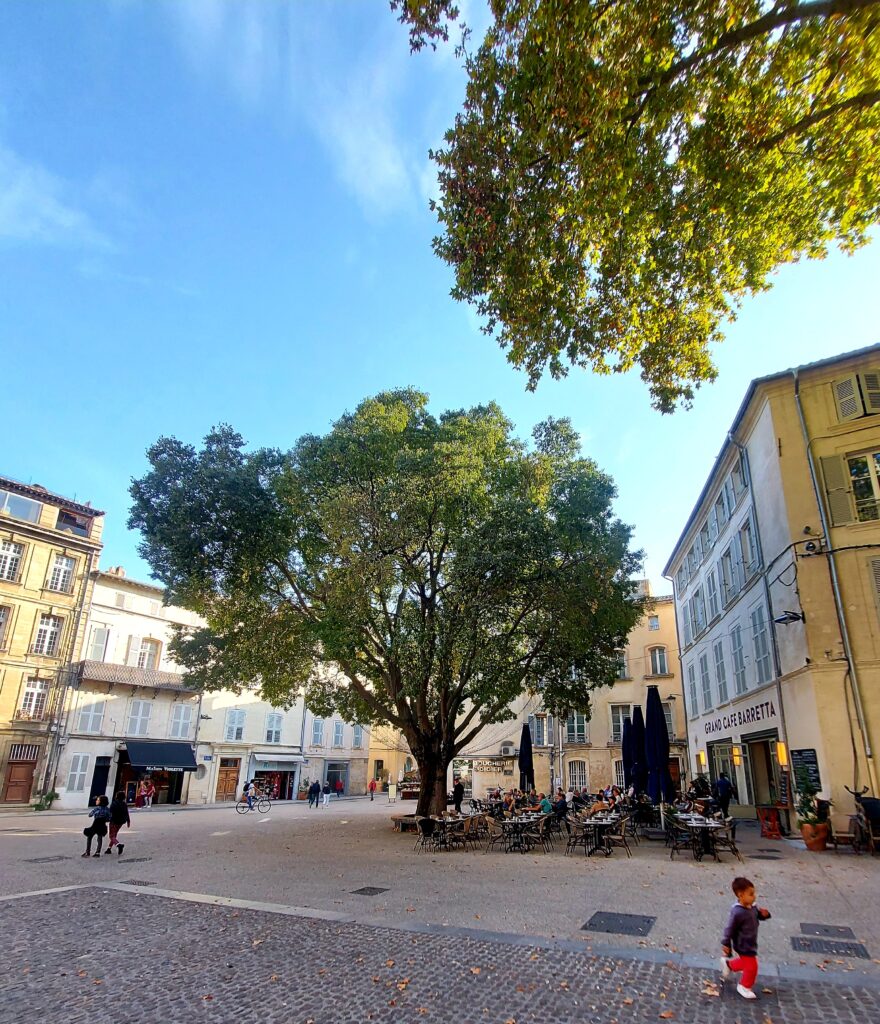
I have been trying to decide for weeks if I was going to share this with you. This time that is both a sucked in, breath-held silence and yet a roiling internal volcano. There are moments when the fires burn through me just as with others I am struck immobile by the weight of loneliness upon my shoulders. I try to rally and usually fail even while knowing the treasure of being truly loved. It is a forever, no ever time.
Let me go back a bit.
As many of you know, when I decided to stay in France after the surprise of my separation, it was tough. No-one would hire me save for finally a job as a receptionist at a hotel and that was only due to a favour called in by my ex’s new companion. I worked hard, really hard. It is the only way that I know how to work. The first day I showed up in a Prada jacket that was quickly ruined from sweat stains under my arms. I was the oldest person by far, save for a Night Auditor who is roughly my age, has been there for 25 years and is untouchable. And so I felt that I had to do extra to try and find my way (if not to fit in) amongst my colleagues who were half my age, who could have been the children that I never had.
I have a list somewhere on my computer of all of the comments that mention me by name on websites such as Tripadvisor. “Every hotel should have a Heather,” says one. I remember the person who told me to make that list “for one day, in case.” He lasted two weeks or so, maybe three and moved on to easier pastures.
I didn’t. Although, I started at the hotel in July of 2017, it became official that November. My bosses were kind about my insomnia and I only work evenings. When I was hired as a professor at the local university, they switched my contract to 35 hours a week instead of the normal 39 so that I could do my Friday afternoon classes. But that same director forced me to resign from teaching when he felt that it was overly taxing me. Either the teaching or the hotel. I had no choice but choose the latter for financial reasons and more importantly, for my visa to work in France. I miss the sound of the classroom, my playing jazz much to the bewilderment of the kids creeping in to speak my language, English. There were no rules, I taught what I want how I wanted. It was a first attempt at my trying a to work a job in my way and it felt wonderful.
Of course, things and people and society change which each breath we give but both the arrival of Trumpism and COVID accelerated a movement of “each person for themselves” that came so quickly and so assuredly that I think that we still haven’t really seen it for what it is. Or perhaps are beginning to do so.
Was I lucky that I was supported by the French government during the lockdowns? Absolutely. But when the hotel first opened afterwards, I was often the only employee present on the property at night. I felt scared. I once confronted a drugged up man who was inches away from me, behind the reception desk, looking for the cash drawer. Times felt desperate. Clients, after so long in seclusion, seemed free to say whatever came to their minds with politeness discarded, not even an afterthought.
As with all of my colleagues, I took and took and took their disrespectfulness. The pointed, jabbing fingers or the inappropriate “tu” instead of “vous” in French or Americans yelling (or sometimes crying) over a lightbulb out in their room. About things that were largely not at all under my control. It came down to an evening where a Brazilian woman became ferocious because she had been assigned a handicapped-equipped room (for those not in the know, they are often the biggest). For some reason, she took it personally and demanded another room. We had none available. She began to scream. “What is wrong with you that you gave me this? Why? Is it because you are fat and ugly that you did it?”
I walked away and hid in the kitchen for a few minutes to catch my breath. She was still at the reception when I returned and became so violent that I had to threaten to call the police. My boss was amazing when I got through to her and told me what to say. One of the chefs from the kitchen came out to stand next to me, protectively. The woman left and the next day I went to Italy for a planned break with my honey.
But something had snapped. And it wasn’t just that one incident. If the word that is most often used to describe me now is “resilient,” it is for a reason. So in Italy I ate and ate then drank too much while L tried to find his way to me. I looked to the stars over the mountain where we stay, trying to find a reason or meaning and in a way, I am right there still.
With the insistence of my psychologist, my psychiatrist (yes, I have both) has put me on work-leave for burnout. That started in mid-September and it is now the beginning of November. I see my psychologist once a week and have done a lot of reading about my current state, where I am permanently in “fight or flight” mode. Survival. Tired and wired. Which brings me back to that initial conflict of feeling that I described.
I have gained a lot of weight during this pause. It is as if my body is preparing an outer shield for battle. And yet it makes me ashamed, just as I feel for being on sick-leave, so that I often don’t want to go out in risk of being seen by someone I know, even though a bit of contact would do me so much good. Next week I won’t accept the invitation to an art opening that I would love to attend as there is too much risk that my ex will be there. This despite my current companion supporting me and loving me, exactly as I am, which is new and gratefully received.
So what do I do while I find my way, yet again? On a good day, I try to wipe the slate clean. In forgetting these current, strange circumstances, I look at my surroundings like the tourists that I cater to and try to be glorified. That is what these photos mean to me. I am also reading a lot about what I am going through as if I could translate my mind to my heart. There is more than it is wise to share here but the stakes are high for me to stay in France. May this beauty hold me, carry me and sing me to the next certainty. Or a feeling of long lost and then retrieved agency. Until the next I know when.
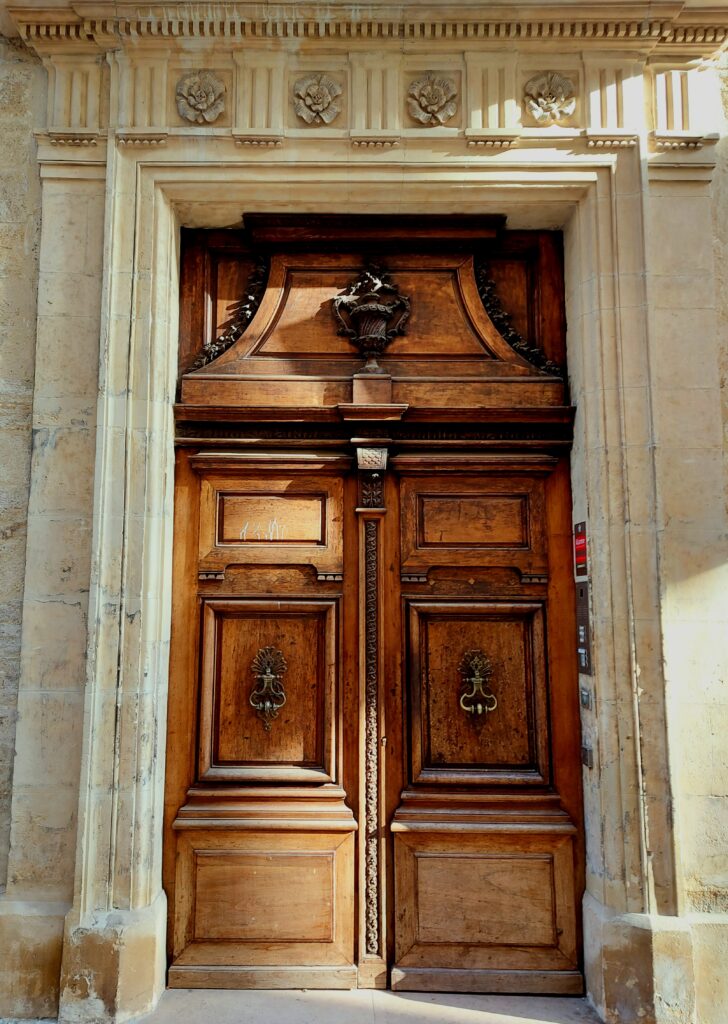
A once in a lifetime meal – La Mirande with chef Florent Pietravalle
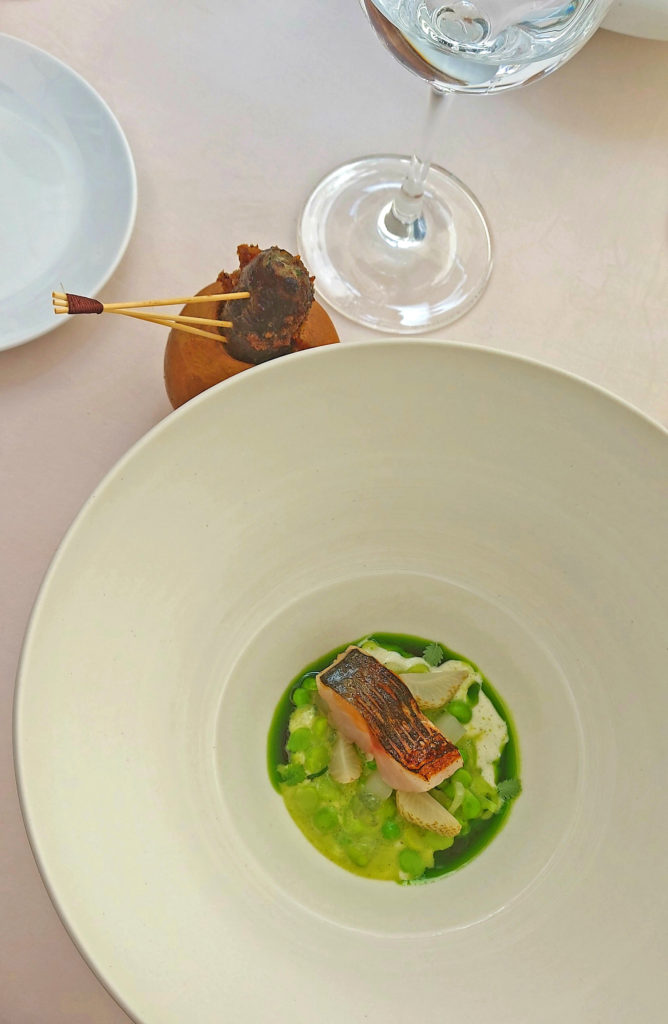
Local is as local does. This might explain why Florent Pietravalle, the 34 year old chef, wears his star lightly and seems perhaps even more proud of his having been one of only a handful of chefs in France to have received Michelin’s Green star. This recent award is a celebration of chefs who are truly dedicated to taking their commitment to working with regional producers to the next level and to promoting sustainability in all of its forms. The kitchen of La Mirande goes far beyond the now cliché idea of having an on site garden towards creating obviously but not obvious opportunities such as growing their own mushrooms in the wine cellars, which can then be distributed (and sold) to the surrounding cooking community at large.
It is exactly through this tightly bound network that I had the great pleasure to first meet Florent. The French BBQ pitmaster (and character extraordinaire) Carlos Bear suggested that I taste the delicious slices from Roman piazzolo Sandro of Côme à Roma, who quickly became a dear friend. When I found Sandro and Florent in conversation over a crumb-lined table there one winter afternoon, I shyly introduced myself and took my leave. When I questioned Sandro later, he gave an Italian shrug and suggested the possibility that they might collaborate together one day.
Enter COVID and the French government lockdowns. While it was too expensive for many restaurants to open for take-out given their large staffs, Florent forged ahead with an idea still quite new in France and certainly for a Michelin-starred chef. Over a series of twelve weeks, he would invite a series of uber-creative chefs to reinvent or elevate an example of the comfort that we all longed for. Street Food. Perhaps because I knew so many of the other chefs, I felt completely at home in the underground kitchen. Each week, I would stride in (masked of course) and watch the team work, joking with Florent all the while. Somehow, I was welcomed as if I had always been there. Honestly, that once a week visit and accompanying bites of deliciousness (a “hot dog” made from locally-sourced trout and topped with crackling roe is just one example) really helped me to get through an otherwise lonely and challenging time.
It left me with the hope to “one day” try his “real cooking” in the formal dining room upstairs although I very well knew that it was beyond my near minimum wage means. Happily, I received an unexpected windfall and even better, my Mom was able to travel again. To top it off, our meal would be celebrate her 75th birthday. I called or texted absolutely everyone I have ever known even vaguely linked to La Mirande to ask for a reservation. Although clearly already booked, they made room for two American redheads. It was set.
While both my Mom and I have eaten at such establishments in the past, on the day, we made a pact that this go around, our only objective was to be completely ourselves and simply enjoy. And so I sported a massive smile as I strode through the silently opened front doors, so delighted to see all of the server’s, barman and sommelier who I had come to know in their street clothes during the Street Food series entirely metamorphosed and ready for the service to begin. We were seated at the table closest to the kitchen. I ordered the menu in six services, as well as wine accompaniments for me. As the first of several surprises, two coupes of one of my favourite champagnes, Billecart-Salmon rosé, were offered as we were considered friends of “ la maison. “
And then we were off, somehow both whisked away into Florent’s imaginary world and yet entirely rooted in the Provence so perfectly represented on each plate. I will let the photos speak for themselves. Ingenuity, curiosity, virtuosity in technique, these are all qualities that Florent possesses in his cooking and we are all the luckier for it. Long after the actual dégustation, I can summon the taste and the feeling of being present on that glorious afternoon. The flavours and textures were somehow both subtle and yet bright, as if drawn with a Fifth Dimensional pen.
There is a story in my family that I love. My Dad did his best to take my Mom to Paris when funds afforded. And this was quite a trip in the 70s. From Michigan to the City of Light. Now, as the tale goes, we used to think this happened at La Tour d’Argent but my Mom now wonders if it was at Lucas-Carton. Regardless, both were institutions of la gastronomie française at the time. Staid business men surrounded them during their lunch, chewing silently in between deals. And yet, when the serveur brought my Mom her main dish, she clapped her hands with glee at the beauty on her plate, a bright green of spring that she had never seen before. It must be said that serveur slid into a smile at the sight. However sly it was.
My Mom and I had several such moments during our meal. For isn’t that what is to be hoped for? To not only be delighted but to feel wonder too? We stayed very late and laughed and laughed. Yoann Dell, Florent’s second in command, was kind enough to take us down to the cellar to see the afore-mentioned freaky mushrooms and other curiosities. We rose back into the light of day, eyes blinking and lips still smiling wide.
At the end of it all, once your bill has been paid (which might make you give a short cough on first view), you are presented with a treasure map. One to take you back to the beginning. It represents our unique corner of Provence and on it are dotted the farms and places that raised or caught the elements that are orchestrated at the Michelin-starred restaurant of the La Mirande Hotel in the shadow of the Palais des Papes.
Thank you, dear Florent and all of your team. You have given my Mom and I a moment that we will never forget. But even better, a friendship between us. I believe in you. Keep going. This is your calling, your destiny and how beautiful it is to be in the midst of constant creation?
And artist is as an artist does…
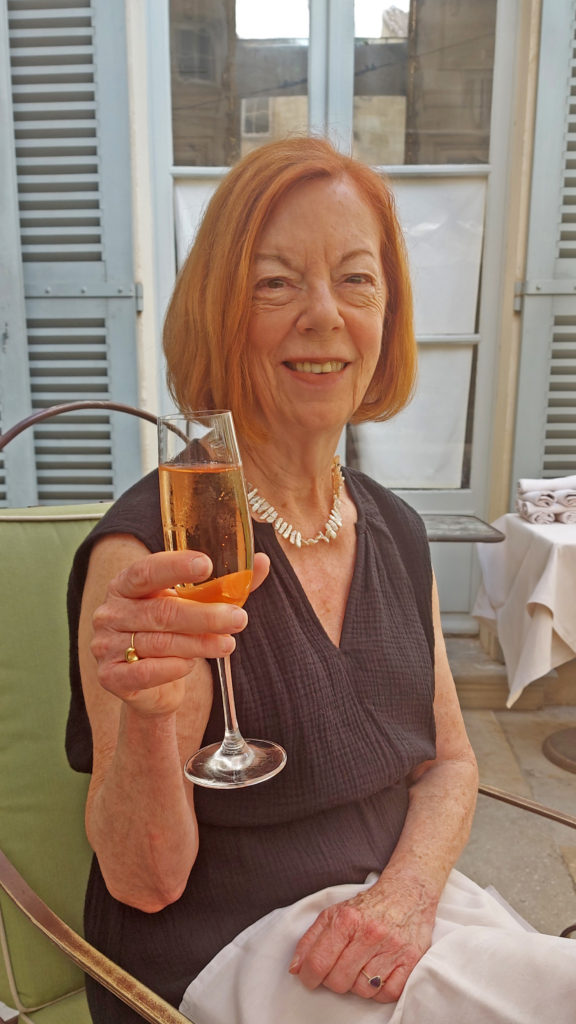
So…sometimes we make mistakes. I don’t know why I couldn’t find the courage to publish this a year ago…why “perfectionism” has held such a shadow and depression too, but today…starting to come out of the darkness also means really appreciating all of the Beauty that I have lived and do. So here we go, Florent. I really wanted to write an article about you for the American press. Maybe I still will someday. “Stars” do not define us. I know that all too well from when I was an actress. And my beautiful Mom is 76. She teaches me well. May we all take inspiration in, wherever we may find it.
A birthday poem
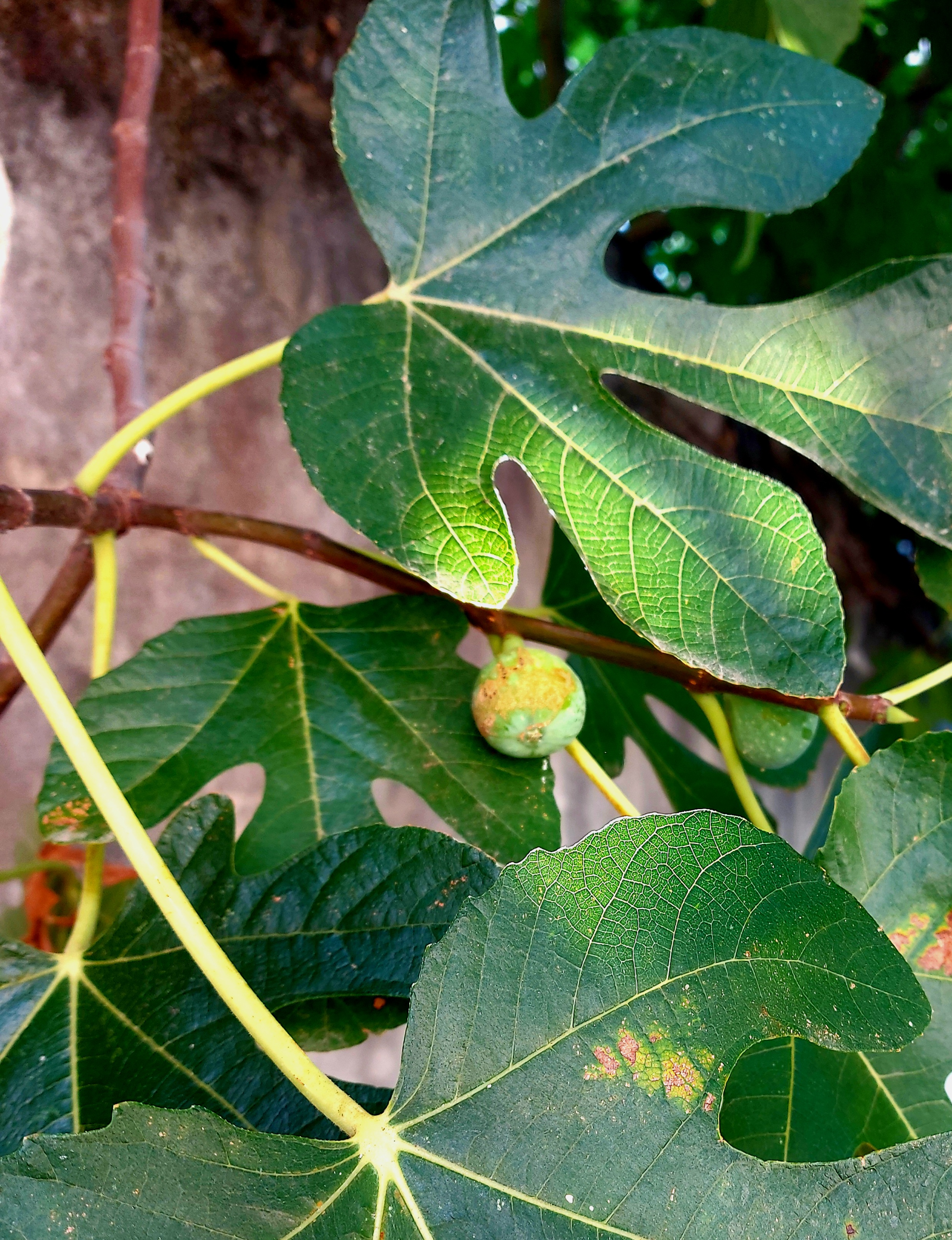
I woke up this morning Hungry For Beauty At this New turn Around The sun. So I set Out with Eyes open. “It’s what keeps Me alive,” I later told. A truth or Faith of what is Wrung From this existence. The promise Of baby figs Hidden Under stained glass Leaves. The tremor Of his voice When He is laughing. Just A sky. Or wind. Any old one. The finding And holding Of these Is The most blessed Job that I Have ever done.

Written quickly on my 53rd birthday. I wish that I could make my photo smaller! But I am still a wide-eyed dreamer, there is hope still. I am in love, my family is wonderful, my health pretty ok and you are my friends since a longtime now. Thank you for reading, always.
August is the dust
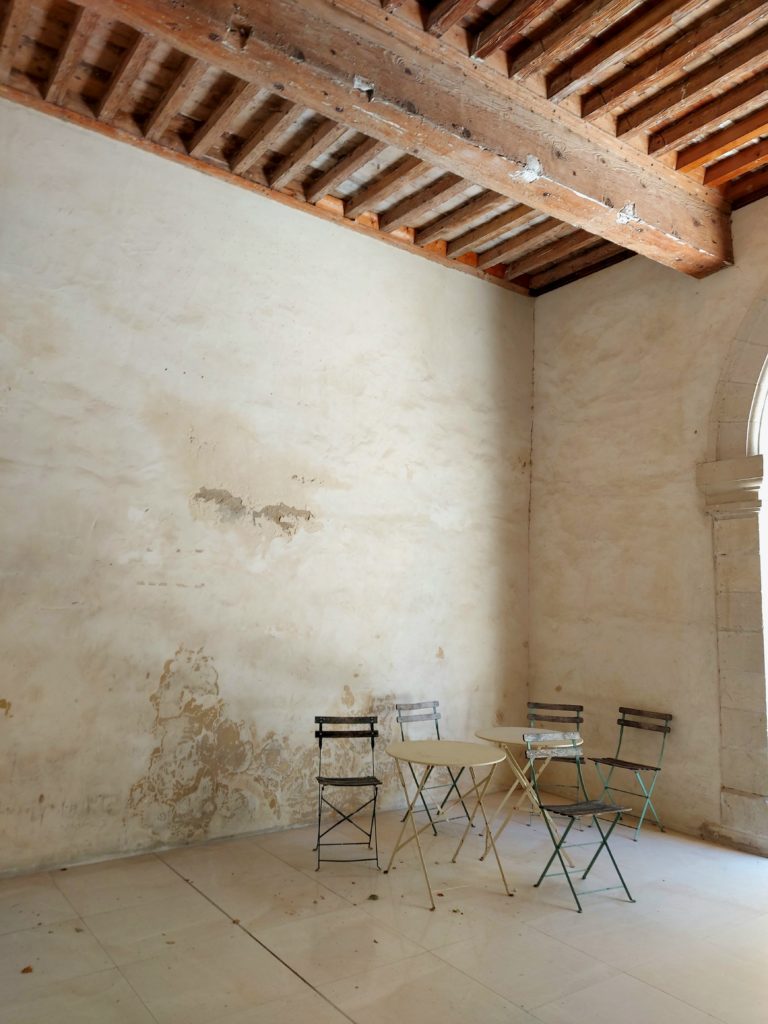
August is the dust That hurts The throat That Once roared a lion. Quiet, we Stand stupefied beside a mannered marionette Magnified By some sort of Nothing horizon. No savannah To sprawl Urban pools To call We lie While denying All our Best. Supermarket express then we we wait On the corner boulevard Tough fruit Stone peaches rolling in mouth, Hot lion On a billboard, just above, preaching we nod, Hot lion, hot lion, yes.
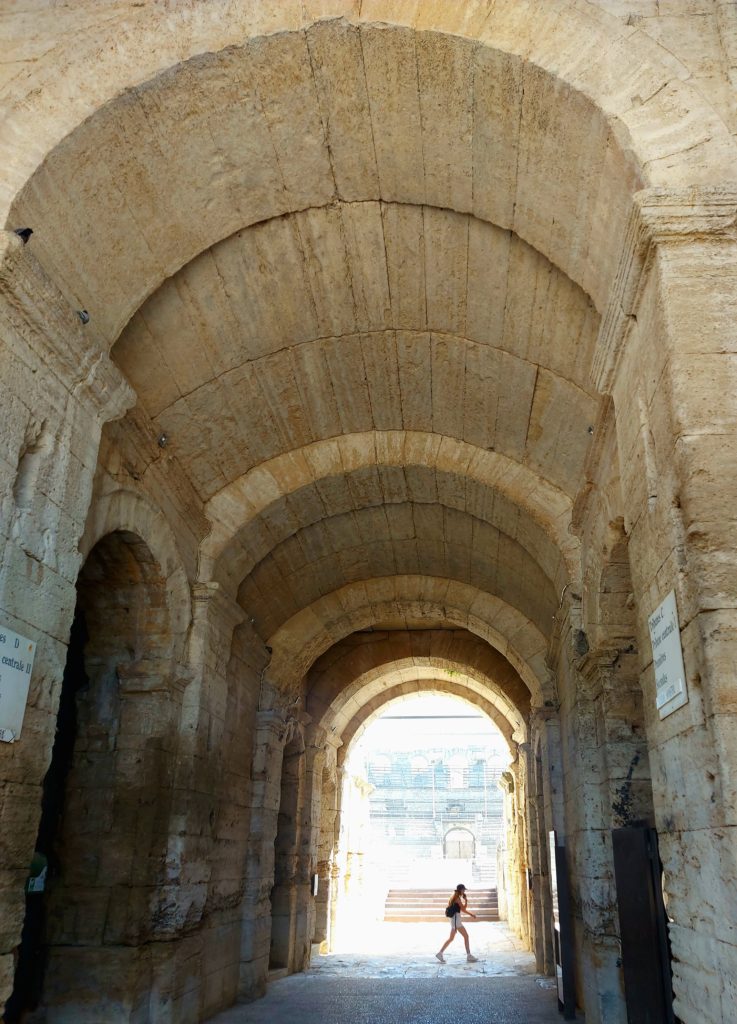
I know this is a different style of poem/ writing for me, more feeling than literal. But I wanted to share it, so here we go. There is so much going on right now that goes beyond a calendar season. Will we be able to stand up? We have been hit so much and constantly with tough news. I believe in us and Hope we will cleave cleanly the false from the true.
One Perfect Day
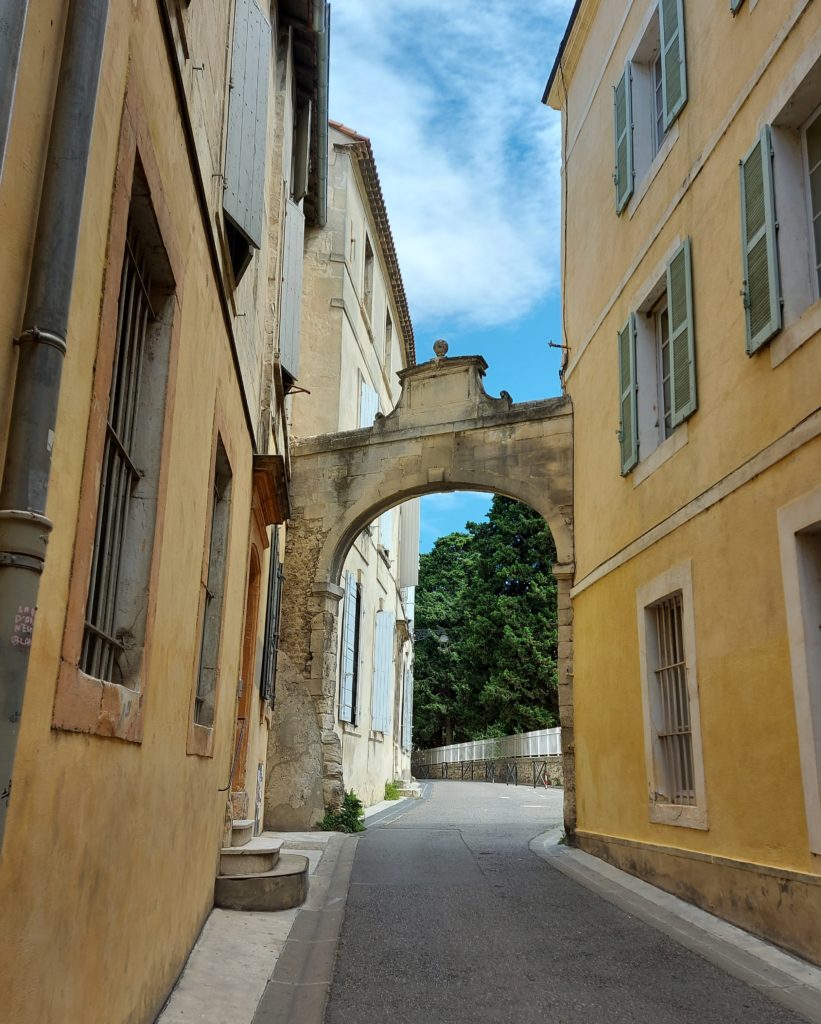
I have been fighting against Perfectionism for most of my adult life. My Dad pushed it upon my Sister and I so much that it is still a knee-jerk reaction to try and please or “do it right” out of fear that it was the only possible way of being loved.
That began to change when I left behind my life in New York City and started to travel. I had no idea what I was doing, I could know longer incarnate the peculiar glamorous role that I had scripted for myself and carefully curated. As that facade cracked open, I began to see less tightly and more lovingly, including, slowly, towards myself. And when I moved to Arles in 2005, I was surrounded by a forever echo of that awakening. Wabi-sabi couldn’t be more prevalent in this wondrous old town and that is precisely why I love it so. Complicitly, it let me be, well, just me.
And so if I announce here the title of “One Perfect Day,” it is packed with caveats gallore. I mean, rather simply, a series of events that felt absolutely right for me, all packed into less than 24 hours. How good to breathe without the fear of the current state of world affairs shortening my breath but rather to just be present, minute to minute with hope in my heart.
The day began officially once the coffee had kicked in, as per usual (I am not held accountable for anything that comes before). And it was greatly needed as I was rising early for once, half-stumbling, half-running to take the train to Arles. For I had a job to do, yes another beyond finishing after midnight at the hotel where I work evenings as a receptionist. It was to be only my second walk since COVID had struck but I wasn’t nervous, only content. And when I met the women I would be walking with, I could see the curiosity in their eyes and knew that we would be a good fit.
I am so proud of my historical walks in Arles. That particular ‘p’ word is one that I use rarely, a leftover from the other self-exclusionary one, perfectionism. But I worked hard while preparing them and still continue to do so as our notion of what history is actually evolves along with the galloping advance of science. I do my research but I also laugh – the walks are the best of both worlds between my previous careers as actress and journalist. The biggest challenge is that I simply cannot ever shut up until my guests eyes start to glaze over and then I know that I have gone too far. 2500 years of history is a lot to swallow in one go.
As this was a whirlwind of a walk at only a scrappy hour and a half in length, that never seemed to be the case and it was with warm thank you’s (and even a smattering of applause when I finished) that I walked away with a glad heart. For it had been some time since I had really done my own private walk of Arles, just for me. So I had to restrain myself from dashing to favourite streets, each packed with endless memories or anecdotes. It was a “Best of” for this once girl who was lost in Arles. Then found. Then lost again.
I arrived at Cocorricco (named after the French version of a rooster’s crow) nearly exactly at noon, which is considered quite early in our beautiful Provence. Their menu of the day appealed and I crunched through my spicy spring roll while burning my fingertips, then slurped up the sauce of my vegetable stacked fish, finishing with a crack of bread and a second glass of rosé. Satiated through and through, I left the rough and ready Arles for the winding streets of a more elegant Avignon.
Home again, I slept for hours. Such a luxury unto itself. A sleep without troublesome dreams to touch me. With a knock at the door, my Honey had arrived, smartly dressed as he likes to be. I followed suit (although not quite literally, a swaying dress instead) and was soon tottering the most dangerous cobblestone street in Avignon while balancing on platform espadrilles. Dinner at Le Vintage was like a little “Welcome Home” party. I have written about them often over the years and they have not slipped in their hospitality at all. Sebastien, the owner, had put a bottle of my favourite Famille Perrin Côte de Rhône to chill in advance of our arrival. I shyly introduced these old friends to my handsome companion and it felt natural, simple, real. We ate well and heartily for that is what Le Vintage does best and were delightfully surprised to find out that when the bill came, there was none. And yet, there was no time for long rémerciements for the tick-tock was clicking and we were soon off…to the Opéra.
It was to be his first classical music concert and yet we were both equally excited. The headliner of the bill was Jordi Savall, whom I had long wished to see play live. Surrounded only by two other musicians, with grey hair and beards all, he brought to life le Moyen Age effortlessly until there was no longer a sense of time beyond the rise and fall of the notes. We leaned forward on the brass railing, drinking them in. Later, I curled my head against his shoulder, never closing my eyes. I listened with a gilded appreciation, like the massive chandelier winking in the dark overhead.
The concert and dinner had been a surprise on my behalf and yet the evening was not yet ready to be done. “I don’t know if this will work, but are you up for trying one more thing?” I asked as the crowds swirled onto the Place de l’Horloge. He nodded with that smile that never fails to make me swoon and we were off, down a tiny path hewn between the rock solid foundation of the Palais des Papes.
He had often heard me speak of La Mirande. This five-star hotel and Michelin-starred restaurant had won my heart from the first time I had dared pass through its glass doors. “Is it still possible to get a drink?” I asked at the reception with what I hoped was a winning grin. It was. We settled in to a settee for two not under the eaves of the atrium but in my favourite dark corner of the plush satin-walled bar. And we had it to ourselves. Nary a guest in sight. As we sipped, we quieted. With hands entwined, all that was left of this One Perfect Day was the most important aspect of all, beyond Beauty or History or Culture. One that arrived naturally and entirely on its own. It was – and is – our Love.
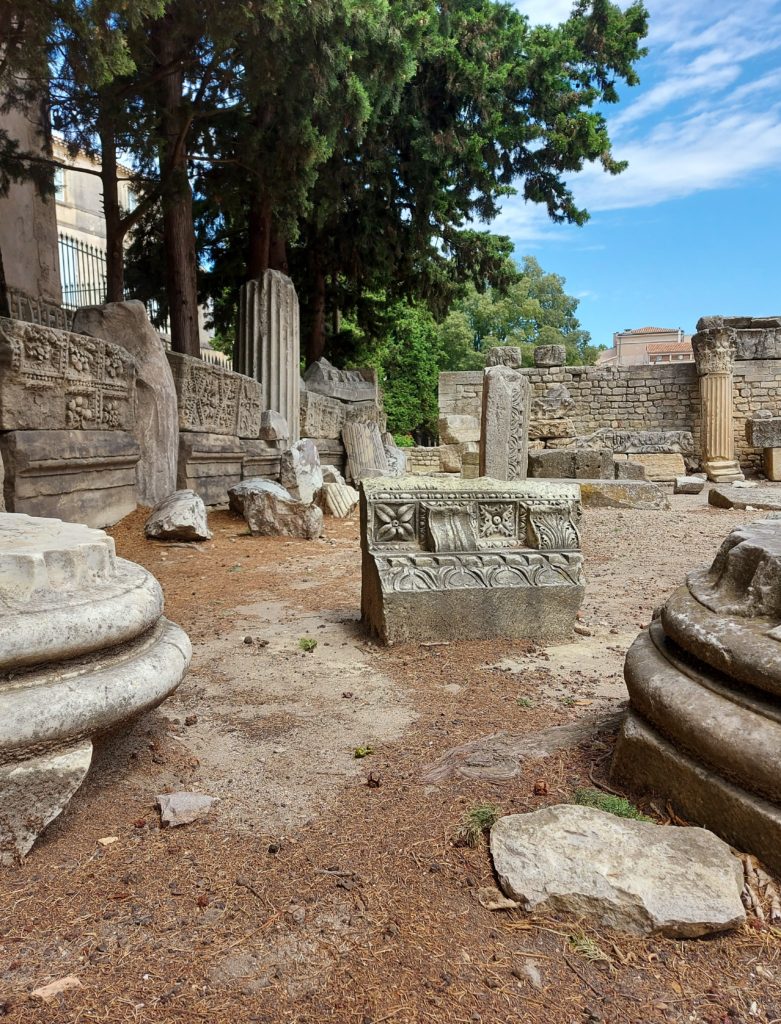
A Summer Longing, past yet present
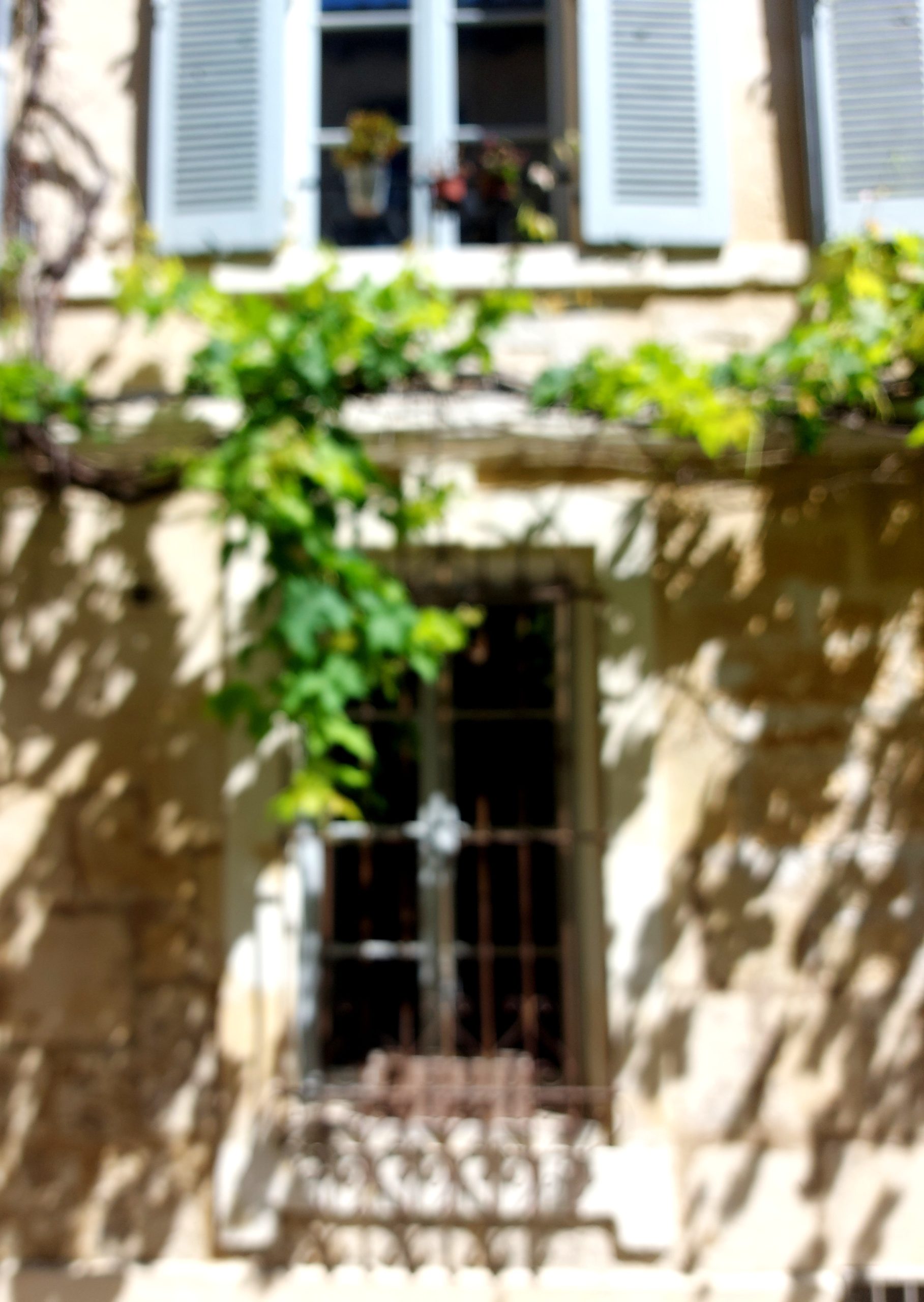
My Mom would be
the first to tell
that I am being
overdramatic.
That 91 kilometres
is only
56.488 miles.
And that the breadth
of his kiss
(and kindness)
should carry
from here
But when tonight
the door into
I wondered how far
from being alone,
how close.
I wanted just to
be held, as
Tight, tight.
For a bit of reassurance
on a certain midnight
that tomorrow
would, most likely,
better.
It’s nothing, I know
it is less than anything
in complaints, merited.
So I will be
with my wishes.
I won’t tell you
least of all, him
how very
I would have liked
that he could
somehow been
then, as in, now.
(me tied to
him and him
arms and legs jumbled,
sleeping peacefully.)
A new poem. Missing my sweetheart and Arles. These photos are from a recent visit where I was fixed on seeing what has remained instead of changed. Yes, I am not only dramatic, but a nostalgic girl as well.

Photos from Arles

Blogs from Arles
Latest blog posts from arles.
- Smaller Text Larger Text
- Home /
Video: Good Morning from Arles
Waking up with the church bells in Arles is a fine start to another Provence day in the south of France. I just had to share my groggy stream of unconsciousness…the smell of the sheets ( Who slept here? ), that lovely confusion before you first open your eyes ( Where am I? ). Then, throw open the shades and greet the world — it’s Provence!
When on the road (and traveling well), each day is a cornucopia of learning, images, people, new ideas, and memories. Inspired by this hotel balcony view, I’ll slog happily through another day of research to make our Rick Steves’ France guidebook work even better for our travelers.
— Join our traveling community — connect with me on Facebook and Twitter .
Video: Drunk History in Arles
Moonlight, wine, and history — with a Roman obelisk as a swizzle stick. That’s my way to cap a hard day of guidebook research updating Arles in the south of France.
I like the idea that a good guide can be dropped in any square in Europe and give an impromptu talk to inspire their travelers to love history: an ancient obelisk, a people’s toilet, a Van Gogh sky, and a Romanesque tympanum…all woven into some happy travels.
Wine is an amazing value here — and if you wander around town with your romance pedal to the cultural metal after a glass or two, it gets even better. Trappy Havels!
Walking in Van Gogh’s Footsteps in Arles
Visiting Arles, travelers tune into the story of Vincent van Gogh. And the city makes it easy. Here’s a little excerpt from our Rick Steves’ Provence & the French Riviera guidebook (and an example of how great it is to have Gene Openshaw’s help in our art coverage):

In the dead of winter in 1888, the 35-year-old Dutch artist Vincent van Gogh left big-city Paris for Provence , hoping to jump-start his floundering career and social life. He was as inspired as he was lonely. Coming from the gray skies and flat lands of the north, Vincent was bowled over by everything Provençal: the sun, bright colors, rugged landscape, and raw people. For the next two years, he painted furiously, cranking out a masterpiece every few days.
Only a few of the 200-plus paintings that Van Gogh did in the south can be found today in the city that so moved him. But in Arles , you can walk the same streets he knew and see places he painted, marked by about a dozen steel-and-concrete “easels,” with photos of the final paintings for then-and-now comparisons. Here are two examples, accompanied by the text from our book.

The Yellow House Easel Vincent arrived in Arles on February 20, 1888, to a foot of snow. He rented a small house on the north side of Place Lamartine. The house was destroyed in 1944 by an errant bridge-seeking bomb, but the four-story building behind it — where you see the brasserie — still stands (find it in the painting). The house had four rooms, including a small studio and the cramped trapezoid-shaped bedroom made famous in paintings. It was painted yellow inside and out, and Vincent named it…“The Yellow House.” In the distance, the painting shows the same bridges you see today, as well as a steam train — which was a rather recent invention in France, allowing people like Vincent to travel greater distances and be jarred by new experiences. (Today’s TGV system continues that trend.) Today’s train line survives but is overgrown as the bridge over the river was destroyed in WWII.
Freezing Arles was buttoned up tight when Vincent arrived, so he was forced to work inside, where he painted still lifes and self-portraits — anything to keep his brush moving. In late March, spring finally arrived. In those days, a short walk from Place Lamartine led to open fields. Donning his straw hat, Vincent set up his easel outdoors and painted quickly, capturing what he saw and felt: the blossoming fruit trees, gnarled olive trees, peasants sowing and reaping, jagged peaks, and windblown fields, all lit by a brilliant sun that drove him to use ever-brighter paints.
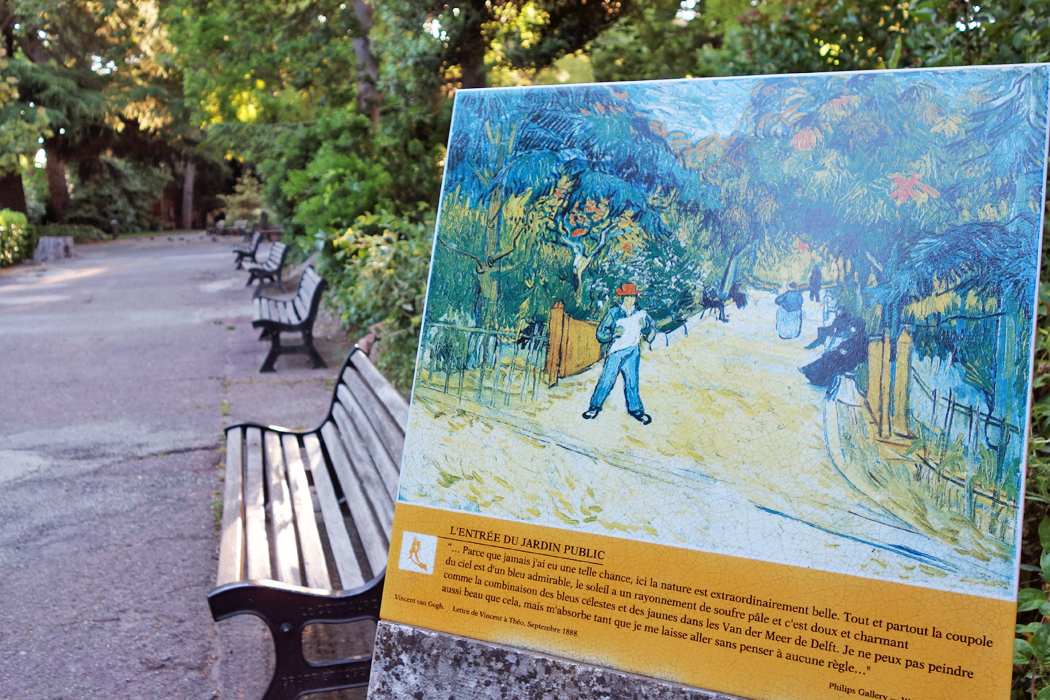
Jardin d’Eté Easel Vincent spent many a sunny day painting the leafy Jardin d’Eté. In a letter to his sister, Vincent wrote, “I don’t know whether you can understand that one may make a poem by arranging colors…In a similar manner, the bizarre lines, purposely selected and multiplied, meandering all through the picture may not present a literal image of the garden, but they may present it to our minds as if in a dream.”
Vincent never made real friends, though he desperately wanted to. He palled around with (and painted) his mailman and a Foreign Legionnaire. (The fact that locals pronounced his name “vahn-saw van gog” had nothing to do with his psychological struggles here.)
Also, in my Travelers Café, Cameron just posted a tragically funny (and all too true) tale about keeping the entry for The Last Supper up to date in my guidebook.
The Legacy of the French Revolution in Arles
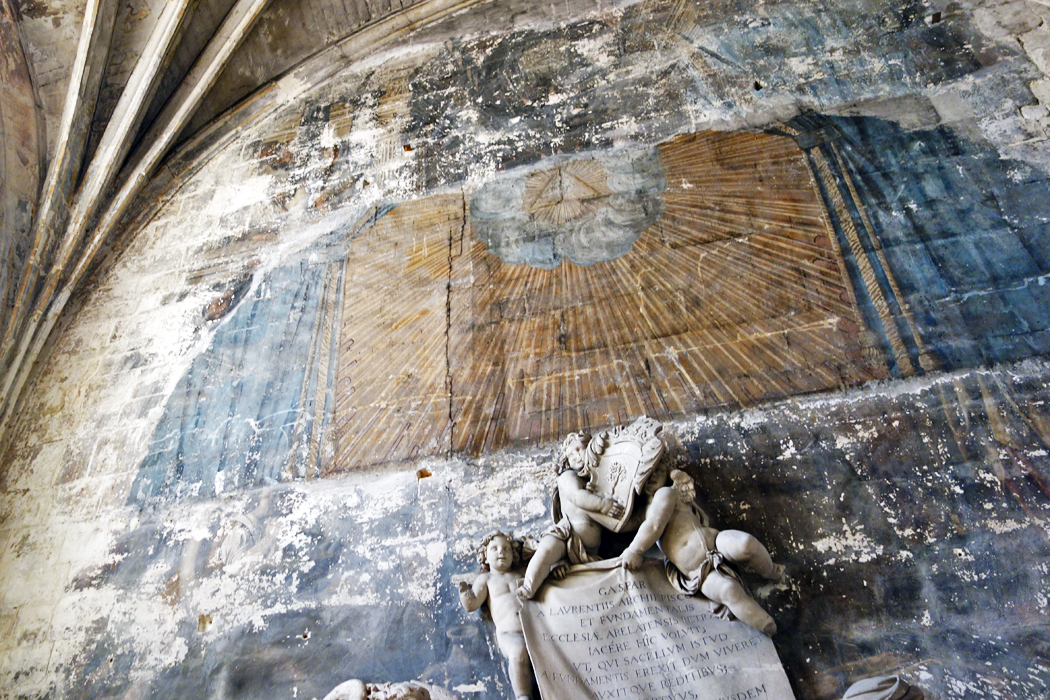
As a student of history, I’ve long been fascinated by the fanaticism of the French Revolution (1789), which challenged every aspect of French society with “the test of reason.” If something wasn’t logical, it was swept away. For example, the calendar — rather than 7-day weeks, with months of 30 or 31 days (not to mention the weird February thing) — was turned into 12 months of 30 days each (divided into three ten-day weeks), with five days left over for service to your country.
Also during the Revolution, churches were turned into “temples of reason.” I’d never actually seen a tangible sign of this. But recently in Arles — checking, fine-tuning, and beefing up my coverage of the town’s sights for our France guidebook — I stepped into St. Trophime Church in search of another dimension. In a side chapel was this faded painting from 1789: a triangle within a sunburst, celebrating reason rather than religion.
It’s so fascinating to actually see the layers of history here. Has anyone seen other examples of this in France?
Arles, Where Walls Are Unpainted On Purpose
Arles , in the South of France, is not as rich as Avignon or as trendy as Aix-en-Provence . But it feels gritty and real, with a patina of life that I find very seductive. When I saw this gorgeous wall, as if awaiting a painter’s attention, I asked if it was an initiative of the town or tourist board. My guide said, “No, that’s just the way we like it.”
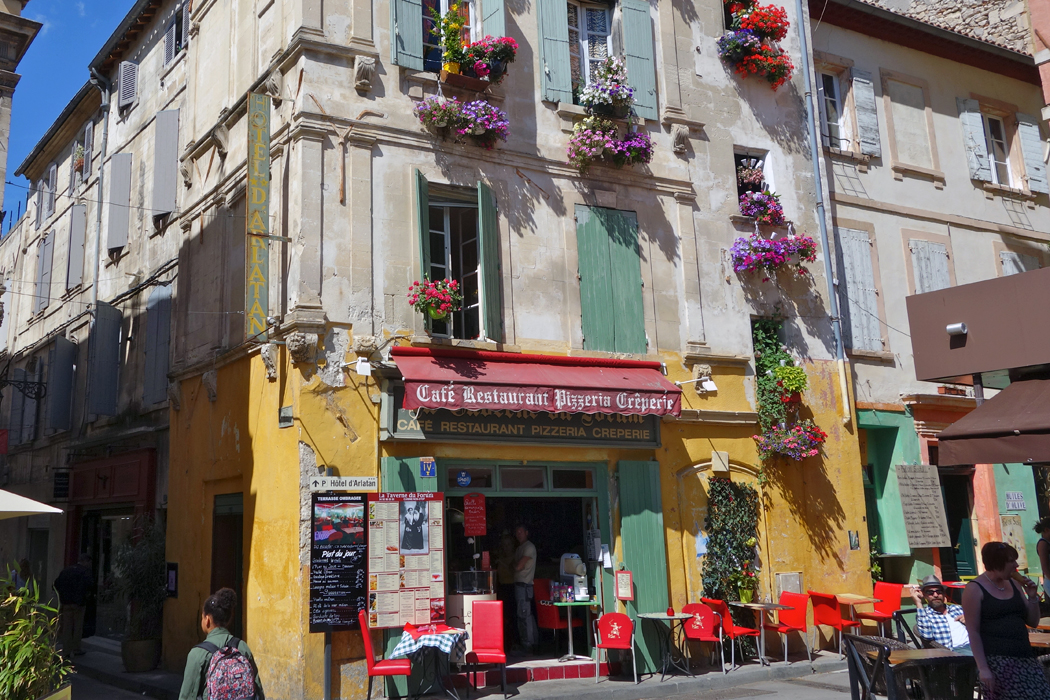
Also, Cameron is highlighting lesser-known Milan in my Travelers Café .
France Travel Blog
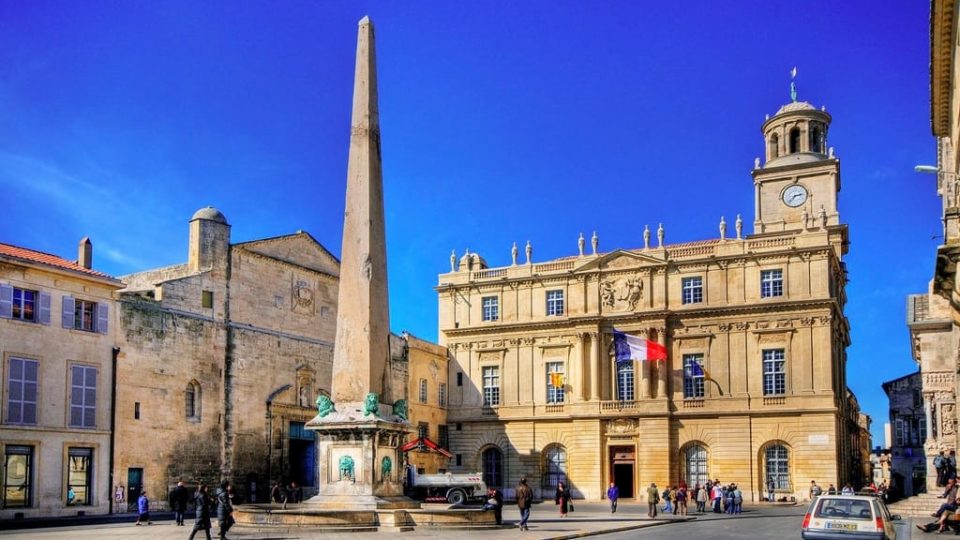
Is Arles Safe?
The city and commune of Arles are located in the south of France on the Rhône River and is heavily associated with Vincent van Gogh, the Dutch painter. There, he made some of his widest-known paintings. Arles is a fantastic town on boards of the Rhône with some well-kept Roman structures like an Amphitheatre that is used for bullfighting today. The city is an excellent base for visiting the popular tourist areas surrounding it, like the Camargue , Nimes , and Avignon .
Arles is a small safe French city where you will hardly have issues exploring even if you travel alone. That is why moving about is considered safe, as public transport is efficient while crimes are also low. If you are looking for a French city, small in size, and overly peacefully in a buzzing place like the south, Arles might be your surest bet. Locals are welcoming and often eager to help visitors in one capacity or the other.
>>Also Read: What is Arles Famous For
Here are Things to Know About Safety Arles:
Overall safety.
As earlier hinted, Arles might be the safest place in the south, but there are some registered crime cases even though they are not in the numbers of a place like Marseille and Paris , for example. This means that even if the tourist office and blogs exhaustively say how safe the commune is, visitors ought to watch their belongings close enough.
In addition, Arles is not like other French cities that have massive numbers of pickpockets and beggars that can ruin your travel experience. The streets are walkable, and there is so much to do during the day without having to fear any danger. The overall risk level is low in Arles.
Transport and Taxi Risk
Arles’ old town center is quite small, making it easy to be explored on foot. Some popular attractions are not far from there, so you might want to consider a vehicle for that. However, riding a bike across the town is among the best ways to explore Arles. The bike routes guarantee the safety of riders, but you can still rent a car to see the city. If you do not fancy walking around, a taxi can help with moving about. But be careful as some taxi drivers can have been thieves. Always board taxis with a general plate number. A vehicle without a plate number or with a suspicious one is not right.

Pickpockets Risk
As small as Arles is, pickpockets can have a field day. Do not let that happen to you. Keep your valuables closer to you, and do not get distracted. Sometimes, pickpockets operate in a group with the hope of distracting and stealing things from unsuspecting persons. Also, do not leave your possessions in insecure places. Once you stay aware and sharp, safety is sure. Pickpocket risk level is low.
Mugging Risk
The chances of mugging in the city to are low. In fact, a good number of reported cases are not related to tourists. However, a low level of crime rate does not mean that crime is absent. Visitors should be discreet. Walking alone in poorly-lit streets is an invitation to dangerous groups. Then do not walk alone with expensive accessories in some dark areas.
Terrorism Risk
While there are no records of terrorist attacks in the city of Arles, the chances of this occurring are significantly small. This is France, where in recent years, terror groups have threatened and attacked with lives going for it. 2015 and 2016, in particular, were tragic for the French. Since then, the military presence has been visible in the country’s main tourist attractions. The military might check your bags prior to entering the museums and other attractions. So, expect some delay when you visit some major tourist spots at certain times.
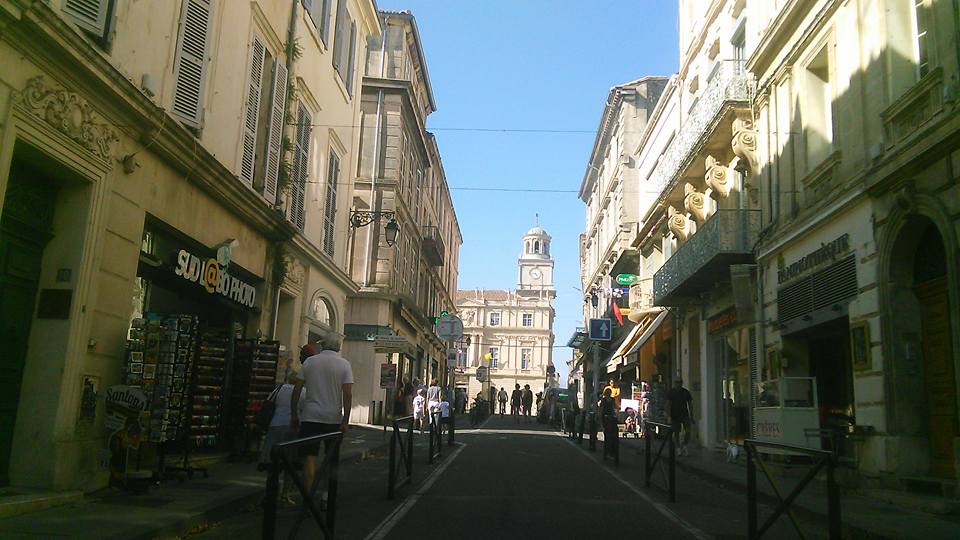
Not too many scams are known in Arles, but they are totally avoidable. Any visitor will be able to get a whiff of foul play when the fraudsters come around. But be careful when you go to the markets or stalls. Ensure that you check your change after you purchase an item. The scam risk level in Arles is low.
Women Travelers Safety
Arles is considered to be safe for women traveling. In fact, solo women travelers will have a great time exploring the streets and other specialties that the town has to offer. Choose your accommodation carefully and let people close to you know about your plans. Do not walk in poorly-lit spots in late hours and avoid deserted areas. That is how to stay safe in any city, especially a foreign one.
Parking can difficult in France, but in Arles, it will hardly be a concern if you will be discovering the city from your car. In areas that are notorious for parking issues, securing space is often the most tedious one. It gets more excruciating if one’s vehicle is tampered with or stolen. At the walled part of the city, there is a public parking lot on the major street. This place is a great spot for parking because it is close to a police station. The municipal parking structure on the Boulevard des Lices is another great spot.
Is Arles Safe – Summary
Arles is a safe place to visit all-year-round. It offers sublime Roman monuments you would not see anywhere else, and the city’s landmarks are a beauty to behold. Staying safe in the city is not difficult as long as you adhere to instructions from the tourism office and you pay close attention to what goes on around you. Arles is the place to be for a lull and impressive hospitality that gives it a thriving city life despite its size.
Peter is the editor of France Travel Blog. He has traveled to France many times and is ready to share the knowledge in this travel guide for France.
Related Posts

Is France Safe?
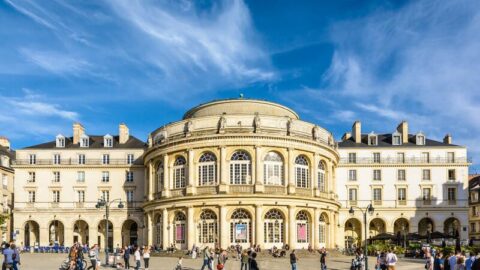
Is Rennes Safe?

Is Le Marais Safe?

How to Make a Travel First Aid Kit
Recent posts.
- Marseille Unveiled: Immerse Yourself in the Charm of the Mediterranean with a Captivating City Break
- A Beginner’s Guide to Road Cycling
- 5 Things to Look for When Buying Digital Cameras
- How to Take High-Quality Photos: Essential Tips And Composition Rules to Consider
- Can You Drink Tap Water In Paris? (2023)
- Entertainment
- Things To Do
- Travel Guides
- Travel Ideas
Social Links

Best Beaches in France

How to Get from Paris to Avignon

Is the Palace of Versailles Worth Visiting?

Best Cigar Lounges in Paris

The Absolute Must-Haves for Any Trip Through France
Hit enter to search or ESC to close.

IMAGES
VIDEO
COMMENTS
Although Nice is more famous, Arles offers countless delights for history lovers as well as nature lovers away from the crowds in Nice. Contents [ hide] 1 Roman Historical Sites. 2 Discover Van Gogh's connection to Arles. 3 Explore nature in Camargue National Park. 4 Festivals in Arles. 4.1 Easter in Arles.
About Arles. Before we launch into our perfect day trip itinerary let's look at a few facts. Ninety km (60 miles) from Marseille, and 250 km west of Nice, Arles is a great destination to combine art and travel.. The city, population about 52,000, is located in Provence in the South of France.
Here is a list of some of the best things to do in Arles. 1. Roman Amphitheater (Arena) Whether you arrived by train or by car, head over to the Roman Amphitheater and start your day off here. This arena was built in 90 AD and once held 20,000 spectators.
Located on the Rhône River, the French city of Arles is the place every tourist will want to visit. The place is popular for its deep Roman roots and being the home of the iconic Dutch painter, Van Gogh. During Roman times, Arles was one of Gaul's most significant cities. Today, it is home to more than 50,000 people and embellished with monuments. To explore the city with ease, there is a ...
4. Van Gogh Heritage. Source: flickr. Van Gogh Heritage. Vincent van Gogh came to Arles in 1888 and lived here for a year, at a time when his mental health was deteriorating . As we'll see, he completed some of his most acclaimed paintings in the city, like The Night Café, Café Terrace at Night and Van Gogh's Chair.
6. St. Trophieme Cloister & Church. St. Trophieme Church is located in the center of Arles (on Place de la Republique) and, like most churches in France, admission to the St. Trophieme church itself is free. Built during the medieval era, this church is known for its Romanesque sculptures on the front facade.
Hose Fountain outside the Fondation Van Gogh. L'Espace Van Gogh in Arles. 2. L'Espace Van Gogh. L'Espace van Gogh is the next attraction in Arles that's a Van Gogh lover's magnate. This former hospital is where Van Gogh, often drunk and psychologically impaired, sought treatment after his bloody self mutilation.
This is also the high season for Arles and Provence, so be sure to book ahead! The nearest airport is Marseilles, a 45 minute train or car journey. AROUND ARLES. Arles Ampitheatre. Place du Forum. Vincent Van Gogh Foundation. French Coffee Shop. A casual and really popular little eatery with a great range of pastries to take away.
The Amphitheatre or the Arenes of Arles. The Amphitheatre is the best-known monument in the city. This Roman amphitheater was built in 80 AD and had a capacity of 21,000 people. For more than 400 years this oval arena hosted spectacles for the Arles inhabitants.
Top rated tours & experiences in Arles: ☆ Arles 2-Hour Private Walking Tour. ☆ From Arles: Half-Day 4×4 Camargue Safari. ☆ From Avignon: In the Footsteps of Van Gogh in Provence. ☆ From Avignon: Half-Day Van Gogh & Carrières de Lumières Tour. Cultured Voyage's accommodation picks in Arles:
11. Jardin d'Été. Nestled in the heart of Arles, near the iconic Arles Amphitheatre, Jardin d'Été is a tranquil sanctuary of natural beauty and calm. It's a lush, green haven, making a visit to this sanctuary among the best things to do in Arles for those seeking a serene escape amidst vibrant flora.
Here are the best activities and tours. Visit the Museum of Ancient Arles. Walk in the Camargue Park. Participate in summer festivals. Resources, FAQs and Tips. Nestled between Nîmes and Avignon in the Camargue, Arles is a must-see city if you're spending time in Provence. Be prepared for an incredible journey through two thousand five ...
The shutters, painted in hues of lavender, sky blue, and sunshine yellow, all add a unique charm to the historic architecture of Arles. If you're visiting during the summer, make sure to attend Les Rencontres d'Arles, the city's renowned festival dedicated to photography and visual arts. Many exhibitions are held in historic venues ...
Arles. France, Europe. Roman treasures, shady squares and plenty of Camarguais culture make Arles a seductive stepping stone into the Camargue. And if its colourful sun-baked houses evoke a sense of déjà vu, it's because you've seen them already on a Van Gogh canvas - the artist painted 200-odd works around town, though sadly his famous ...
Vincent arrived in Arles on February 20, 1888, to a foot of snow. He rented a small house on the north side of Place Lamartine. The house was destroyed in 1944 by an errant bridge-seeking bomb, but the four-story building behind it — where you see the brasserie — still stands (find it in the painting). The house had four rooms, including a ...
Arles, Bouches du Rhone, France. Yann Guichaoua-Photos/Getty Images. Arles, a UNESCO World Heritage site, is located along the Rhone river, where the Petite Rhone breaks off to the west on its way to the sea. Arles dates back to the 7th century BC when it was the Phoenician town of Theline, and its Gallo-Roman heritage is seen in the ruins ...
Charming Provence: Arles. Provence area in southeastern France is filled with beautiful landscapes, historical towns and lovely little villages. Road trip, using the narrow, winding national roads, is the best way to explore Provence and enjoy the natural beauty of the area. One of our destinations in Provence was the city of Arles, 40 km south ...
YMT Vacations' has multiple Rhône river cruises, including Rendezvous on the Rhone and the Rhône River Cruise in Lavender Bloom, that take you through the charming town of Arles. To join one of these unforgettable journeys, call your travel consultant or YMT Vacations at 888-860-1969. Share this: Arles, France is known for its ancient ruins ...
Beyond the red carpet. I took the garbage out just now. On the corner, there is a giant old house with a walled-in garden. Sometimes there are birds singing and that was the case today. So I stood really still, tilting my head upwards, craning my neck to look past the waves of bamboo and into a new-leafed tree. "Magpie?".
Arles Travel Blogs, Photos from TravelBlog.org. Background: Although ultimately a victor in World Wars I and II, France suffered extensive losses in its empire, wealth, manpower, and rank as a dominant nation-state.Nevertheless, France today is one of the most modern countries in the world and is a leader among European nations.
Visiting Arles, travelers tune into the story of Vincent van Gogh. And the city makes it easy. Here's a little excerpt from our Rick Steves' Provence & the French Riviera guidebook (and an example of how great it is to have Gene Openshaw's help in our art coverage): In the dead of winter in 1888, the 35-year-old Dutch artist Vincent van ...
Arles France - Top 10 Travel Guide 4K. A short cinematic travel video of the highlights of the historic city of Arles#arles #france #travel Music Licensed fr...
The city and commune of Arles are located in the south of France on the Rhône River and is heavily associated with Vincent van Gogh, the Dutch painter. There, he made some of his widest-known paintings. Arles is a fantastic town on boards of the Rhône with some well-kept Roman structures like an Amphitheatre that is used for bullfighting today. The city is an excellent base for visiting the ...